














The overarching objective of the multi-asset team is to achieve real (i.e. inflationadjusted) returns of three to five percent over the medium term, while also limiting negative returns over a rolling thirty-six-month period.
A multi-asset approach to achieve this objective offers two potential avenues for generating returns. Firstly, it enables tactical allocation among asset classes (such as equities, fixed income, and cash) when disparities in relative valuations emerge. Secondly, it allows for the selection of the top-performing assets within each asset class. When constructing portfolios, the team is largely unconstrained by benchmarks. Each individual security included must significantly contribute to performance while also maximising the number of independent or non-correlated positions in the portfolio to mitigate concentration risk.


J oin the FPI at Africa ’ s largest gathering of busines s leaders, professionals and entrepreneurs on 10 September 2024 at Sandton Convention Centre .

Lelané Bezuidenhout, CFP®, CEO, Financial Planning Institute of Southern Africa
The CEO of the Financial Planning Institute of Southern Africa shares the FPI’s latest news.
elcome to this edition of Blue Chip magazine –the official FPI-supported industry publication.
This year marks the 35th annual FPI Professional’s Convention, and it’s always an exciting journey to devise the theme and plan each year’s event. We have planned this convention with an approach of “for-members-by-members”, and this year has been no exception. We have gathered to share great ideas and reflect on the potential vision for the convention, focusing on practice standards, management and thought leadership over technical content.
This year marks the 35th annual FPI Professional’s Convention.
For technical discussions, the FPI hosts other events throughout the year like the Annual Refresher, Retirement and Investment Masterclass as well as various other masterclasses focusing on estates and trusts, ethics and AI. If you missed any of these events, you can still register to access the recorded content via our website and the FPI portal.
Nevertheless, let me dive into providing all the details about this year’s convention in the breathtaking city of Cape Town, returning for the first time since 2016 at the Century City Conference Centre.
Our theme, Cultivate Growth to Harvest Excellence, perfectly captures our goals to foster professional advancement and exceptional capabilities within our profession.
We have convened respected local and international speakers to share insights on the latest trends and updates in financial planning, such as growth mindsets, great company cultures and striving for overall excellence. The convention offers a broad
spectrum of topics, including innovative strategies, technological advancements and ethical considerations.
Participants are able earn up to 12 verifiable Continuing Professional Development (CPD) hours across various educational sessions. These are critical for maintaining our professional standards and keeping up with industry developments. Networking and collaboration are, as always, a significant part of the convention, providing attendees a platform to build valuable professional connections. I am also particularly excited about the variety and effort our exhibitors have put into impressing and engaging with attendees this year.
As is tradition at the FPI, the first day of the convention transitions into the Gala Dinner where we present several awards to deserving professionals. This year’s finalists for the Financial Planner of the Year are Gareth Collier, CFP®, Rudolph Geldenhuys, CFP®, and René van de Spreng, CFP®.
Congratulations to all the finalists!
Another highlight to look forward to is the announcement of the winners of the Diversity & Inclusion Award, Harry Brews Award, It Starts with Me Award, the student competition and recognising the Top Profession Competency Examination (PCE) candidates of the year.
On a note of gratitude, I would like to thank Soré Cloete, CFP®, Jill Larkan, CFP®, and Luke Martins, CFP®, for their years of dedicated
service on the FPI Board. Their contributions have greatly enriched our profession. We are thrilled to welcome Dan Bergland, CFP®, and Thato Mahapa, CFP®, to the board, anticipating great strides in moving our profession forward.
Looking ahead, we are transitioning to the Next Generation Standards starting in 2025, changing the format of our exam component to include a financial plan. The final PCE sitting in the current format is in October 2024. Registrations are open.
The FPI will also feature at LeaderEx 2024, where our volunteers will provide consumer education. Members will offer pro-bono one-on-one sessions, so check out www.mymoney123.co.za or www.leaderex.com for more details.
Lastly, in our commitment to enhancing the experience for our CFP® professionals, we have partnered with the Financial Planning Standards Board (FPSB) to launch digital credentialing, offering a new way for our professionals to showcase their certifications.
This is just one of the many ways we are driving value-driven innovation in our profession. If you have not seen or activated your credential yet, please contact membership@fpi.co.za to assist you.
That’s all from me for now.
Until next time.
Lelané Bezuidenhout, CFP®, CEO, Financial Planning Institute of Southern Africa
This year’s finalists for the Financial Planner of the Year are Gareth Collier, CFP®, Rudolph Geldenhuys, CFP®, and René van de Spreng, CFP®.
The purpose of financial advice is to assist investors and guide them to make informed decisions to achieve their investment objectives, says Edward Semenya, Alexforbes. However, he concludes that the true value of financial advice lies in the tangible actions and unique perspectives that financial advisors offer clients (page 46).
Hannes van den Berg, Momentum Advice, says that only when you understand advice, do you understand its value. An advisor offers a holistic approach to financial planning by considering all aspects of a client’s life and financial circumstances before advising on a financial plan. He says that positioning the value of advice is critical to the growth of the industry (page 20).
Rob Macdonald, Fundhouse, says that acting in the client’s best interest takes courage despite the risk this may pose to the client, the relationship and potentially to the financial planner’s income (page 66).
And while on the topic of courage and financial advisors – it is time for the 35th FPI Professional’s Convention and the theme is Cultivate Growth to Harvest Excellence. We pay homage to this theme by announcing the three runners-up of the FPI Financial Planner of the Year Award 2024: Grant Collier, Rudolph Geldenhuys and René van de Spreng. Blue Chip congratulates all three of you and celebrates the growth that you cultivated and the excellence you are harvesting (page 26).
And so, too, we celebrate other financial planners who have shown courage and cultivated growth to harvest excellence: Lara Warburton, CFP®, winner of the 2023 Financial Planner of the Year Award, who encourages other financial planners to enter this competition and view it as a part of your personal growth as a professional. (Don’t miss her article on page 70.) Kim Potgieter, CFP®, won the FPI It Starts with Me Award 2023 for her unyielding dedication to promoting the CFP® certification (page 34). Olwethu Masanabo, winner of the FPI Diversity and Inclusion Award 2023, is celebrated for promoting the inclusiveness of diverse communities in the profession (page 33). Meet Stephan Lombaard, the 2023 Top Candidate Award winner on page 32.
While we celebrate those who cultivate growth to harvest excellence, we honour Lelané Bezuidenhout, FPI CEO, for growing the FPI to what it is today and making it an Institute of true excellence. Blue Chip speaks to her on page 28.
See you at the conference!
Alexis Knipe, Editor
Blue Chip Journal – The official publication of FPI
Blue Chip is a quarterly journal for the financial planning industry and is the official publication of the Financial Planning Institute of Southern Africa NPC (FPI), effective from the January 2020 edition. Blue Chip publishes contributions from FPI and other leading industry figures, covering all aspects of the financial planning industry. A total of 7 500 copies of the publication are distributed directly to every CERTIFIED FINANCIAL PLANNER® (CFP®) in the country, while the monthly Blue Chip Digital e-newsletter reaches the full FPI membership base. FPI members are able to earn three verifiable Continuous Professional Development (CPD) points per edition of the print journal (four per year) under the category of Professional Reading. Special advertising packages in Blue Chip are available to FPI Corporate Partners, FPI Recognised Education Providers and FPI Approved Professional Practices.

Publisher: Chris Whales
Editor: Alexis Knipe
Digital Manager: Kerenza Lunde
Designer: Monique Petersen
Production: Sharon Angus-Leppan
Ad sales:
Gavin van der Merwe
Sam Oliver Bayanda Sikiti
Venesia Fowler
Vanessa Wallace
Tahlia Wyngaard
Managing director: Clive During
Administration & accounts: Charlene Steynberg
Kathy Wootton
Distribution and circulation manager: Edward MacDonald
Printing: FA Print
PUBLISHED BY
Global Africa Network Media (Pty) Ltd

Company Registration No: 2004/004982/07
Directors: Clive During, Chris Whales
Physical address: 28 Main Road, Rondebosch 7700
Postal address: PO Box 292, Newlands 7701
Tel: +27 21 657 6200
Email: info@gan.co.za
Website: www.gan.co.za

Alexis Knipe
Column by Rob Macdonald, Head of Strategic Advisory Services, Fundhouse
(THREE-COMPONENT)
Column by Kobus Kleyn, Tax and Fiduciary Practitioner, Kainos Wealth
THE KEY TO
Momentum’s purpose is to build and protect its clients’ financial dreams
Meet the three 2024 FPI Financial Planner of the Year finalists
Blue Chip interviews Lélane Bezuidenhout, CEO of FPI
Meet Stephan Lombaard, the 2023 FPI Top Candidate Award winner
Blue Chip meets up with Olwethu Masanabo, winner of the FPI Diversity and Inclusion 2023 Award winner
Meet the 2023 FPI It Starts with Me Award winner, Kim Potgieter
What drives the shifts in global equity markets, asks Peter Foster, Chief Investment Officer, Fundhouse
ROUND TABLE SERIES
How and why a financial planner should use a DFM
COACHING SKILLS FOR PLANNERS
Introducing Old Mutual Wealth’s integrated financial coaching course
DO YOU HAVE A “TYPE”?
Finding the perfect investment partnership offshore, by Capital International Group 46 THE TRUE VALUE OF ADVICE
The notion of financial advice is an intriguing one says Alexforbes
48 POST-RETIREMENT ANNUITY OPTIONS AMID POTENTIALLY HIGHER INFLATION
Coronation Fund Managers explains the importance of choosing the right retirement income option within the context of higher inflation 51 LEVERAGING GAMIFICATION FOR ENHANCED RETIREMENT PREPAREDNESS ALONG MILLENNIALS
Innovative approaches are imperative to engage and educate today’s workforce
52 CAPTURING VALUE FOR CLIENTS FROM SOUTH AFRICA’S ETF BOOM
Kingsley Williams, Chief Investment Officer, Satrix attests that ETFs are an attractive option for investors 54 GAMES OF LOANS: CHOOSING AN INCOME MANAGER How do you choose an income manager
best suited to your needs, asks André van der Merwe, Head of Retail, Matrix Fund Managers
56 CAPITALISING ON GLOBAL OPPORTUNITIES
The case for South Africans investing in global income assets, by Bastian Teichgreeber, Chief Investment Officer, Prescient Investment Management
58 HOW MAZI MULTI-ASSET DELIVERS LONG-TERM RETURNS
As professional fund managers, our job is to provide investors with solutions that meet their requirements
60 ADDRESSING KEY RISKS IN A RETIREMENT PORTFOLIO
By Marius van der Merwe, Chief Executive Officer, Amity Investment Solutions
62 SUPPORTING INDEPENDENT FINANCIAL ADVISORS WITH GROWTH AND SUCCESSION
Carmel Wealth has recently received strategic investments from two global investment companies



























64
ROUND TABLE SERIES
Offshore investing: tax issues and jurisdictions
66
COURAGE: ESSENTIAL FOR AUTHENTIC FINANCIAL PLANNING
By Rob Macdonald, Head of Strategic Advisory Services, Fundhouse
70
INDEPENDENCE: IS IT IMPORTANT
Lara Warburton, CFP®, 2023 FPI Financial Planner of the Year, speaks about the importance of independence for financial planners
72 ARE INDEPENDENT FINANCIAL PLANNERS FACING EXTINCTION?
By Warren Ingram, CFP®, Executive Director and Co-Founder, Galileo Capital
74
THE GREATEST GIFT OF CONSOLIDATED INVESTMENTS IS PEACE OF MIND
Private Client Trust cautions against messy portfolios
76
TOUCHING THE HEARTS AND MINDS THROUGH DESIGNTHINKING COMMUNICATION
Medihelp speaks about the importance of having a strong communication strategy
78 ENHANCING CLIENT RELATIONSHIPS THROUGH STRATEGIC TOUCHPOINTS
By Francois du Toit, Founder, PROpulsion
80 ARTIFICIAL INTELLIGENCE: A VITAL FUTURE FOR FINANCIAL ADVISORS
Dr Roddy Carter, Physician, Performance Scientist, Master Coach, Corporate Leader and Author, takes us through this daunting path
82 HOW EMPLOYEE BENEFIT FIRMS USE AI TO BEAT COMPETITION
Zeldeen Müller, CEO of inSite Connect and Creator of AgendaWorx, shows us how employee benefit firms are leveraging AI
84 CLICKS, CONVERSATIONS, CLIENTS
Discerning the art of timely advice in modern (family) financial planning
86 THE FUTURE OF DIGITAL CURRENCY
The proportion of cash versus digital currency is shrinking – slowly but surely
88 CRYPTO ASSETS: AN EVOLVING LANDSCAPE. PART TWO
Second article in the series on cryptocurrency
91 MIRROR SUCCESS FOR ADVISORS
A review of the latest book written by Kobus Kleyn, CFP®, Tax and Fiduciary Practitioner, Kainos Wealth
92 THE PRACTICE MANAGEMENT AND COFI PUZZLE
Building a successful practice under the much-anticipated COFI legislation and putting a jigsaw puzzle together are very similar, says Anton Swanepoel, Founder, Trusted Advisors
95 NAVIGATING SUCCESSION: FINANCIAL ADVISORS RETIRE MUCH LATER THAN THEY REALISE Succession planning for the independent financial advisor, by Jaco van Tonder, Advisor Services Director, Ninety One
96 THE TREATMENT OF PENSION INTERESTS IN DIVORCE
By Hannah Wilson, Director, Simplifi Law
98 THE INVESTOR VALUE OF SMALLER FUND MANAGEMENT FIRMS VS THE BIG BEHEMOTHS
By Reza Khan, CEO, Lodestar Fund Managers
10 PROFILING FINANCIAL PLANNERS
Blue Chip asks the questions to the answers you always wanted to know
0 2
10 BIG DATA: THE DIGITAL DISRUPTOR RESHAPING THE SOUTH AFRICAN INSURANCE SECTOR
The application of big data has become a cornerstone for transformative strategies across various sectors



Available for purchase from Takealot at the following link: https://www.takealot.com/perspectives-in-financialtherapy/PLID93031126

As we deepen our understanding of the interplay between money and psychology, financial therapy has emerged as a popular field of study. This book offers a diverse range of perspectives on the practice of financial therapy, exploring its benefits, challenges, and potential critiques. The book also provides practical guidance for financial therapists as well as financial planning and mental health practitioners who incorporate financial therapy into their work.
The book covers a wide range of topics, including the neurobiology of financial decision-making, models in financial therapy, online financial therapy, generational differences in financial attitudes, incorporating financial therapy into divorce planning, and techniques for coping with the stresses associated with estate planning. The book addresses the need for culturally relevant assessments of financial therapy in African contexts and offers a critical appraisal of the field of financial therapy. By providing multiple perspectives and practical guidance, this book will be a valuable resource for students, scholars, and researchers in financial therapy, financial planning and related fields, as well as the broader field of psychology.
C o m p l e t e a n
a c c r e d i t e d q u a l i f i c a t i o n
from the UFS School of Financial Planning Law.

We offer the following programmes through distance learning:
Advanced Diploma in Estate and Trust Administration
Postgraduate Diploma in Financial Planning
Postgraduate Diploma in Investment Planning
Postgraduate Diploma in Estate Planning
Financial Coaching Short Learning Programme
Employee Benefits Short Learning Programme
Fundamentals of Short Term Insurance
Short Learning Programme
Advanced Financial Coaching Short Learning Programme

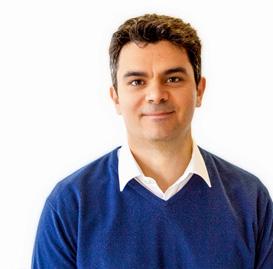
Benay Sager, Chairperson, National Debt Counsellors’ Association
There is enormous potential to release back into the economy more of the R2.5trillion in outstanding personal debt that South Africans owe. According to the National Debt Counsellors’ Association (NDCA), around R100-billion of this outstanding debt belongs to consumers who are in debt counselling, with an estimated R15-billion currently being paid back annually.
“South Africa has a world-class debt-counselling system, which has been proven to work. It’s conceivable that if more people sought help to
Private Client Holdings has been recognised in the 2024 Krutham (previously Intellidex) Top Private Banks & Wealth Managers Awards as the Top Wealth Manager: Boutiques.
These awards are based on a comprehensive survey of 170 wealth management firms and private banks and their clients to benchmark the top performers in South Africa. The Private Client Holdings team
manage their debt, the R15-billion being returned to the economy annually could be increased to R25-billion,” says NDCA chairperson, Benay Sager.
It is estimated that there are around 250 000 consumers who are in debt counselling and are actively paying back their creditors every month. Collectively, they are estimated to pay around R1.25-billion per month to creditors. Part of this includes regular repayments on 20 000 homes and 60 000 vehicles. While this debt remains with the original lenders, it is still an asset which they want to recover, even when restructured as part of the debt-counselling process. Sager says that because debt counsellors help manage the repayment of these assets, it is time to think about the sector as an arm of the asset management industry, albeit one that is managing some of the distressed assets.
spent considerable time and effort reviewing its client journey across all its Family Office service pillars to identify client pain points and then challenged its teams to resolve them.
“Our sincere thanks to all clients who participated in this year’s survey. Understanding what makes us good only drives us to be better,’’ Grant Alexander, founder of Private Client Holdings, said on winning the award.
Few aspects of life are as important as personal finance, as suffused with misinformation, noise and confusion. Dr Roger Silk and Katherine Silk cut through that confusion and share with you the fruits of their knowledge developed over the last 43 years in the new book, The Investor’s Dilemma Decoded: Recognize Misinformation, Filter the Noise, and Reach Your Goals.
After completing a PhD at Stanford where he studied at the cutting-edge of finance theory, Dr Silk’s experience includes managing billions of dollars at the World Bank and running a Family Office for one of the nation’s wealthiest families. For the last 26 years as CEO of the nation’s leading firm, Sterling Foundation Management, which advises high-net-worth individuals on financial aspects, Dr Silk has worked with countless financial professionals. Katherine Silk, who holds a master's in history from Stanford, adds a valuable historical perspective.
The book gives you the tools that 99.9% of investors never master, allowing you to understand how to think about almost any category of investment. The Silks take a deep dive into topics including:
• What generates investment returns (it’s probably not what you think).
• Is owning a home an investment?
• Should you own gold?
• What is a hedge, and are commodity funds an inflation hedge?
• What risk is, and isn’t, and why the “safe” course might be the riskiest.
• How professional financial advisors can add huge value to their individual clients.


Building on the success of its Institutional Manager Watch™ series of surveys, Alexforbes is excited to announce its new Retail Manager Watch™ surveys. The new retail multi-asset class survey, published monthly, is segmented into three categories: low equity, medium equity and high equity. These categories, aligned with the Association for Savings and Investment South Africa (ASISA) guidelines, offer a granular view of performance and risk statistics, allowing IFAs and investors to make informed decisions.
Low equity. Designed for conservative investors seeking steady growth and lower risk, this category includes portfolios with lower exposure to equities, offering more stable returns with reduced volatility.
Medium equity. Balancing risk and reward, the medium-equity category includes portfolios that maintain a moderate level of equity exposure. These portfolios aim to provide reasonable returns while managing risk. High equity. For those with a higher risk tolerance, the high-equity category consists of portfolios with substantial equity exposure. These portfolios have the potential for higher returns but come with increased volatility, suitable for investors looking for significant growth over the long term.
The survey is linked to the QR Code.
The days of sticking to one profession or even with one employer for life have quickly been replaced by a new generation of professionals. This younger workforce engages in “slash professions” by pursuing multiple income streams or job roles simultaneously rather than committing to a single profession for their entire career. According to Aubrey Faba, channel director at Momentum Financial Planning (MFP), this is the perfect time for young professionals to consider pursuing a career as a professional financial advisor.
Faba says South Africa is facing significant economic challenges, with many grappling with financial insecurities and a lack of adequate financial literacy. He adds that the need for knowledgeable financial advisors has never been more pressing. Empowering a new generation of financial advisors is essential for true economic empowerment in South Africa.
However, to bridge the age gap and meet the evolving needs of clients, the financial planning industry requires a radical generational transformation.
“In today’s fast-paced world, South Africans are looking for advisors who not only understand their financial goals but also resonate with their life experiences and aspirations. This is where the power of youth comes into play.”
Faba says a younger population requires a youthful perspective and drive. By becoming a financial advisor, he says young professionals can leverage their unique insights and energy to connect with clients on a deeper level.
“Becoming a financial advisor offers substantial benefits, including high earning potential and a flexible schedule. Financial advisors can earn significantly.”
South Africa’s card payments market is forecast to grow by 11.4% in 2024 to reach R2.3-trillion ($125-billion), supported by a constant consumer shift towards non-cash payments, according to GlobalData, a leading data and analytics company. GlobalData’s Payment Cards Analytics reveals that card payment value in South Africa registered a growth of 13.4% in 2023, driven by a rise in consumer spending.

Siddharth Das, an analyst at GlobalData, says, “South Africa remains a cash-driven society, with consumers preferring to use cash
for day-to-day transactions. However, the country’s payments market is steadily shifting towards electronic payments, driven by the combined efforts of the government and financial institutions.”
The central bank’s “Vision 2025” strategy includes several initiatives promoting financial literacy, with expanding the country’s payment infrastructure to support low-cost digital payments as one of the key initiatives. Retailers’ growing acceptance of payment cards and a rise in contactless payments are steering the transition towards card payments.
South Africa is steadily transitioning towards becoming a less cashcentric economy, backed by government initiatives promoting electronic payment methods. The transition from cash to cards is evident in the number of POS terminals, which rose from 424 873 in 2020 to 531 387 in 2024.

Auckland, New Zealand, is set to become one of the major financial hubs of the Global South within the next five years, predicts the CEO and founder of deVere Group, Nigel Green.
He sees the city competing “more effectively and aggressively” with other international finance hubs in the Global South including São Paulo, Johannesburg, Mumbai, Shanghai and Singapore. He notes: “Auckland’s geographic position is a significant advantage, strategically

located at the crossroads of the Americas, Asia, and Oceania. This unique positioning facilitates international trade and finance, making Auckland a prime base for multinational corporations looking to expand in the Asia-Pacific region.
Auckland International Airport is one of the busiest in the region and is undergoing significant upgrades to accommodate future growth.”
The city’s port facilities are among the most advanced in the southern hemisphere. These robust infrastructural foundations enhance Auckland’s appeal as a global business hub, providing seamless connectivity for international trade and investment. “Compare this, for example, to São Paulo, which is more regionally focused compared to Auckland’s broader Asia-Pacific reach; and Johannesburg faces challenges with regional instability.” Government policies fostering a business-friendly environment are crucial. New Zealand has ranked first in the World Bank’s Ease of Doing Business Index, reflecting its efficient regulatory framework.
The city is a burgeoning fintech centre, with numerous startups and established companies innovating in areas such as digital payments, blockchain and cybersecurity. The New Zealand fintech sector has a 10-year compound annual growth of 32%, four times higher than the tech industry.
The Financial Sector Conduct Authority (FSCA) and the Prudential Authority (PA) published Joint Standard 2 of 2024 on Cybersecurity and Cyber-Resilience Requirements in May 2024. The Joint Standard applies to all financial institutions as defined in the Joint Standard. It sets out the requirements for sound practices and processes relating to cybersecurity and cyber resilience for financial institutions. The Joint Standard requires financial institutions to:
• Mitigate and cater for any risks relating to cybersecurity and cyber resilience from juristic persons structured under a bank, the insurer or the insurance group when applying the requirements of the Joint Standard.
• Notify the responsible authority of cyber incidents or information security comprises they classify as a material incident. The specific format and manner for reporting these incidents are yet to be determined.
• Establish and maintain a regularly reviewed cybersecurity strategy to manage cyber risks and address changes in the cyber-threat landscape.
• Identify business processes and information assets that support business and the delivery of services, conduct risk assessments on its
critical operations and information assets and maintain an inventory of all its information assets.
• Ensure that access to information is limited to authorised users and devices only. Develop data loss prevention policies and measures. Implement a cybersecurity awareness programme.
• Maintain effective cyber-resilience capabilities to monitor, detect, respond and recover from cyberattacks on IT systems.
• Regularly test all elements of its cyber-resilience capacity.
• Enforce strong password security controls for users to access IT systems and information assets.
• Implement multi-factor authentication for all users with access to critical system functions, including user accounts utilised to access applications containing sensitive information.
• Test and apply security patches to address vulnerabilities in IT assets.
The Joint Standard strengthens the financial sector’s cyber defences. Financial institutions have one year to comply, requiring proactive measures for a smooth transition and a more secure future.
South Africans are increasingly diversifying their wealth into developed markets, which introduces complexities such as evaluating offshore jurisdictions and navigating cross-border tax and estate duty planning. South African-based wealth managers often lack the resources to advise on these matters comprehensively, unlike private banks that have a diversified team of legal and tax advisors. The International Investing Symposium will convene subject matter experts to demystify the intricacies of international wealth management.






Iam always surprised when I ask a financial planner about their financial planning or investment philosophy and get a blank stare in response. When it comes to a financial planning philosophy the most common retort is that they follow the six-step financial planning process. But a process is not a philosophy. And regarding investing, I’m usually told that it is the investment managers who have the philosophies and that the job of a financial planner is to combine different philosophies when they choose investment managers.
What is a philosophy? In literal terms, it is a “love of wisdom” and is usually associated with the concept of “fundamental truth”. People who study philosophy are trying to understand the fundamental truths about the world we live in. When we think about it as a practical application, it can be defined as “a theory or attitude that acts as a guiding principle for behaviour”.
agree with your philosophy, then they will know immediately that you are not the right financial planner for them. Some financial planners have labels for their philosophy, like Lifestyle Financial Planning, Goal-based Planning or Financial Life Planning. The label is less important than having a philosophy, which will inform your financial planning approach.
Rob Macdonald has held several senior positions in the investment industry. At Fundhouse, he acts as a consultant and coach to financial advisors and develops and facilitates training programmes in behavioural coaching and practice management. Before joining the financial services industry, Macdonald was MBA director at the UCT Graduate School of Business. He has written the book The 7 Pillars of Financial Health and is co-author of Rethinking Leadership and has consulted, written and spoken widely on a range of topics. Macdonald has a Master’s degree in Management Studies from Oxford University and is a CFP® Professional.
Therefore, the concept of having a philosophy is so important for a financial planner, because without a philosophy around advice and investing, what is the guiding principle that you use to influence the behaviour of clients?
Financial planners often use terms such as educating, guiding, coaching, and even mentoring, when describing how they influence client behaviour. These are all great concepts, and each is effective in its own way. However, their impact is likely to be muted if not informed by a consistent and sound philosophy around advice and investing.
What constitutes a financial planning philosophy? I believe it’s articulating for your clients what you believe are fundamental truths about financial planning. At the core, you may wish to tell your clients that you are a partner in their decision-making, not an order taker.
You may want to share beliefs like, needs are more important than wants, or return on life is as important as return on money. If clients don’t
When it comes to investing, fundamental truths would include concepts such as: investing is a means to an end; risk and return are related; time in the market is more important than trying to time the market; and we can’t predict the future which is why diversifying investments is so important. If clients are clear on your investment philosophy and know the fundamental truths of investing, they are unlikely to come to you asking about your latest hot share or crypto pick. But if they do, you can remind them of your investment philosophy and encourage them to see another financial planner if they really want that hot pick.
The power of having a strong philosophy was demonstrated in a different context in the recent political negotiations to form a Government of National Unity. Fikile Mbalula, the Secretary General of the ANC, spoke about how it was much easier to deal with parties who had a clear ideology, or political philosophy, than with parties whose ideology “changed with the weather”. It’s much easier to deal with people if you know where they stand. As we have seen in the political negotiations, this doesn’t mean the conversations will be easy or quickly resolved. Having a clear financial planning and investment philosophy doesn’t make your conversations easier or quicker with clients, but it does mean that your clients will know what you stand for. This will help you attract like-minded clients and is a critical starting point for being able to influence their behaviour on an ongoing basis.

As the implementation date of South Africa’s two-pot (three-component) system approaches on 1 September 2024, financial advisors must brace for a significant shift in the retirement planning landscape. This new framework aims to enhance the sustainability of retirement funds.
Understanding the two-pot system
The two-pot system restructures the traditional retirement savings model into three components:
Savings pot. Designed to provide immediate access to a portion of retirement funds, this pot allows members to withdraw up to one-third of their contributions at any time. This component addresses short-term financial needs and provides a safety net for emergencies.
Retirement pot. Comprising two-thirds of the contributions, this pot is preserved until retirement, ensuring long-term financial security. Withdrawals from this component are only permissible upon retirement age.
Vested pot. This component includes funds accumulated before implementing the new system. These funds remain subject to the old rules and are only accessible upon retirement.
the changes and their potential impact. Personalising these communications will enhance client trust and engagement.
4. Educating clients on financial discipline. While the savings pot offers flexibility, it also introduces the risk of premature depletion of retirement funds. Advisors must emphasise the importance of financial discipline, guiding clients on prudent withdrawal practices and reinforcing the benefits of preserving funds for retirement. As the implementation date draws near, financial advisors should focus on several steps:
1. Continuous professional development. Staying updated with the latest legislative changes and best practices is essential. Collaborating with peers can also provide valuable insights and strategies.
2. Client education initiatives. Developing educational materials, such as guides, FAQs and infographics, can help clients grasp the new system’s fundamentals. Ensuring that all communication is clear and jargon-free will enhance client comprehension.
Kobus Kleyn, CFP®, is a leading financial planner and tax and fiduciary practitioner in South Africa. He has published over 200 articles and authored five books. He is a multiple awardwinning professional and holds memberships with eight local and international professional associations. His awards include four from the Financial Planning Institute, including a Lifetime Achievement Award, and two from the Million Dollar Round Table, including a Lifetime Award and the President’s Award. Kleyn also received the Liberty Group Lifetime and INN8 Diamond Award for Best Overall Impact and Contributions to the Advice Profession in South Africa.
Key implications for financial advisors
1. Increased demand for guidance. Introducing the two-pot system will likely result in a surge of clients seeking professional advice. Advisors must be prepared to explain the system’s nuances, helping clients understand how to optimise their contributions and withdrawals.
2. Reassessing client portfolios. Advisors must review existing retirement portfolios and assess the implications of transferring funds into the new pots. This includes evaluating the tax implications of withdrawals from the savings pot and ensuring clients maintain a balanced approach to their long-term savings goals. The transition period will be critical, and advisors must provide tailored strategies to ensure a smooth shift.
3. Enhanced communication. Effective communication will be paramount. Advisors should proactively contact clients to discuss
3. Strategic review of client portfolios. Advisors should conduct comprehensive reviews of client portfolios to identify opportunities for optimisation under the new system. Personalised action plans should be developed to align with each client’s unique circumstances.
4. Strengthening client relationships. Building trust-based relationships with clients will be critical. Advisors should proactively reach out to clients, demonstrating their commitment to guiding them through this transition.
The advent of the two-pot system represents a significant evolution in South Africa’s retirement savings landscape. Financial advisors are pivotal in ensuring clients navigate this transition smoothly and make informed decisions that secure their financial futures. By staying informed, enhancing communication and providing tailored advice, advisors can turn this challenge into an opportunity to strengthen client relationships and improve their advisory practices.

In our complex and fast-moving world, quality advice aligned to our clients’ specific needs is the most valuable key to building and protecting financial dreams. At Momentum, this is exactly what our purpose is.
Dreams, by their very definition, are not reality, but they have the potential to shape a person’s future reality.
Unlocking financial success is not only possible, but it also becomes probable when it starts with expert financial advice. This is why advisers have always been – and will always be – an integral part of Momentum’s business. It’s also why the best-of-the-best advisers work with us. And anyone who doesn’t, really should!
Only when you understand advice, do you understand its value
Hannes van den Berg says that only an adviser with the expertise to offer a truly personalised journey to success can provide great advice. No-one is the same, and no journey follows the same path to achieving one’s financial dreams.
We believe advice should be:
• Tailored to everyone to create healthy financial habits and a positive mindset towards money.
• Recommended by experienced, trained professionals, informed by the most up-to-date information and offering the best products, solutions and services for every need.
• Empowering and inspiring to meet each client’s long-term goals.
• Ethical, without an emotional bias and based on the best interests of every client.
• Results-oriented with meaningful outcomes and progress that can be measured.
• Continuous through long-term one-on-one relationships that evolve and grow.

An adviser offers a holistic approach to financial planning by considering all aspects of a client’s life and financial circumstances before advising on a financial plan. We offer the full spectrum of solutions and services for every stage of a client’s life, from cradle to grave, with the security of dealing with any unexpected challenges. We offer credibility, transparency and a clear fiduciary role in creating trust.
Design simplified and impactful client experiences
Jeanette Marais says, “We are committed to building long-lasting relationships based on trust, transparency and excellence. We believe that behind every event, every transaction and every decision, there is a human being with hopes, fears, dreams and aspirations, and a unique story that is unfolding.
“We understand that money is not just about numbers but about emotions. So, giving advice is more than just about, for example, providing people with medical cover. What we do, makes people feel healthy. It’s not about giving people comprehensive insurance either; it’s about making them feel safe. It’s not about offering investment options and products, but about making people feel prepared. And it’s not about selling life insurance; it’s about making people and their families feel secure.”
One of the ways in which Momentum strives to humanise what we offer clients is through simplicity. It is our strategic objective to design simplified and impactful client experiences.
In today’s complex financial landscape and in an era where consumers are inundated with options and information, simplicity stands out as a beacon of clarity. By simplifying our offerings, we reduce complexity for clients, making it easier for them to understand and engage with our solutions, services and advisers.
In an industry like ours, where trust is paramount, complex solutions and services can lead to confusion and distrust. By driving simplicity and embracing advice, we, as a business, are enabled to be more efficient and stay agile and responsive to changing market dynamics and our client needs.
She says, “We also aim to enable our advisers to understand and anticipate the evolving needs of our clients, leading to solutions, service and advice that drive real value. For this, we focus on using technology and data analytics to offer insights and recommendations tailored to our clients’ needs. At the same time, these solutions enhance the human touch and drive real value for our advisers – creating a strong, positive outcome for clients and advisers.”
Crucially, more than 90% of our payouts are made possible by financial advisers.
Positioning the value of advice is critical to the growth of our industry
Van den Berg says that advisers, as entrepreneurs, operate in the world of finance as the bridge between financial services institutions and ordinary households and businesses. To play this connecting role in an ever-evolving, complex environment, advisers are required to be equipped with a myriad of skills and a solid understanding of the law, economics, finance and human behaviour.
Advisers contribute to economic growth and employment, playing a vital role in household wealth accumulation, ensuring that more South Africans can afford to retire with dignity and live their financial dreams while protecting their most important assets and growing their wealth.
As our industry is still largely advised, this wealth accumulation would not have been possible without financial advisers.
In the 2023 calendar year, Momentum alone paid R210-billion to clients in the form of claims and annuities. To put this in context, the Reserve Bank statistics show that gross household income from all sources amounted to R6.2 trillion in 2023. Of this, R1.9 trillion is income received from business, dividends, interest, rent, insurance and annuity receipts. That means our pay-outs to clients generated an income equal to 11% of non-salary and grant income. Crucially, more than 90% of our payouts were made


Jeanette Marais, CEO: Momentum Group
possible by financial advisers. Put differently, advisers contribute massively to building and protecting our clients’ financial dreams – and helping us, as Momentum, to live our purpose.
At the same time, it is well known that most of the population can’t afford to save, invest or insure. This means they are largely excluded from accumulating wealth through insurance and investments. Statistics from SARS and Stats SA indicate that only 6.2 million people contributed to a pension or retirement product in 2023. This equates to only 25% of the labour force, or 27% of all households, providing for their retirement through pension funds and retirement annuities. And we know that only a small minority of those who are providing for retirement, provide enough.
Our estimates from the Momentum/Unisa Household Financial Wellness Index indicate that around 750 000 households earning more than R30 000 per month (gross household income) do not provide for retirement. Our estimates also show that about one million households with an income exceeding R30 000 per month do not have any life insurance.
As an industry, we need to work harder, for a start, to reduce these households’ financial vulnerability and include them in the wealth-building process. We recognise the gaps in financial inclusion, access to financial solutions and services, and use them effectively in South Africa. These underserved segments span various demographics, and our objective is to identify their unmet needs and address them effectively to create financial inclusion and empowerment.
To make this possible, we as insurance and investment companies must grow and support financial advisers so they can assist more households to share in this wealth accumulation.
Only an adviser with the expertise to offer a truly personalised journey to success can provide great advice.
Enabling financial advice for all South Africans
Van den Berg says, “To make South Africa a more inclusive country, we need to dramatically increase the number of qualified financial advisers. Our Momentum adviser value propositions are tailored to develop and grow experienced and new professional financial advisers.
“By becoming serious about supporting new and experienced financial adviser entrepreneurs, we can assist in propelling significant economic growth.”
Humanity and innovation to serve client needs to empower great financial advice
Danie van den Bergh adds that over a long time, the Momentum brand has established an incredible reputation for innovation.
The development of creative financial products and solutions has been a major focus of this innovation, so it should come as no surprise that Momentum product solutions have long been acknowledged as the most comprehensive, flexible and competitive in South Africa. At the same time, we were always very focused on developing solutions that would live up to our clients’ expectations.
One of the ways in which Momentum strives to humanise what we offer clients is through simplicity.
Because of its emphasis on the needs of the client, Momentum has consistently produced solutions with exceptional features and benefits that have exceeded clients’ and advisers’ expectations.
Van den Bergh says, “In a world where our innovation is product solutions with unique benefits and features built into systems and processes, we realised that the human element plays an important part in such an environment. We are very proud of the culture we created that is described as a brand with a heart. Our employees, partners, clients, advisers and the public experience this when they engage with us.”
This innovation and culture of caring naturally spilt over to the advice side, and we managed to attract many advisers in the industry to both our well-established and successful advice businesses in the group, one being a registered financial adviser (RFA) and the other a product supplier agent (PSA). Given that advisers have always been an integral part of Momentum’s business, our objective is to attract more best-of-breed advisers to work with us.
To attract advisers, we needed to acknowledge and understand the challenges and requirements of advisers and create specific adviser value propositions for different adviser profiles. The following is an abbreviated list of the challenges advisers are facing:
• Complex systems and processes
• Inadequate succession planning
• Limited or no ownership or equity in their practices
• Vested advisers with large client books battle to service all their clients
• New advisers in the industry struggle to find clients
• Lack of adequate technology to manage their practices
• Retention of clients
• Lack of a sense of belonging and recognition
• Growth in income
• Limitation to diversify income
o Limited product solutions on offer by FSP
o The adviser is licensed for limited product solutions
o Specialisation excludes other product solutions.

Advisers contribute massively to building and protecting our clients’ financial dreams – and helping us, as Momentum, to live our purpose.
A game-changing adviser value proposition from Momentum Van den Bergh says, “We are proud that the adviser value propositions we have created and further enhanced recently, solve the aforesaid challenges and even create new opportunities for growing practices.” Below is the positive impact it has:
Career and personal needs
• Our unique career contract enables advisers to build equity while earning an income with our compelling remuneration model. We encourage our advisers to be entrepreneurial, and therefore we provide advisers with capital assistance to grow their practices.
• Our unique succession planning solution facilitates a positive outcome for an adviser and his complete client book. This is achieved with the assistance of capital regarding events such as death, disability and retirement. We do this for both an existing adviser’s practice and a new adviser joining us as the successor of the existing adviser.
• Our compelling business model diversifies advisers’ income by partnering them with another specialist in a product category that is not their speciality. This enables advisers to ensure that all their clients’ needs are dealt with holistically and that they retain their clients within their practice.
• For us, it is of the utmost importance that the meaningful contributions advisers make to the business and their clients’ lives are celebrated. We formally acknowledge and reward advisers’ achievements.
Practice and office needs
• With the realisation that advisers need cutting-edge technology with increased complexity, we offer one digital workspace with
end-to-end processes, integrated advice tools and embedded compliance. The same workspace includes all data and functionality to manage your practice, including selected access for an adviser’s admin staff.
• Within our advice businesses, advisers can tap into a team of experts from different product solutions, legal advisers and practice development managers to offer professional advice to their clients.
• We have a trademarked business development programme and process that enables the adviser to grow a more sustainable advice practice and grow new business.
Client solutions
• We have developed a financial advice framework that follows a robust financial planning model across all major client needs. This advice process is on one platform with integrated tools and embedded compliance.
• Our product offerings and solutions are widely regarded as the most comprehensive, competitive and flexible in the South African market. The adviser can reassure their clients that the product solution is always the best of the breed and that the advice methodology used will always secure a perfect match between the client’s needs and the appropriate solution.
At Momentum, advisers are at the centre of building and protecting our clients’ financial dreams!
Advisers who find this proposition compelling can engage with us confidentially by emailing us at advice@momentum.co.za or they can SMS Advice and their name and email address to 3 11 44.
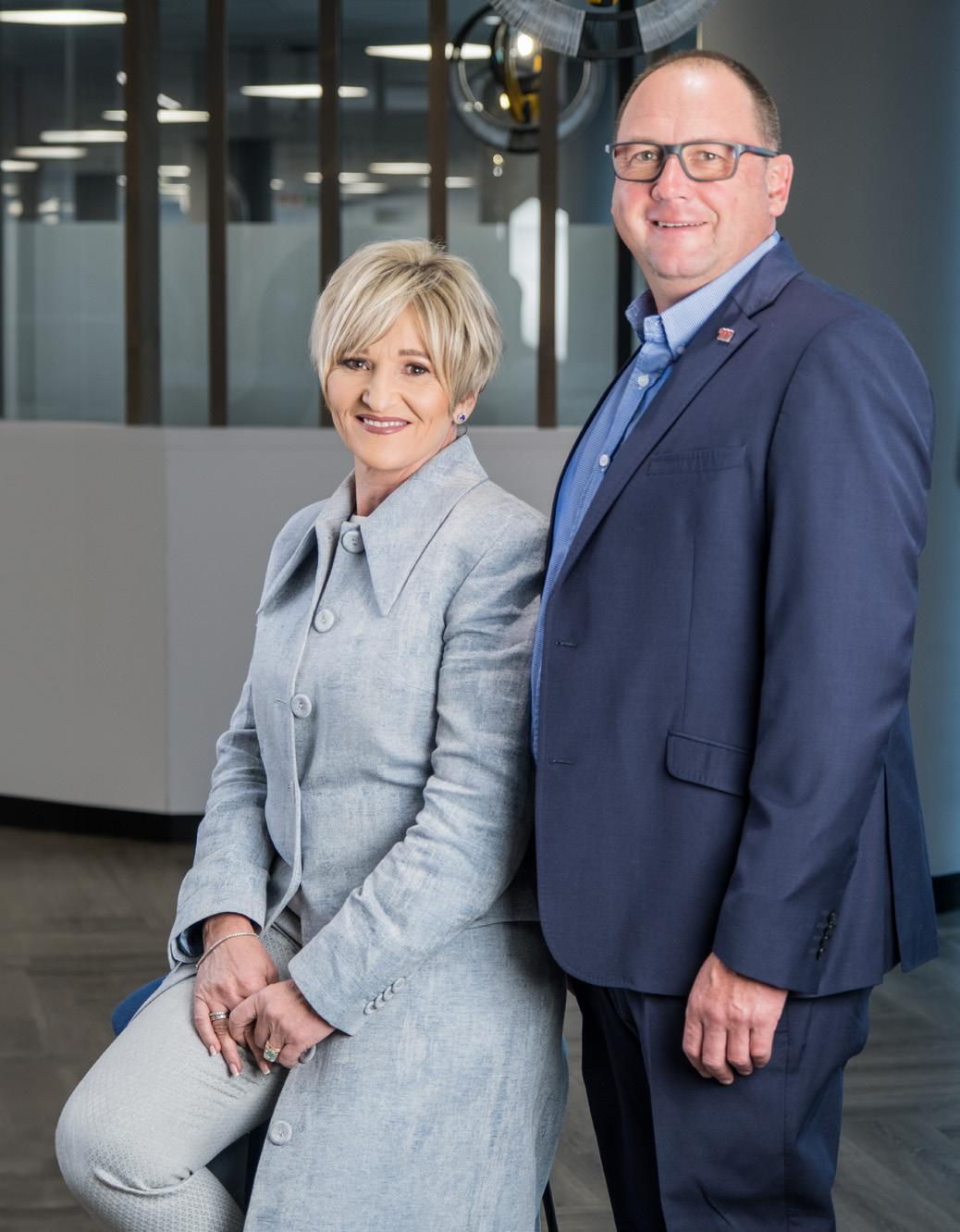
Wealth accumulation would not have been possible without financial advisers.
The FPI presents the three finalists for the illustrious 2024 FPI Financial Planner of the Year Award. Meet Gareth Collier CFP®, Rudolph Geldenhuys, CFP® and René van de Spreng, CFP®.
The FPI Financial Planner of the Year Award is a highly sought-after prize that recognises excellence in the profession and practice of financial planning. The Award was launched in 2000 for FPI members with the first winner being crowned at the annual convention gala dinner in 2001.
The competition to recognise the country’s top CFP® is stringent and challenging. It has developed over time to include the assessment of financial plans prepared by the financial planner and a site visit thereby examining the financial planner’s competency, practice management skills, knowledge of the wider financial planning industry and the ability to be the spokesperson for the financial planning profession.
All the nominees had to showcase their talents and abilities, exhibiting innovative ideas, excellent skills and impeccable ethics when dealing with clients.
The FPI Financial Planner of the Year competition is open to all CFP® Professionals who are practicing professional financial planners or those who provide specialist financial advice to clients as part of their full-time business. A practicing financial planner is defined as a person who engages in financial planning using the six-step financial planning process when working with clients.
THE SIX STEPS OF FINANCIAL PLANNING
1. Understanding the client’s financial circumstances.
2. Identifying goals.
3. Analysing the client’s current course of action.
4. Developing financial planning recommendations.
5. Implementing the financial plan.
6. Monitoring progress and updating.
GARETH
COLLIER,
CFP® Director, Crue Invest
Gareth Collier is deeply committed to financial planning, guiding clients towards lasting financial freedom through strategic investing and wealth creation. He was awarded a BCom degree from UNISA and achieved the CERTIFIED FINANCIAL PLANNING® professional designation. Collier serves as a director and shareholder at Crue Invest, which is recognised as one of South
Africa’s most distinguished FPI Approved Professional Practices. His expertise extends to employee benefits, where he excels in crafting personalised, cost-effective solutions for employees.

RUDOLPH GELDENHUYS, CFP®
Senior Financial Planner, WealthUp
Rudolph Geldenhuys graduated from the University of Stellenbosch with a BCom in 2012. He pursued further education at the University of Stellenbosch Business School, earning his postgraduate diploma in financial planning in 2014, followed by a specialised postgraduate diploma in financial planning (summa cum laude) from the University of the Free State in 2018, where he achieved top accolades in investment planning and financial planning law. Geldenhuys serves on the FPI’s Western Cape Regional Committee. He has a strong conviction about giving back to the community.

RENÉ VAN DE SPRENG, CFP®
Wealth Manager and Director, Apex Private Wealth
René van de Spreng has worked in the financial services industry for both large corporate and independent advisory firms for close to two decades. He has a deep passion for independent financial planning, investment management, retirement as well as estate and tax planning. He serves as his client’s trusted thinking partner while understanding and addressing their needs.
Blue Chip congratulates the three finalists. Keep cultivating growth and harvesting excellence.

Blue Chip speaks to Lelané Bezuidenhout, Chief Executive Officer of the Financial Planning Institute of Southern Africa.
Thank you for granting this interview and reflecting on another successful year for the FPI under your leadership. We have many milestones and achievements to celebrate, so let’s begin. Please provide an overview of the FPI since the 2023 convention.
The progress since the 2023 FPI convention has been substantial and multifaceted. From educational enhancements and professional achievements to digital innovations and community building, the FPI continues to lead the way in advancing the financial planning profession. Our continued focus on growth, coupled with a commitment to professionalism and excellence, ensures that the FPI remains a key force in shaping the future of financial planning in South Africa.
What are the areas of growth for the FPI over the past year?
The FPI is implementing its 2023-2025 Growth and Awareness Strategy, focusing primarily on increasing our pipeline of students and candidates. This year, under the leadership of Fatima Fakier, our education manager, we have successfully launched and initiated Student Professional Development (SPD) programmes. Our education providers and professional members have contributed significantly, delivering substantial content to students and candidates. We have introduced live student sessions nationwide, enhancing their preparatory journey in completing their studies. Additionally, more resources have been allocated to support our candidates, who transition from student status upon qualifying.
Our Young Financial Professional Organisation (YFPO) committee has been notably active this year. Under Gugu Sidaki’s leadership, we have facilitated several collaborative sessions
I advocate for an initiativetaking approach to learning and encourage those around me to embrace change, set clear goals and maintain a positive outlook, regardless of challenges.
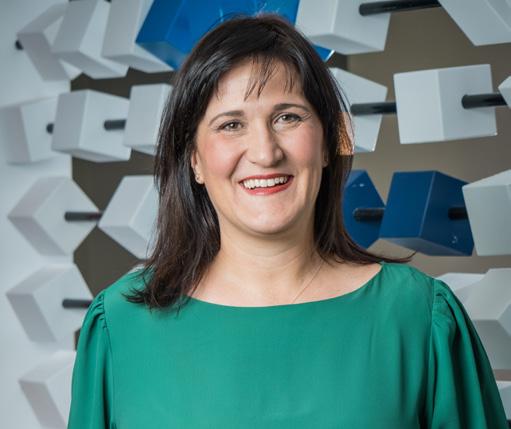
between younger professionals and those under the age of 45. The increasing interest and participation in YFPO activities are evident in the positive feedback and engagement on our YFPO YouTube channel and social media platforms.
Professionally, the FPI has advanced to number six globally in the ranking of CFP® professionals. This ranking allows us to continue as a member of the Chief Executives Committee (CEC) of the Financial Planning Standards Board (FPSB), highlighting our sustained global participation in the CFP® certification programme.
From a corporate perspective, our FPI Approved Professional Practices are contributing significantly to the growth of the profession by serving as approved mentorship centres. These practices have demonstrated exceptional efforts through their mentorship programmes and initiatives. Moreover, our FPI Approved Professional Practice Forum meetings have been a resounding success. These sessions discuss critical topics such as succession planning, skills development, nurturing talent, fintech, AI, practice management and regulatory updates from FAIS to COFI, to mention a few of the subjects covered in the year-todate. In terms of raising awareness, the FPI has adopted a digital marketing strategy, enhancing our engagement across various
social media platforms. This shift to digital has allowed us to reach a broader audience.
Finally, consumer awareness has been strengthened by the relaunch of our websites, www.FPI.co.za and www.fpimymoney123.co.za, and the reintroduction of the Find a Financial Professional tool. This tool is crucial for consumers seeking professional members of the FPI, including Registered Financial Practitioner® (RFP®), Financial Services Advisor® (FSA®) and CFP® professionals. We have also revamped our consumer newsletter to provide relevant content from our members to their clients.
And milestones reached?
This year has seen significant milestones in both membership retention and growth. We have retained 97% of our CFP® professionals and about 90% of our RFP® and FSA® professionals, thanks to their continued trust and support. The number of CFP® professionals has grown from 4 748 in January 2023 to 4 804 in January 2024. We aim to reach 5 000 CFP® professionals this year, with the support of our education providers, corporate partners and professional practices.
The growth in the RFP® and FSA designations has been slow but steady. The FPI has reintroduced these advice designations after recognising the need for such roles in South Africa. Our efforts to update and enhance the curriculum and competency standards for these designations have been met with positive feedback.
Our events and conferences have marked significant milestones, with well-attended sessions like the Budget Breakfast and Annual Refresher events. We look forward to hosting more impactful events, such as the upcoming FPI Professional’s Convention in Cape Town and workshops on Estates and Trusts and Ethics and AI later in the year.
We have more than 600 candidates who have sat for the CFP® Professional Competency Exam (PCE) to date, for 2024. Additionally, we launched the CFP® digital credential, and we thank those members who have updated their social media platforms, business stationery and emails with their digital credentials.
What are the FPI’s near-term objectives?
As we progress through our current three-year strategy, our nearterm objectives are clear and focused. We aim to grow our CFP® professional members to approximately 5 000 by 2025 and increase our RFP® and FSA® professional members as well. The growth of our advice designations (RFP® and FSA®) is progressing more slowly than expected, partly because employers have not yet fully recognised the value of professional membership in contexts that primarily involve product advice. At the FPI, we are diligently working to help Financial Service Providers (FSPs) understand the benefits of professionalising product sales and encouraging their representatives to join a professional body’s peer community. This effort is aimed at enhancing the professionalism and quality of financial advice within the industry.
Being professional builds trust and credibility with clients, peers, employers and the public, which are crucial in the financial planning profession.
Ensuring that all the FPI corporate partners meet the 25% minimum professional membership target by the end of 2025 is also crucial. We furthermore plan to expand our FPI Professional Practices and enhance our digital marketing strategies to improve user experience. This includes incorporating AI into our CRM systems, launching a new online seminar system and increasing the relevance and frequency of our consumer and member newsletters.
Please tell us about your journey as the FPI CEO.
My tenure as CEO of the FPI since June 2019 has been challenging yet rewarding. We have navigated governance issues, lockdowns and even a flood in our office. Despite these hurdles, these years have been some of the most enriching of my career, offering opportunities for significant growth and improvement. We have transitioned to a more diverse and inclusive environment, both in terms of staff and board composition and have embraced technology to enhance our operational efficiency. We have also intensified our stakeholder engagement efforts to advocate for global financial planning standards and fair customer outcomes.
What is your philosophy of continuous growth?
My philosophy centres on the belief that continuous learning, resilience and adaptability are key to personal and professional success. I advocate for an initiative-taking approach to learning and encourage those around me to embrace change, set clear goals and maintain a positive outlook, regardless of challenges.
A focus area for the FPI has been professionalism. Please discuss. Professionalism is a fundamental principle of the FPI Code of Ethics. It requires professional members and staff of the FPI to uphold the highest standards of integrity, competence and ethical behaviour. Being professional builds trust and credibility with clients, peers, employers and the public, which are crucial in the financial planning profession. Additionally, professionalism fosters a culture of continuous professional development and accountability. This encourages all members and staff to remain up-to-date with industry developments and adhere to best practices. A steadfast commitment to professionalism not only enhances the reputation of our members and staff but also elevates the entire profession, ensuring that clients receive the highest quality of professional financial advice and financial planning.

What is the Financial Planning Standards Board (FPSB) and what is the relationship between the FPI and the FPSB?
The Financial Planning Standards Board (FPSB) is the standards board that establishes, promotes and enforces professional standards in financial planning. The FPSB owns the CFP® mark outside of the United States, while the CFP® Board owns it within the United States. Currently, the FPSB has affiliate and licensing agreements with 28 territories globally. The FPI was one of the founding members of the FPSB when it was established 20 years ago.
As mentioned, the FPI is an affiliate of the FPSB. As an affiliate, the FPI is the only licensed body in South Africa authorised to administer the CFP® certification programme. The FPI’s senior staff, including the CEO, the FPI board chairperson and education specialists, serve on various FPSB committees as volunteers. The FPI holds a position on the Chief Executive Committee as one of the top seven affiliates globally and is ranked sixth in terms of CFP® professional numbers worldwide.
The FPI is on a mission to localise the latest global financial planning standards. Please expand. All FPSB affiliates are required to integrate the updated curriculum into their financial planning standards. The FPI is updating its curriculum and certification standards to include the “Knowing, Being and Doing” concept from FPSB’s revised guidelines. We have also started incorporating these updated learning outcomes into our CPD content and are working with the FPI Approved Educational Providers to revise their educational programmes accordingly. Nici Macdonald, CFP®, our Head of Certification and Standards, is leading these updates in collaboration with other FPSB affiliates.
What are the latest trends, developments and innovations in the financial planning sector?
Globally, financial planners are recognising the benefits of incorporating more robust financial planning technology and AI into their practices. This integration allows planners to spend more time with their clients and ensures a more thorough focus
on the client’s financial well-being. Planners are also realising the importance of partnering with Discretionary Fund Managers (DFMs), fiduciary specialists and other allied professionals to provide a more comprehensive service to their clients.
There are three types of transformations taking place globally: Digital transformation. This involves integrating advanced technology and AI into financial planning, as mentioned above, which helps in optimising client interactions and backend processes. Regulatory transformation. There is a global shift in regulatory frameworks, focusing extensively on anti-money laundering (AML) and counter-financing of terrorism (CFT). This transformation aims to enhance client outcomes and bolster consumer protection. Diversity and inclusion transformation. It is crucial to include a broader group of diverse candidates within the financial sector. True diversity is ineffective without inclusion.
Additionally, more financial planning practices are adopting a client-centric approach, emphasising clients’ financial wellbeing. This approach includes setting clear financial goals and enhancing consumer education to help clients understand the broader financial landscape, with a particular focus on the client’s financial well-being.
What advice would you give financial planners on how to cultivate growth so that they can harvest excellence?
A growth mindset is key in the financial planning industry, where challenges teach resilience and determination. Continual learning, such as engaging in Continuing Professional Development (CPD), is crucial for meeting professional requirements and for personal and professional growth. Understanding the right technology and assembling a competent team is vital for business growth. Effective mentorship tailored to company culture further enhances staff development.
Maintaining high ethical standards and adhering to a professional code of ethics are essential for cultivating excellence. Regular feedback from clients and other stakeholders is crucial for identifying strengths and areas for improvement, ensuring that financial planners are responsive and initiative-taking in enhancing their services.
What do you deem to be the most critical component of success for financial planners?
Trust is the cornerstone of success in financial planning. Establishing and maintaining trust involves consistent ethical behaviour, transparency, competency and the ability to deliver tailored, effective financial advice. Building strong, trust-based relationships with clients ensures long-term engagement and success.
How does the two-pot system respond to the socio-economic challenges in South Africa?
We know that South Africa has a poor savings culture and that the average household carries more debt than they can afford to pay off. Access to the savings component, after taxation (at marginal tax rates)
and administrative fees, may leave fund members with an amount far less than they expected to receive. However, this access could provide some temporary relief for severely cash-strapped families.
From the perspective of the retirement pot, the compulsory preservation until retirement will significantly aid in bolstering retirement savings over the long term.
SARS collects taxes from members withdrawing at marginal tax rates which will provide additional revenue that could potentially support economic development and hopefully reduce public debt.
What advice do you have for financial planners concerning the two-pot system?
Provide your clients with sufficient information to make informed decisions. Only the relevant retirement and taxation laws were changed to accommodate the two-pot system; FAIS and its subordinate legislation remain. Financial planners need to ensure that they provide suitable advice and help clients understand the impact of withdrawing from their retirement savings before retirement.
It is also in the interest of financial planners to stay up-to-date on the latest developments in retirement reform. Unfortunately, ignorance is no excuse for non-compliance with legislation.
The bottom line is that financial planners must continue to do what they do best – always put the client’s interests first and act with due care, diligence and competence.
Please discuss the challenges of bringing more women, people of colour and young people into the industry. The biggest challenge is the availability of funds to assist diverse candidates in obtaining the qualifications they need to operate in the industry, as well as opportunities to gain the right type of experience to become a financial advisor or planner.
Focusing on product sales and meeting sales targets does not help diverse candidates reach their full potential, which could be achieved with more structured mentorship and guidance from experienced mentors. Additionally, I have observed that disparities in salary scales are unfortunately still a reality. Why is it acceptable to pay someone less just because they are female or young?
Please provide a message to the FPI members.
We extend our heartfelt thanks to our members for their unwavering support. During the Financial Planner of the Year final interviews, one entrant highlighted the importance of member involvement in the FPI. I wholeheartedly agree – a professional body is only as strong as the support it receives from its members. Reflecting on this, I am filled with gratitude for those members actively engaged in the workings of the FPI. We have over 300 members contributing to the FPI as an extension of our human capital arm, helping to advance our vision and mission. It would be impossible for FPI to achieve what we do with only our 40 staff members. We are who we are because of the support from our professional and corporate members. Thank you for your dedication and commitment.

Meet the Top Candidate Award Winner 2023, Stephan Lombaard. The Award recognises the top candidate who completed the CFP® Professional Competency Examinations for professional membership of the FPI.
Please supply a brief biography of yourself.
I grew up in a small town called Wellington in the heart of the Boland, Western Cape. I originally studied Human Resource Management in Stellenbosch, after which I completed my Postgraduate Diploma in Financial Planning at the Stellenbosch Business School. I have always been passionate about working with people and during my undergraduate studies, I developed a strong interest in finance. Financial planning therefore served as the perfect intersection between the two. I am currently working at Allan Gray where I enjoy the corporate side of investments and finance. In my spare time, I enjoy making music and exploring the Western Cape with good company.
I hope to see a future where our industry plays a larger role in advancing financial literacy.
What did you achieve by entering the competition?
I participated in the CFP® Professional Competency Exam (PCE) to earn the CFP® designation and equip myself with the essential knowledge to excel in my career. I knew that the standard of excellence that the mark provides would boost my career and provide me with the credibility and knowledge to navigate my future in the industry.
The winner is selected from the highest mark received for the CFP® Professional Competency Examination. What did the examination entail?
The PCE examination forms part of the requirements to gain the CFP® mark in South Africa. The exam is presented in a case study format and tests the application of the knowledge gained during the Postgraduate Diploma in Financial Planning. It covered all aspects of the financial planning process from the initial client meeting to preparing for retirement and managing a client ’ s estate. The exam requires individuals to go beyond memorisation of facts and instead tests their ability to apply knowledge
across various topics and think critically, ultimately better preparing them for the industry.
How did taking the examination equip you for the future?
Passing the PCE exam has provided me with thorough knowledge of the financial planning landscape with an in-depth understanding of the product rules, tax and legislation. I believe that the knowledge gained is invaluable to anyone likely to pursue a career in the investment and personal finance sectors.
Although I am not currently functioning as a financial planner, the knowledge gained is a massive value-add to my career as it gives me the confidence and ability to do my best in any direction I pursue.
What changes would you like to see in the profession?
A big challenge we face in South Africa is a lack of general financial literacy among most of the population. Many South Africans have little to no knowledge of investments, retirement planning or healthy financial habits. With savings rates being critically low and very few individuals being able to retire comfortably, education is imperative to lift our country out of poverty and inequality. I believe that the financial planning industry is uniquely positioned to address this gap through advocacy, training and education. I hope to see a future where our industry plays a larger role in advancing financial literacy and enhancing the accessibility of education through collaboration with government and local communities.

The FPI strives to increase professional opportunities for the widest spectrum of people so that all may thrive in the financial planning profession. The Institute established the FPI Diversity and Inclusion Award to promote the inclusiveness of diverse communities in the profession. Olwethu Masanabo was nominated as the winner of this Award in 2023.
Please supply a brief biography of yourself.
I am the director and founder of Pragmatic Academy which aims to be what I can only describe as a hub of excellence for financial planning with a particular focus on the black middleclass demographic. The services include training, coaching and mentoring of financial advisors to better service the black middleclass segment. We also have programmes for para-planners, managers of financial advisors and assistants to financial advisors. Our existence was sparked by a realisation that the world has ushered in remarkable diversity among financial professionals and the recipients of financial planning services. However, the methods employed for professional training have remained static and are suitable for serving a narrow demographic.
I am also a non-executive director and chairperson of the Human Capital Management Committee and Diversity and Inclusion subcommittee at the FPI, a non-executive director at BDO Wealth, an independent trustee at the Old Mutual Black Distributors Trust as well as a non-executive director of the BDT SPV (a company that is owned by the Trust).

Please talk to us about your background and experience of diversity and inclusion in the profession.
I started in the industry as a financial advisor many years ago and it was extremely challenging for me as a black person. All the things we were taught that were meant to make us successful financial advisors just did not seem to work with black clients (which is the demographic I was mainly working in) and there were no alternatives that were provided. So, I ended up moving to other roles which included training financial advisors. That is when I started bringing in aspects of how financial advisors could better service the black population and add value to them based on my experience. I also started bringing in other aspects that could help black financial advisors to increase their chances of being successful.
What did you learn through the process of applying for the award?
Well, I did not apply for the award. You get nominated based on work you have done to advance diversity in the profession. I was not aware that I had been nominated and was pleasantly surprised when my name was called as the winner of the award.
What changes would you like to see in the profession?
I would love to see a more diverse group of financial advisors in attendance when events are held for top advisors in the region. I would also love to see the average financial advisor in South Africa be more representative of the country’s population.
In your view, how should the FPI attract more diversity in the profession?
The FPI is involved in numerous initiatives which are aimed at increasing the diversity of the profession. Examples are the Young Financial Planners Organisation (YFPO), student competition as well as bursary funding for previously disadvantaged individuals which look at diversifying the FPI membership in race, age, gender, etc.
What message would you like to convey to anyone who does not fit the stereotype of financial planners who is considering financial planning as a profession?
If you do not fit the description of the average financial advisor in South Africa that does not mean there is no room for you in the profession. If there is no-one like you, you can be the first to carve a path for those who are like you.
Kim Potgieter, author, speaker and expert financial planner, won the FPI It Starts with Me 2023 Award. The Award recognises a CFP® professional for their unyielding dedication to promoting the CFP® certification.
How have you entrenched the CFP® mark in your work life?
In our industry, there is often confusion about titles, whether we are financial planners, wealth managers or advisors. The CFP® mark clearly defines us as professionals in our field. Being a professional means having studied for the qualification and always acting with the client’s best interest at heart. This entails offering advice and planning tailored to the client’s unique circumstances, objectives and needs and structuring their financial plan intentionally to enable overall wellness and financial security. The CFP® mark elevates planners as professionals and ensures our dedication and integrity to provide clients with the highest standard of care and expertise.
What motivates you to continuously seek to grow and invest in yourself and your career?
The financial services profession is constantly evolving, and apart from keeping up to date with world markets and changing legislation, our clients’ needs are also changing. There is no onesize-fits-all approach to planning, and planners are increasingly asked to offer a value-added, life-centred service. This opens new fields of learning for planners, including facilitating vulnerable conversations and coaching clients through significant life transitions.
Being a “learner” is one of my top strengths, and I have always prioritised connecting with people I regard as mentors and visionaries to bring new ideas and insights about financial planning back to South Africa. Coupled with my curiosity and love for learning, teaching and mentoring are also some of my top passions. Sharing what I have learned with the industry and our clients speaks to one of my highest values.
What changes would you like to see in the profession?
I would like to see the profession place clients firmly at the centre of what planners do, which includes rethinking how planners are remunerated. There’s still much discussion needed around financial planners being compensated with salaries rather than commissions. This shift could help dispel the perception of our industry as commission-driven and ensure objective advice is given based on clients’ best interests rather than financial incentives. Additionally, mentorship is another area where I see great potential for growth. With many young professionals entering the industry, there’s an invaluable opportunity for more experienced planners to impart their experience, emotional intelligence and wisdom to the younger generation. Conversely, the younger generation brings fresh perspectives and new ideas from which
the older generation can also learn. This “menternship” relationship can enrich our profession and enhance the quality of service we provide to our clients.
What value do you bring to your clients as a CFP® professional?
At Chartered Wealth Solutions, our approach to financial planning begins with life planning. We believe that understanding a client’s life goals, aspirations and unique circumstances is the foundation of effective financial planning. By charging a fee for our holistic plans, we ensure that our advice remains objective and unbiased. This allows us to deliver personalised life and financial plans that comprehensively align our clients’ finances with their life goals. One of the most beneficial skills we have embraced in our planning meetings is coaching, which equips our planners with the self-knowledge and empathy to facilitate vulnerable conversations and provide mentoring, enhancing the overall benefit for our clients.
Kim Potgieter believes that you cannot plan for your money without planning for your life first and advocates that life planning is an integral part of financial planning. This allows her clients to live their best possible lives by aligning their money with purpose. As Director and Head of Life Planning at Chartered Wealth Solutions, she combines her two passions: helping people with their relationship with money and guiding clients to get the most life from their money in their second chapter.


Are you ready to elevate your career and make a lasting impact in the world of finance?
Seize the opportunity to distinguish yourself as a CERTIFIED FINANCIAL PLANNER (CFP®), FINANCIAL SERVICES ADVISOR (FSATM), or REGISTERED FINANCIAL PRACTITIONER (RFPTM) this October.
CFP® Exam: 3 & 4 October 2024
FSATM Exam : 3 October 2024
RFPTM Exam: 3 October 2024


The allocation of global market equities is forever in motion and the structural shifts between markets are significant in generating investment returns. What drives these shifts and how can we better understand them, asks Peter Foster, Chief Investment Officer, Fundhouse.
Have you heard of TEMU? The online retail platform owned by the Chinese mega-company, Pinduoduo, has made aggressive inroads into South Africa in recent months.
You may also have noticed a somewhat more muted, but no less significant, launch of the Amazon Marketplace platform. Both companies are seeking to displace Takealot among other retail stores countrywide.

Separately, the Australian-headquartered BHP lined up a takeover offer for Anglo American, a company established in 1917 and one of the stalwarts on the JSE. For now, it looks like this deal is off. But
who would have thought it might’ve been possible for a company like Anglo to disappear from our shores?

So, what do these headlines have in common? Each of them highlights two important aspects concerning investments: the value of listed companies available to local investors on the local stock market; and the profits earned by local companies to contribute to the local economy and its population. This dynamic is not unique to South Africa or even new. The allocation of listed equities across countries and regions changes slowly, but significantly, over time. To put this in context, consider this: in 1900, the largest stock market in the world was in the UK – accounting for almost 24% of all global listed equities. Despite only generating 9.1% of global productivity or GDP, the UK had managed to get itself into a position where most of the publicly-listed equity was housed within its borders. These were the days of the great
Share of Global Economy (GDP)
Share of Global Economy (GDP)
Change in GDP Share
Source: Visual Capitalist: Our World in Data, Global Financial Data, OECD Trading Economics, Bloomberg, Federal Reserve of St Louis.
British Empire, and intuitively it makes sense to: “Go forth and acquire!” The UK used its wealth and ambition to establish a global footprint of companies spanning sectors such as oil, commodities and finance. Revenues and profits from around the world were dragged back into London.
At the same time, China accounted for just 0.4% of global equity markets, yet was already a driving force and producing almost 16% of global GDP. In the US, they were just entering the fray, unbelievably, and held just 15.5% of global equity markets while contributing 18.6% of global GDP.
The point should hopefully be clear: your country’s productivity is often owned by others! The table above illustrates how global stock markets have evolved since 1900.
By 2022, the US held almost 60% of the value of all global stock markets1, while maintaining a relatively stable 20.7% of GDP market share. It has been the clear winner when it comes to building valuable businesses without doing all the work, and the UK (and Europe more generally) are the big losers. You could ask: “Why bother with anything other than a US equity portfolio?” Especially, when you consider that 60% of the S&P 500’s revenues come from other countries around the world.2
You can capture the global investment opportunity through the US alone and avoid the fuss of looking more broadly. These structural shifts between markets are significant in generating investment returns. How can we better understand what drives them?
Next, we explore six drivers which collectively impact the relative success or failure of a country to grow its stock market share and its opportunities for investors. From this, we hope to be able to gauge where we are today.
1. The competition for capital. This describes the broad environment within a country which makes it attractive to start a business, raise capital, source talent, education and training, the rule of law, governance standards and overall stability of the system. Simply, the more organised and better-resourced a nation, the more successful it will be in attracting and building investment opportunities.
2. Growth and innovation. This speaks to the culture, ingenuity and talent pool within a nation, as well as the strength of the support systems such as banks, venture capital and other funding sources. In many respects innovation is a luxury afforded to those with the time to spare to create new businesses and technologies. Great examples here are Google, Microsoft and Tesla. Entrepreneurs are rare and they tend to go where they can get support for their ideas.
3. Natural resources. Looking back through history, this has been a key factor driving market returns and is illustrated by the fact that resource-heavy countries such as South Africa and Australia are near the top of the performance tables when measured over 100 years+. At the turn of the 20th century, the oil majors were companies like Standard Oil (now ExxonMobil) and Shell. Anglo American (gold and other commodities), De Beers (diamonds), Goldfields, AngloGold, Harmony Gold, Implats and Amplats (both platinum) have all been material contributors to South African investment portfolios. Looking forward, it is less obvious who the main resource beneficiaries will be. Will it be those countries with base metals suited to the emerging electric car (EV) industry? Will oil still be relevant 30 years from now? With green energy a clear trend, will those
countries with deep reserves in cobalt, manganese, copper, lithium and nickel be equivalent to the gold and diamond miners from the early 1900s? To be successful here, you need a lot of good luck.
4. Acquisitions. The JSE has shrunk from over 600 listed companies in the late 1990s to ~350 today. Many of these delistings are due to being bought out by a global party with deep pockets, often taking advantage of overly pessimistic local valuations. Success breeds success, and a company with greater size and scale can acquire companies in parallel industries or foreign competitors to enhance their future growth. Mark Shuttleworth’s Thawte being bought by Verisign in 1999 was one such example3. These transactions shift market value from one country to another, and shift revenues, taxes and dividends to other domiciles.
5. Home country size and scale. Size matters when competing against global stock markets. In a country with a larger, wealthier population, it is easier to reach scale quicker than a country with a similar innovation, but a smaller local population to support its growth. The US has excelled in this area. No other single country has both the wealth and the scale which the US does to help launch and grow new startups.
6. Valuations. Lastly, valuations impact the relative size of stock markets around the world. For instance, the US today trades at 27x the past year’s profits, whereas in China the stock market is trading at one-third of that level. Europe is about half. These differences can be temporary (excitement around AI driving US markets, for example), or structural, where a better regulated, more transparent, more liquid market with higher-quality companies will attract a higher average valuation level over time, claiming a higher proportion of investment markets globally. As a matter of interest, if the US reverted to its average valuation level today of ~18x profits, its share would fall to over 50% of global markets.
What does this mean for investment returns? We can make some simple observations:
• It is not obvious that the US will stop growing its share of global stock markets. It is better organised and has the size and scale, culture, access to talent, ownership of key technologies and countless other advantages over other regions and markets. A hundred years ago, colonisation involved fleets of ships and armies. The US has financially colonised the world through innovation, hard work and a reliable system.
• In the transition to a digital global economy, does it lower the barriers for the transition of stock market wealth? Our TEMU example above highlights this: a Chinese 4 company setting up shop in South Africa in a matter of months and able to compete using a substantially larger platform via its Chinese parent. The revenue generated by local companies declines, and the value of local equity markets suffers as a result.
• When you consider that the region with the most favourable growth forecast is Southeast Asia and more generally the emerging markets, is it likely that these countries and regions will continue to accept their productivity being “captured” in foreign, developed world stock markets? Or will these countries start aligning themselves in a collective direction to own what is theirs? The “East vs West” theme arises, including South Africa’s involvement in the BRICS+.
• Lastly, who are the candidates who have the potential to score across the six areas mentioned above and lay a claim for future expansion? Countries like India and China have the scale and in many cases, innovation and growth traits are a feature of their markets. But they fall in other areas such as competition for capital. Signs that either of these countries focus their strategic intent on becoming investor-friendly for old-school Western capital would change the dynamics quickly. And all the while their domestic wealth is growing to the point where they could outmuscle developed market companies when it comes to acquisitions.
The migration of stock market wealth from Europe and the emerging markets to the US and China signifies who is winning the race for global competitiveness. Despite China’s current reputation as a higher-risk, investor-unfriendly environment, it looks poised to continue expanding its footprint as it leverages an increasingly broad wealth base and a strong culture of growth and innovation. The US will continue to form the rump of most investor portfolios, and while this is a welcome feature, there can be times when its share is oversized. At these points, allocations to regions that are not as organised or competitive but are substantially better valued and can yield higher returns for investors.
[1] As at 30.04.2024, it now holds 63% of all listed equities.
[2] Source: Factset
[3] Thawte had a substantial global market share for Internet security outside of the US, but Verisign was dominant in the US and used this stronger position to acquire the smaller company in South Africa. Thawte was still private at the time and not listed on the JSE.
[4] TEMU is headquartered in Ireland, presumably to lower its tax rate and provide easier business relationships around the globe.

Fundhouse
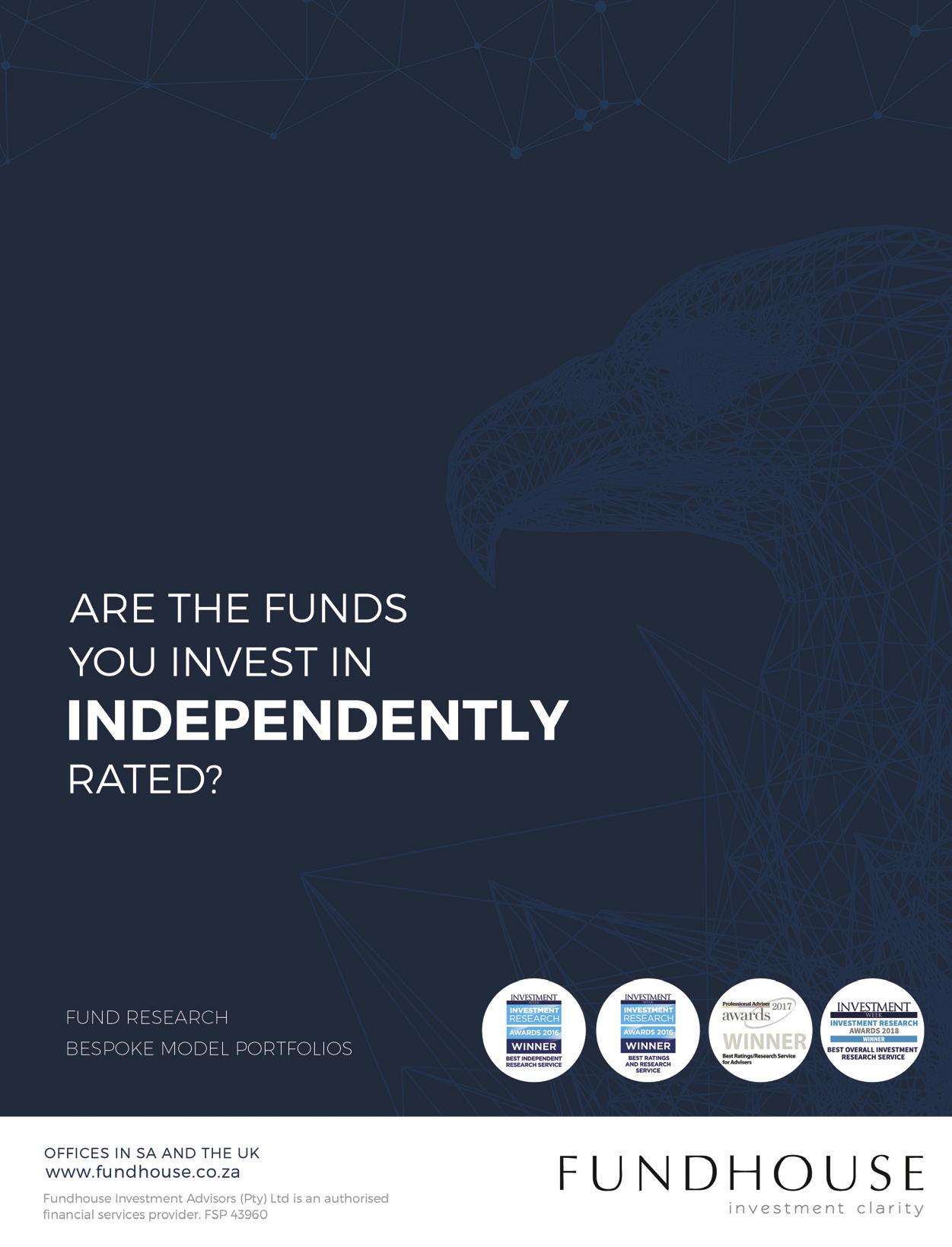
An exclusive Blue Chip discussion with three of the country’s top investment and financial planning professionals focusing on Discretionary Fund Managers and how financial planners can best utilise their services.
Andrew Finlayson [AF]: When evaluating a DFM, what should you caution against?
Florbela Yates [FY]: Performance is important. I would argue that, as an advisor, you should look at the DFM the same way you would look at any asset manager. If they are not adding value after fees that would probably be a trigger. Unfortunately, the disadvantage is that the model portfolio offering isn’t regulated so it is difficult to compare the performance of one DFM to another. I would certainly be pro the industry becoming more regulated because then you’ve got transparency. But at this stage that’s difficult. From an advisor perspective, the only way to measure a DFM is to check if the portfolio is achieving the outcomes that you’re looking for and how they compare to the peers. You can look at the ASISA category to see what the peer group average is, for example.
The second red flag would be how the fees are shown and how transparent they are. It’s important for advisors and clients to be able to see the DFM fee separate from the underlying manager fees.
The most important thing for a DFM is to remain sustainable to cover your costs.
The third point is if the philosophy has changed – so if you as an advisor have asked your DFM to put together a bespoke offering that’s aligned to your advice process and the DFM starts drifting from that, a mandate breach or they just start adding too many funds that you’re not comfortable with or there’s a huge cost drive and they start putting in too many passives just to manage costs, that would probably be a trigger.
Sometimes businesses change, so the reason you appointed a DFM five years ago might be different now and you’re looking for something else. If the DFM you’ve chosen can’t give you that or they haven’t kept up with the tech and you need more tech
in your practice, all those things could be a trigger to potentially replacing a DFM.
Internationally we’ve seen a trend where advisors sometimes use more than one DFM. In South Africa, the market is so small I am not sure that it would necessarily be a trigger but what we have noticed is that sometimes an advisor would use one DFM for their local offering and a different one for their international offering and that’s become a little bit more pronounced. Certainly, at Equilibrium, we are asked more and more to come and speak to advisors who may be happy with the local partnership but want a global DFM to start managing their offshore portion.
Craig Gradidge [CG]: For us, if the DFM becomes a bit too prescriptive in terms of the solutions and asset allocation, then they start to look like another fund manager selling products. Ultimately for us, independence adds enormous value to clients, and it is something we guard quite zealously. So, if the DFM says, “Well, it’s my way or the highway,” then for us, the highway would be what we choose.
Also, if you have a DFM that’s a bit rigid in terms of issues like active and passive management, for example. We’re firm supporters of both, we think both have enormous value. So, a DFM that is a bit too rigid and prescriptive would be a big dealbreaker for us. I think a DFM who does not pay attention to issues like costs and volatility would also be a deal-breaker.
AF: In the DFM space, it seems that scale is important because you have advisors wanting more – whether it be more tech or coverage of more assets. How much of a risk is this kind of race to the bottom from a fee perspective, given what is expected of them?
FY: The most important thing for a DFM is to remain sustainable to cover your costs. As a DFM, you should be able to differentiate your offering so if a client is buying your standard off-the-shelf model portfolio, you probably could discount it versus a bespoke offering because with the off-the-shelf model you build scale in one portfolio range. If you’re running a bespoke offering you need to treat it as a separate range.



My view is that DFMs should be trying to drive overall costs down. You need to compare the total investment charge that you would be paying with the underlying funds as well as the DFM. So, advisors should add the underlying funds plus the DFM fee and compare that to what you would get as an advisor if you went directly to those fund managers and selected them yourself. You would pay the full retail fee in most instances.
I don’t think it should be a race to zero because again if you’re not covering your costs you’re not going to be around. More importantly, it is also the types of underlying assets that you’ve got. The passive component should be cheaper while you pay a little
bit more for the active. One should also factor in things like the value that advisors place on portfolio construction; they often can’t do all the underlying portfolio construction holistically so they’re happy to pay a fee for that. It must be an appropriate fee and commensurate with the service that you’re getting.
To watch the round table series in full, visit www.bluechipdigital.co.za or scan the QR code.


Lifestyle financial planning goes beyond giving advice. It is about truly getting to know your clients, building meaningful relationships and understanding their needs. Only then can you co-create a financial plan that is tailored to their unique circumstances. Financial coaching is a powerful tool that enhances your ability to understand both yourself and your clients through effective interpersonal skills. It allows you to delve deeper into your clients’ way of living, asking the right questions that will help clients see more of what they want and how they
can achieve it. This will lead you to be able to connect with your clients on a deeper level, building trust for strong and lasting relationships.
Our Integrated Financial Coaching course covers essential coaching skills necessary to seamlessly integrate coaching into your practice. It incorporates the latest international trends, techniques and methodologies, helping you better understand your clients and their ambitions, enhancing your value-add to your clients.
With this course, you will:
• Develop deeper listening and questioning techniques
Apply coaching methodologies and tools
• Learn the neuroscience behind making decisions
• Adopt the lifestyle financial planning philosophy and learn how to incorporate that into your planning process
Develop techniques and tools for questioning clients’ money relationships.
You will have access to online workshops and unique training opportunities, providing you with all the practical tools you need to implement within your financial planning practice, ensuring better client outcomes.
1. Understanding coaching principles
Grasp the basics of coaching and relate to your clients by using coaching skills and a coaching mindset.
2. Connecting coaching and financial planning
Understand the relationship between coaching and financial planning, and have meaningful conversations with clients to co-create financial plans aligned with their lifestyles.
3. Using objectivity to advise clients
Recognise how to step into the role of a coach, helping clients solve their problems objectively and effectively. Stepping into the role of a coach has proven to be the most effective way to help your clients become financially sound and successful.
4. Understanding the impact of relationships with money on financial wellbeing
Working with a client’s relationship with money and helping them break free from limiting beliefs and assumptions can only happen if you, as a planner, understand your own blind spots around money. Identify and be aware of your relationship with money, and let your judgement go, so you can see the client clearly.
5. Working with limiting assumptions and the stories told around money
Our assumptions and beliefs about money determine our financial story and how we relate to the world around us. Looking at and working with limiting beliefs can help a client reconnect with the true meaning of money, thereby helping them manage their investments in a way that best serves them.
6. Understanding lifestyle financial planning and how to incorporate it into client engagements
Planning for the person and not their money, focusing on what they want to achieve and how their money supports that, are important considerations. Define how performance and fees impact goal planning and identify what is in their control, to help them assume responsibility for their financial wellbeing.

This course is moderated by Sharon Moller, Financial Planning Coach at Old Mutual Wealth. She is a Professional Certified Coach (PCC) through the International Coaching Federation, a Certified Integral Coach® through New Venture West, and a Certified Financial Planner®. Sharon is responsible for embedding the Old Mutual Wealth advice process using coaching principles and methodology to help our planners articulate their core value proposition. With over 20 years of experience in the financial services industry, she is well equipped to assist planners in understanding their clients and how they relate to their money. She is a Certified Level 1 and 2 Enneagram Practitioner.
The Integrated Financial Coaching course is an induction programme which includes one virtual 90-minute workshop session per week.
The course fee is R15 000 (excl. VAT), which can be paid as a one-off fee or in scheduled payments.
For more information on how to register, please email futurefit@omwealth.co.za.


For any partnership to work, it needs to have defined expectations, unlimited trust and a certain amount of chemistry. Any healthy, mutually beneficial relationship requires each party to bring their qualities to the partnership, with the magic coming from shared visions and goals.

As we progress through the various stages of our lives, it’s natural that our requirements for that partner change and evolve. It’s often that we are looking for a certain “type”, whether that be someone adventurous, trouble -free or dependable.
Capital International Group places significant importance on nurturing our relationships with you, the intermediary. We work to understand your clients; we adapt to their requirements and strive to meet all their investment needs under one roof. No matter what your “type”, we can provide a suitable solution, whether that be by using our execution-only investment platform or by outsourcing decision-making to our expert investment management team. We can understand and adapt to you, becoming your perfect offshore partner.
The solid, reliable one
Operating from the Isle of Man for over 25 years, Capital International Group provides that all-important stability upon which a great long-term relationship can be built. With crown dependency status, the oldest parliament in the world and a thriving and highly regulated financial services sector, the island has a lot to offer. Alongside a local team in South Africa, Capital International Group can provide a gateway to this jurisdiction, helping your clients enjoy its many benefits with peace of mind over their investments.
The globetrotter
It’s a big, wide world out there and what better way to make the most of the opportunities available than by exploring with a
well-travelled partner? At Capital International Group, our open architecture, execution-only investment platform can provide you with simplified access to all corners of the globe, with the ability to invest in assets across all major stock exchanges in a wide range of asset classes – the choice is virtually limitless. Not only that but in terms of our physical presence, Capital International Group is a truly international business, with offices around the world, including Cape Town and Johannesburg, and a client base of financial intermediaries and high-net-worth individuals spanning over 100 countries.
For South African investors looking to move money offshore, we know that there are many complex factors and considerations and that it is essential to find a partner that can take the stress out of the process and assist you and your clients on this journey. It is our collaborative approach that enables us to better understand your business, adapting to your unique requirements to ensure your needs always come first.
The low-maintenance type
We all know that relationships can be intense and demand lots of time and effort to maintain. However, depending on your circumstances, you may be looking for the exact opposite: a minimal-fuss partner that slots in seamlessly to your life yet manages to improve it immeasurably.
Using our online investment platform and our highly attentive service teams, a relationship with Capital International Group enables you to focus on adding value to your clients and their financial planning requirements. If you are looking for a lowmaintenance way to invest, while reducing risk and freeing up

your time to build better relationships with your clients, our discretionary investment management service team can take the stress out of the day-to-day management of your portfolios.
The high-flyer
To provide sustainable outperformance, we offer strategies and solutions to suit a range of client types. Our investment team possesses over 200 years of global industry experience and can be accessed by you and your clients at any point in the lifespan. Through the strength of the team, our investment strategies have delivered consistent and strong risk-adjusted returns benchmarked against relevant peer group indices, helping intermediaries like you to meet the high-flying performance expectations of your clients.
A partner with simple solutions to complex problems
Complex factors abound when investing offshore and it’s essential to find a partner that can provide innovative solutions to various challenges that arise. While many advisors will traditionally make use of endowments to appropriately deal with situs, probate, taxation and costs, due to recent changes in the market because of globalisation these products are not necessarily fit for purpose. Our investment team faced these same issues and with necessity being the mother of invention, the team built a single investment solution that deals with issues such as emigration, jurisdiction, situs and probate, among others.
Capital International Group’s “Kinesis Service”, with the issuance of Principal Contracts, allows advisors and investment managers to establish their investment strategy within a Principal Contract. This removes the issues of situs and provides complete investment flexibility, while retaining simplified administration, all from a single service provider with minimal cost. The Kinesis
Service can provide tax efficiencies for South African investors too. In addition, it provides the investment manager with simplified administration and reporting, can be transported globally, and can address multiple clients’ needs in ways that traditional investment vehicles simply cannot.
By applying the same level of innovation that created the Kinesis Service, we ensure we are constantly evolving and investing in our offering to help intermediaries and their clients achieve their financial objectives. We recently adopted a Deed of Donation Mortis Causa (DMC) process framework. This allows an individual donor (the account owner) domiciled in South Africa to nominate a donee to receive the proceeds of their investment account after death.
The DMC ensures that the proceeds of the investment account are payable upon the death of the account owner (or, in the case of joint account owners, on the death of the last dying joint account owner) and there is no requirement for the completion of probate in the Isle of Man nor for the administration of estates process in South Africa via the Master’s Office, as assets donated under a DMC do not fall within the deceased’s probate estate.
Have you found your perfect partner?
Capital International Group offers the ultimate suite of investment options; from our open-architecture investment platform to our managed bespoke portfolios, we have solutions to suit a wide range of client types and investment needs.
We work closely and collaboratively with a broad spectrum of professional firms and advisory businesses, building trusted and transparent relationships, making us the perfect partner for investors looking to take their investments offshore.
www.capital-iom.com
The purpose of financial advice is to assist investors and guide them to make rational, informed decisions to achieve their investment objectives. However, the difficulty lies in converting advice into value, in other words, placing tangible value on the opinions and recommendations of another. This is even more pertinent today, where the amount of advice available to investors – whether from friends or news and media outlets – is constantly available, reminiscent of the quote, “Opinions are like belly buttons; everybody has one.”
For investors, it is often the case that performance is king. Their pursuit of returns and the desire to match or exceed market benchmarks can create pressure along the investment journey. It is for this reason that research consistently shows that investors who collaborate with qualified financial advisors significantly improve their chances of reaching their financial goals.
What yardstick can we use to evaluate the performance of a financial advisor?
A recent study by Russell Investments in the United States titled, “Value of an Advisor”, quantifies multiple ways financial advisors add value to a client’s investment portfolio due to a holistic focus.
*Based on differences in risk-adjusted returns of a typical actively rebalanced multi-asset portfolio held from 2003-2022, and one that was not rebalanced.
*Based on differences in the average US equity investor returns from 2008-2022, and that of the S&P500.
*Based on differential calculated over and above the basic asset management capability of a robo-advisor.
*Based on average differences in return between tax-managed and non-tax managed US equity funds.
susceptible to behavioural biases such as emotions that ultimately reward. The results from the study confirm that behavioural coaching contributes the largest portion (2.54%) of the overall value provided by a financial advisor.
Let us briefly explore all four areas below:
The study found that without any rebalancing, a hypothetical balanced portfolio, illustrated in Figure 2, allocated to 60% equities (including real estate) and 40% fixed income at the start of January 2009, would have adjusted to 82% equities (including real estate) and 18% fixed income by the end of 2022, significantly altering its allocation and risk profile. The same drift in exposure would also apply to sector allocation and investment styles.
The active role a financial advisor plays to avoid a set-and-forget approach manages to control any undue risk to a client’s portfolio. The value of an advisor in this regard would be the discipline of systematic rebalancing and monitoring, aligned with understanding investors’ goals.
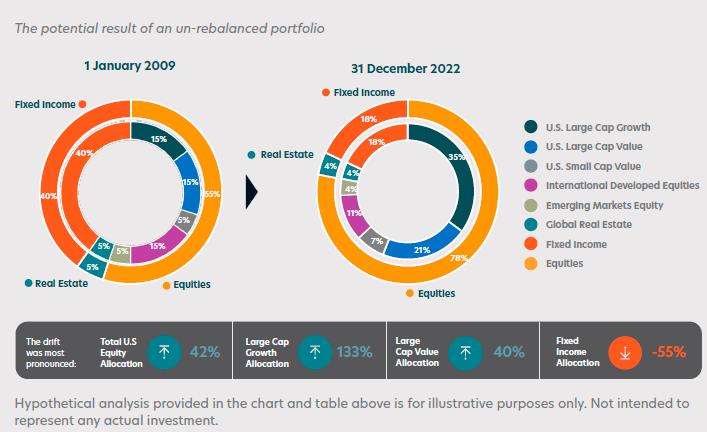
With global events unfolding, including elevated interest rates, soaring inflation and geopolitical tensions, markets in general are proving tough to predict. There is no better time to have a financial advisor by your side. We believe that in addition to the financial and wealth management expertise provided by a financial advisor, it is the provision of discipline and reason to clients who are often
It is well documented that trying to time the market by selling at the bottom or not getting back into the market until it is near the top (otherwise known as chasers), can significantly hurt investor performance.
As disclosed in the study, the difference in returns of the average “chaser” in the US equity market over the 15 years under review and the S&P500 market index was quite substantial.
Figure 3 illustrates that during times of big and long market cycles, investors experience fear and greed. These are two of the main drivers of the biggest behavioural mistakes investors make when investing. The beauty of behavioural coaching is that when panic sets in or an investor feels the urge to disinvest or invest more in the same thing, the calmness, perception and acumen of an advisor kicks in. Undoubtedly, this is the largest potential value-add of a financial advisor – helping clients maintain a longterm perspective through different market cycles and discouraging “chasing” – which can save investors from potential wealth erosion.

The demands placed on financial advisors have increased exponentially over the years.
The study discovered that the guidance a financial advisor provides, helping clients through life’s defining moments, aligning investments with goals, and offering expertise on various financial matters like insurance, taxes and retirement planning, holds additional value beyond the basic asset management offered by a robo-advisor.
As expectations for customisation and personalisation rise, fuelled by examples like Netflix recommending tailored shows, and as client lives and family dynamics become more complex, it is impossible for any single financial advisor to possess the broad expertise, experience or knowledge needed to address all client needs and priorities today.
The ability of a financial advisor to manage these processes and collaborate with experts who share their clients’ interests, when necessary, can prove decisive. Only a financial advisor with a deep understanding of a client’s circumstances and a genuine care for their family and aspirations can spearhead their clients’ financial success.
It is obvious that no-one likes taxes, but investors need to fully understand the tax implications of some of their investment choices.
The study analysed how investors lost an average of 2.07% of their return from non-tax-managed US equity products in each of the five years ending 31 December 2022. However, an investor who invested in favourable tax-managed US equity funds would have given up only 0.90%. The difference is significant, and even more so when compounded.
Without proper tax management, many investors end up paying more than they need to every year. The myriad of taxes that investments can trigger can include a tax on dividends, capital gains tax, securities transfer tax, and so on. A financial advisor can proactively manage and implement a tax-conscious approach to benefit their client. It is clear from the insights above that significant “alpha” can be generated within an investment portfolio, thanks to the value-enhancing strategies of a financial advisor.
There are many facets to the transformation of the modern-day financial advisor. The value-adding responsibilities of acting as a behavioural coach, providing holistic advice and customer experience, ensuring tax-efficient planning, and crucially, continuing to advise on the technical aspects of investment advice are increasingly in the spotlight. Juggling everything while being keenly aware that clients are demanding more from their financial advisors as they keep an eye on the fees they are being charged, only adds to increased complexity.
For the financial advisor, partnering with a reputable DFM, who possesses the necessary scale and expertise to take care of their investment research, analysis, reporting, compliance and day-to-day management of investment portfolios, is a smart move. It frees up significant time and resources for financial advisors to spend impactful time with their clients.
Therefore, our advice to the financial advisor is: “Just as we advocate for investors to seek advice at all costs, we equally maintain a strong conviction that financial advisors themselves should tap into the expert DFM capabilities of Investment Solutions by Alexforbes to support them as an extension of their practice.”
While hypothetical scenarios attempt to quantify the value of advice, the reality is that the true worth of financial advisors lies in the tangible actions and unique perspectives they offer clients. It is the appreciation that a client’s time is valuable and should be spent partnering with a trusted financial advisor. We encourage advisors to clearly communicate their advice proposition, to scale the value back to their clients. We encourage investors to continue to maintain strong relationships with their financial advisors.
For both, we believe, they will be making their greatest impact.

Edward Semenya, Senior Investment Specialist,
Alexforbes.
Inflation is the risk that investors will face in retirement. This requires careful navigation when selecting your retirement income options, argues Coronation.
Aretirement income that lasts or is delivered through a smooth return path is meaningless if it doesn’t produce the necessary returns to keep pace with (or ideally beat) inflation. Unfortunately, knowing what inflation figure you need to use, or stress test for, as part of your retirement income planning is a tough call to make. The potential outcomes are broad and the forecast risk is therefore high. This article explains the importance of choosing the right retirement income option within the context of potentially higher inflationary scenarios and how one of these options helps you avoid making such an important call about future inflation, regardless of the outcome.
A quick reminder about your retirement income options
Upon retirement, investors have two options from which to draw their retirement incomes:
• A life annuity, which is an insurance policy that guarantees a pension income for the rest of your life.
• A living annuity, which is an investment-linked account held in your name.
There are three types of life annuities, each offering a different guaranteed income drawdown rate for life. In the case of a living annuity, your income drawdown rate remains flexible (within certain legislated limits), allowing you to adjust it in response to the underlying performance of your chosen investment portfolio.
Why life annuities have become more popular recently
For much of the last two decades, living annuities have been the most popular retirement income option (comprising ~90% of annuity purchases at retirement). However, life annuities have become more popular recently, taking the split closer to 60% in favour of living annuity purchases and 40% in favour of life annuities. This growth in popularity is thanks to the higher starting retirement income rates for life annuities driven by elevated yields on long bonds. This is because the life insurers (who issue life annuities) typically buy government and other high-quality bonds to back the guaranteed future obligations (retirement incomes for life) they must pay to their annuitants. Long bond yields are currently high due to several country-specific factors, which we have written about on several occasions[1]
In turn, the value proposition offered by living annuities did not meet expectations over the past decade, following a period of disappointing returns from South African assets in general and risky assets specifically. This has since resulted in a shift in asset allocation in favour of fixed-income assets supporting the portfolios that typically back this type of annuity.
escalating annuities
If you prefer a guaranteed retirement income, you can choose between a level, fixed percentage escalating or an inflationlinked income as explained below. In 2023, nearly all life annuity purchases were fixed escalating annuities, while very few retirees chose full inflation protection of their income stream. This preference is understandable, given the materially higher initial income level achievable as shown in the following figure.

While the 5% escalation rate has been a good proxy for inflation in South Africa in recent years, coupled with the rhetoric from the South African Reserve Bank (SARB) around anchoring local inflation expectations lower to be more in line with global competitors, the implicit assumption that buyers of fixed escalating annuities make is that inflation will remain around 5% pa for the next 20 to 25 years. We think this is a mistake and akin to insuring your car against a fender bender (mild inflationary outcome), but not a total write-off scenario (double-digit inflation).
We have become used to a benign inflationary environment in South Africa, with annual price increases typically within the
SARB’s target range of 3% and 6%. The period of high inflation experienced in the 1970s and 1980s seems far in the distant past.

While our base case is that monetary policy will remain sound and that inflation should stay close to the target, the tail risk of a period of much higher inflation over the next two decades has increased. This is because of the additional funding required because of deteriorating government finances, as demonstrated by the increasing disconnect between government expenditure (blue line) and revenue (mint line).

While National Treasury has done well in containing spending in the fiscal year 2023/2024, looking ahead, however, decisions about large allocations (such as the long-term future of the Social Relief of Distress grant, funding of national health insurance and additional investment in critical infrastructure) have yet to be made.
Why this matters so much to investors
Let’s consider a simplified model to illustrate the importance of selecting the right retirement income strategy within the context of potentially higher future inflation.
The graph below represents the retirement income level for an investment of R1-million given certain assumptions (see figure below). The starting income for the level life annuity is defined by the mint bar, for the escalating annuity in blue and the inflation-linked annuity in grey. Suppose we assume the lowest starting income amount to be equal to your current living expenses (as represented by the light blue line) coupled with a benign inflationary environment (5% inflation over 20 years). In that case, only the level annuity’s income falls behind in purchasing power after 15 years. And after 20 years, selecting this annuity option would leave you 23% behind in living expenses.
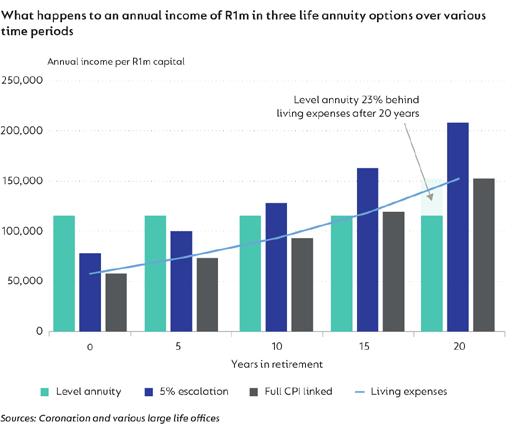
Suppose we consider a blow-out scenario, with high inflation of 15% pa over 20 years. In that case, the retirement income paid out by a level and escalating annuity will fall behind one’s living expenses by around year five. In contrast, the income from an inflation-linked annuity continues to offer protection for 20 years.

Life annuities force retirees into making a difficult tradeoff between maximising either their initial income rate or longterm inflation protection.
Notably, while the 15% inflation scenario is purely hypothetical, it is not entirely inconceivable, as shown in Figure 2 (1970s to early 1990s). Think of this as a stress test of the robustness of your chosen retirement income strategy.
Harnessing the flexibility of a living annuity
Let’s compare this to a living annuity where the underlying investment portfolio consists of an actively managed multi-asset portfolio with enough growth assets (60% to 70%) to achieve meaningful real returns over time such as the Coronation Capital Plus Fund. (This fund aims to achieve a return of 4% above inflation while minimising volatility and has historically achieved 5% to 6% above inflation.) Importantly, the inclusion of growth assets in the portfolio funding your retirement income means that you have a decent probability of protecting purchasing power in both the benign and blow-out inflationary scenarios.

Putting it all together
Calculating the present value of the cash flows of the respective life and living annuity options is a different way of examining these scenarios.
In the Figure 7, and using the same assumptions as above, we show how well your chosen annuity option protects the purchasing power of R1-million over 20 years given the two inflationary scenarios (5% benign or 15% blow-out). Note that a
[1] https://www.coronation.com/en-za/personal/latest-insights/authors/nishan-maharaj/

present value of less than R1-million means that purchasing power hasn’t been protected over this period.
• Of the three life annuity options, selecting the 5% escalating annuity offers the best value in a benign (5%) inflationary scenario, whereas choosing the inflation-linked annuity delivers the best outcome in a high inflation (15%) scenario. This demonstrates that the preferred life annuity option depends on the inflation outcome (an unknown variable), effectively requiring investors who purchase life annuities to bet on the rate of inflation over the coming decades.
• In turn, the living annuity option (assuming the target rate of real returns are achieved from its underlying portfolio) managed to deliver good value in both benign and blow-out inflationary scenarios, potentially delivering much more valuable outcomes in a blow-out inflationary scenario. This is primarily thanks to the flexibility of a living annuity that allows investors to choose an underlying portfolio that can deliver inflation-beating returns through exposure to growth assets.
While life annuities are often perceived to be lower risk than living annuities as they remove sequence-of-return and longevity risks, they force retirees into making a difficult trade-off between maximising either their initial income rate or long-term inflation protection. The flexibility inherent in living annuities, primarily through enabling the inclusion of growth assets in your retirement portfolio, improves the probability of achieving good outcomes regardless of the actual inflation scenario. This removes the need to take a view on the future path of inflation at the point of retirement.
This analysis shows that navigating post-retirement income options is complex and requires careful consideration, which explains why most investors will benefit from the assistance of their financial advisor when making life-defining decisions at the point of retirement.
In the ever-evolving landscape of financial planning, innovative approaches are imperative to engage and educate today’s workforce.
One such promising strategy is gamification, particularly in the realm of retirement preparedness. A recent study by Chrizaan Grobbelaar, a doctoral candidate at the University of the Free State, has shed light on the potential of gamification to significantly enhance the financial literacy and retirement preparedness of millennials.
Millennials, defined as individuals born between 1981 and 1996, are currently between the ages of 28 and 43. They face unique financial challenges, including substantial student debt, a fluctuating job market and a general mistrust of long-term financial systems. Consequently, many prioritise immediate financial needs over long-term savings, often resulting in insufficient retirement funds. This demographic is also characterised by their tech-savvy nature, familiarity with gaming dynamics and preference for interactive and engaging experiences.
Grobbelaar’s study aimed to explore the effectiveness of a gamified retirement planning application in improving millennials’ financial literacy and retirement preparedness. The research employed a randomised control experiment with three groups: a control group, an experimental group exposed to the gamified app and another experimental group provided with educational infographics.
literacy, traditional educational tools may still be more effective for in-depth knowledge on specific topics.
Retirement preparedness. The gamification group demonstrated increased interest in retirement planning, highlighting the potential of gamified approaches to motivate individuals to engage with their financial futures. This increased engagement is crucial for fostering better retirement planning habits among millennials.
The implications of these findings are significant for the financial planning industry. By incorporating gamification into financial education programmes, we can create more engaging and effective learning experiences that cater to the unique preferences and challenges of millennials. Gamification not only makes learning fun but also provides immediate feedback and rewards, which can motivate individuals to adopt better financial habits. However, it is important to recognise that gamification is not a one-size-fits-all solution. While it enhances basic financial literacy and engagement, traditional educational tools like infographics still play a crucial role in imparting in-depth knowledge. A blended approach that combines the strengths of both methods may be the most effective strategy for comprehensive financial education.
Professor Liezel Alsemgeest, Director: School of Financial Planning Law, UFS

The study’s findings were compelling: Effectiveness of gamification. The gamified retirement planning app significantly improved basic financial literacy scores by 7.3%, compared to a 6.4% increase in the education group and a 3.3% increase in the control group. This suggests that gamification can make learning about financial concepts more engaging and effective.
Financial retirement literacy. Interestingly, educational infographics were more effective in increasing financial retirement literacy, with a 12.9% improvement compared to a 2.9% increase in the gamification group and no change in the control group. This indicates that while gamification improves general financial
As financial planners, it is our responsibility to innovate and adapt our approaches to meet the needs of our clients. By leveraging gamification, we can help millennials – and future generations – navigate the complexities of retirement planning and secure a financially stable future. Embracing such innovative tools not only enhances the services we offer but also contributes to the broader goal of improving financial literacy and retirement preparedness.
Gamification holds great promise for transforming financial education. As we continue to explore and refine these tools, we must remain committed to providing the best possible resources and support to our clients, ensuring that they are well-equipped to achieve their financial goals and enjoy a secure retirement.
PwC’s report, ETFs 2026: The Next Big Leap, reveals that 58% of respondents expect global exchange-traded fund (ETF) assets under management (AUM) to reach USD18-trillion by 2026. Additionally, 84% anticipate that online platforms will become the primary source of future demand for ETFs. This global trend is mirrored in South Africa, where Satrix introduced the first ETF in 2000.
The South African ETF industry has experienced impressive growth. As of December 2023, the total ETF industry AUM, including commodities, reached R147.9-billion, a growth of 25.4% from the previous year. Satrix, specifically, has seen its ETF AUM grow from R25.5-billion in December 2020 to R52.3-billion in December 2023, reflecting a compound annual growth rate (CAGR) of 27.1% per annum, compared to the industry growth rate of 13.2% per annum.
We are still seeing healthy flows into ETFs midway into 2024, with nearly R4-billion of net flows into the range of ETFs available in South Africa, with Satrix receiving 40% of these flows. This robust activity, despite some product consolidation, underscores the ongoing appeal and resilience of ETFs.
Here’s why ETFs should be an attractive option for financial advisors to diversify client portfolios:
ETFs employ rules-based or systemic strategies, offering clients greater transparency and consistency in their investment choices. These strategies rebalance back to their stated objectives, providing clients with the confidence that they will always get what’s on the label. This predictability builds greater investor confidence.
The arithmetic of active management suggests that, after accounting for higher fees and transaction costs, the average actively managed rand will underperform the average broad-market indexed rand. While an index fund might slightly underperform the market benchmark it tracks, its cost-effectiveness often leads to significantly better-than-median returns over the medium to long term. The lower costs associated with index-based ETFs can significantly improve overall investment outcomes through the consistent compounding of lower fees.

ETFs are designed to protect existing investors from the costs generated by others entering or exiting the fund, unlike unit trusts. This design feature shields long-term investors from external churn, safeguarding their performance and ensuring a fairer cost structure.
ETFs offer a broader range of investment strategies compared to index fund unit trusts, which enables advisors to construct more tailored portfolios for clients. They facilitate access to diverse asset classes through the stock exchange mechanism. This provides a transparent and liquid way to gain exposure to traditionally more opaque and complex asset classes, such as bonds, currency or commodities.
Five to 10 years ago, there was considerable scepticism regarding the adoption of ETFs in South Africa due to the unique characteristics of our market. However, with over two decades of index history now available for analysis, ETFs have proven their worth. We’ve also seen robust growth in the take-up of ETFs, since being made available on LISP platforms. The last three years to June 2024 saw AUM grow almost five-fold, from just over R1-billion to over R5-billion. The arithmetic of active management is becoming more evident to advisors and investors, further boosting the case for ETFs.
In volatile markets, ETFs provide significant benefits for risk mitigation through diversification. The increased range of investment strategy choices across different asset classes or even multi-asset class (balanced) ETFs allows advisors to construct well-diversified portfolios for clients that capture their desired themes. For example, advisors can employ a lowvolatility local equity strategy through the Satrix Low Volatility ETF or gain high rand-hedge exposure for clients via the Satrix JSE Global Equity ETF. Defensive options include interestbearing ETFs like the Satrix Local Bond ETF and Satrix Global Bond ETF.
ETFs offer both offshore and local exposure. For example, the Satrix MSCI ACWI ETF tracks the MSCI All Country World Index, providing exposure to over 2 800 companies across 23 developed and 24 emerging markets. Other options include thematic strategies like the Satrix Nasdaq 100 Feeder ETF for technological innovation and the Satrix MSCI World ESG Enhanced Feeder ETF for climate transition and ESG investing.
The ETF boom in South Africa is multi-faceted, driven by cost efficiency, performance and accessibility. As advisors, understanding these drivers will help you guide your clients better and offer a broader palette of effective investment strategies.
Kingsley Williams, Chief Investment Officer, Satrix

































Indices can be actively designed, like our Factor Range. Indices can be geographically diversified, like our Global ETF Range. Indices can be optimally designed like our Multi-Asset Range Indices can be designed to target themes, like our Thematic Range.








While indices can take many di erent forms, all are transparent and low-cost.








Take control of what you’re investing in by incorporating indexation into your portfolio.




Contact us to learn more at institutional@satrix.co.za


















































Income fund investing is growing in importance, not only as a provider of income, but also as a real return driver. With a host of different possible styles and risks, how do you choose a manager to best suit your needs?
There are several reasons to invest in an income fund –to generate income, to be a ballast in a multi-asset fund or as a temporary warehouse for funds pending their investment elsewhere. But you always need to ensure your choice of fund manager is based on sound reasoning and not just because it’s a well-known name or due to past performance.
Income funds can be managed in different ways, from focusing on credit (corporate, parastatal or securitised debt) to
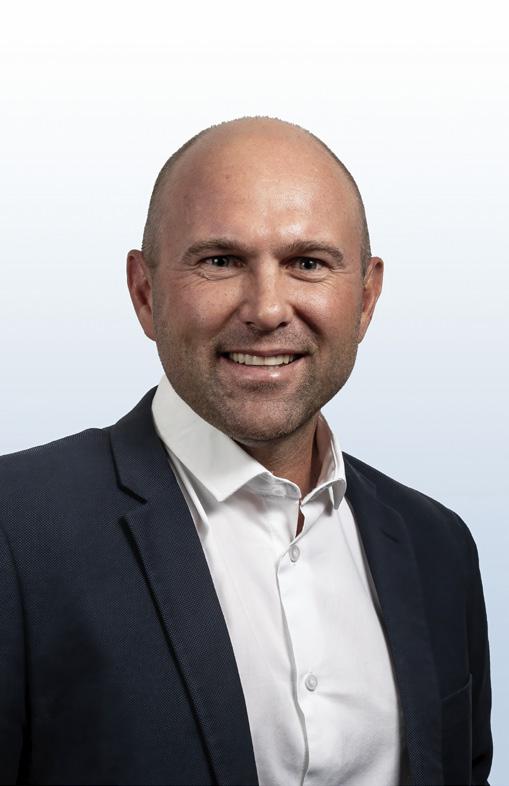
increasing fund yields or managing terms and duration (interest rate risk) in anticipation of changes in monetary policy or other macroeconomic factors.
There is no right or wrong – it ultimately depends on your investment needs. For example, how do they fit best into your total investment solution? What are the levels and types of risk you are willing to take?
Here is a guide to help you make an informed decision:
1. Define your investment objectives
Spend time with your financial advisor considering such points as:
• Are you saving in a retirement annuity or drawing income from a living annuity?
• Are you investing temporarily pending investing elsewhere or is this a long-term investment?
• Is this a stand-alone investment or part of a larger solution?
• What level of income and liquidity is required?
• What is your appetite for credit and duration risk?
2. Look at the fund manager’s investment strategy
Examine a fund manager’s strategy and ensure it’s designed to generate consistent and sustainable income. Assess how the fund allocates between income-producing investments and verify that the manager maintains this strategy over time. Popular investments include:
• Government debt such as listed nominal bonds, inflation-linked bonds or treasury bills.
• Fixed deposits and Negotiable Certificates of Deposit (NCDs) issued by banks.
• Subordinated bank debt.
• Corporate debt.
• Parastatal and municipal debt.
• Securitised debt (pools of loans, for example, mortgages, credit cards or vehicle financing).
The credit quality can vary considerably between these types of loans, and, in some cases, the return of capital becomes more important than the return on capital.
3. Review performance metrics
Look for income fund managers with sufficient experience and examine their track record across different market cycles. Look

beyond recent performance for funds that consistently deliver on their promise over time.
Although income funds focus on capital preservation and risk management, they also provide attractive real returns over inflation. These returns can have the occasional negative month, although most aim not to have any negative quarters.
In some cases, the return of capital becomes more important than the return on capital.
Examine the current and historical yield of the fund and compare this to the total return of the fund over time. Be aware if the performance is related to general market conditions or the manager’s abilities.
4. Evaluate risk management practices
“Rule No. 1: Never lose money. Rule No. 2: Never forget Rule No. 1.” – Warren Buffet
Performance generally requires a trade-off with risk – to achieve higher performance one must usually take on greater risk which can be difficult to identify.
Consider the various types of debt issued by high-quality borrowers – such as the South African government and big banks – that may offer low-risk yields of around 10% pa. Now, if a manager is holding an underlying security, let’s say something like securitised motor vehicle loans, that is yielding 15% pa, then you need be realistic about the risk associated in getting you that yield.
Investigate the risk management techniques of the manager and look for strategies that include measures to protect against significant losses, such as diversification of credit exposure or hedging. Note that the standard deviation of past returns reveals nothing about credit risk. To the contrary, most high-yielding corporate and securitised debt instruments tend to show very little price volatility over time.
At Matrix Fund Managers, we adopt a safety-first approach in assessing the different drivers of return and we favour those asset classes that will assist us in achieving our target performance with the least amount of risk. We focus on highly liquid securities with very low credit risk. We overlay thorough macro analysis and market research with proven in-house skills. Our robust processes have delivered compelling returns over time, in line with investor expectations on risk and volatility, without adopting unnecessary risk.


Investors looking beyond South Africa’s borders to diversify their portfolios globally typically focus on the opportunities provided by global equities. However, high interest rates in the currently uncertain investment environment provide another compelling opportunity to invest in high-yielding, low-risk globalincome assets.
Given the inherent volatility and political uncertainty of the South African economy, global diversification is crucial. Offshore investments in more stable economies act as a hedge against local economic fluctuations and provide a broader security net against domestic unpredictability, thereby mitigating the risks associated with the South African economy.
Investing in equities has always been the obvious choice when looking to diversify globally because South Africa’s stock market represents less than 1% of global stock market capitalisation. The JSE also offers limited exposure to the myriad of innovative and fast-growing industries, such as technology and pharmaceuticals, which are not well-represented on the JSE.
While investing in equities has traditionally been the go-to strategy for global diversification, South African investors need to explore other options. US dollar-denominated income assets, which are currently benefiting from the high-interest-rate environment offer a unique opportunity. These assets provide a conservative way to invest in US dollars, offering low-risk yields of 5% to 6% in dollars, which significantly outperform money market funds or cash.
Regulation 28 of the Pension Funds Act allows investors to allocate up to 45% of their portfolio offshore. This regulatory provision enables investors to diversify their investment exposure globally, and diversification, according to scientific evidence, has historically been the most significant risk-reducing strategy in investment that doesn’t compromise expected returns.
Global income funds are particularly appealing in the context of current global financial trends. These funds offer asset class diversification, certainty of returns and a reduced risk profile.
South African investors can access these through local investment platforms in the form of dollar-denominated funds or local currency feeder funds. Primary considerations when investing should be that the funds offer highly diversified exposure across
the more than 10 000 high-yield instruments available globally. It should be invested based on a risk-aware philosophy that optimises returns through high-quality, high-yield income assets.
As a systematic investment company committed to scienceand evidence-based investing, we understand the importance of empirically grounded investment strategies that take advantage of all available global investment opportunities, of which global income funds are an especially attractive investment option in a high-interest-rate environment. This strategy promises higher returns and ensures a more stable and diversified investment portfolio in the face of local and global economic uncertainties.

Bastian Teichgreeber, Chief Investment Officer, Prescient Investment Management



COULD AIRFARES IN AUSTRALIA AFFECT YOUR RETIREMENT SAVINGS? At





“It
is possible to fly without motors, but not without knowledge and skill.” – Wright brothers
We all expect different things from investment portfolios. Some investors require income over the medium term without putting capital at risk, while others have more patience but require significant real returns in exchange for their tolerance. There are also those who are unsure of what they need or what to expect, as long as the value of their portfolio doesn’t get eroded by inflation. As professional fund managers, our job is to provide investors with solutions that meet their requirements.
Broadly speaking, if you have a longer-term horizon, you may be better suited to higher equity allocations, typically up to 75%, while those with a shorter timeframe will typically have an equity allocation of 30% to 40%, with defensive asset classes like bonds and cash making up most of the portfolio. This is a broadly acknowledged cookie-cutter approach to multi-asset investing.

So, all good and well, we have the building blocks required to do so, but how do we approach the conundrum of trying to
1.) Deliver an above-average return, in line with the
2.) Ensure that the investment portfolio’s
3.) Safeguard their investments? Without going into the delicate intricacies of the multi-asset models we utilise, we can break this down into three wide-ranging guiding
What we do is ensure that over time, we realise greater value than the price we paid for an asset.
We remain disciplined through periods of poor performance, as there will be periods where capital markets do not deliver returns as anticipated. Markets have and always will be volatile, we can’t control what happens there, but we understand the historical return trend of asset classes, which helps with our allocations as well as to manage risk.
We are active managers, so we employ strategies to identify and capitalise on market opportunities. Over the short run, markets are driven by factors that change quickly such as headlines, trading activity and flows as well as sentiments. Markets can be very volatile over the short run and returns can be quite unpredictable.
These are the ebbs and flows of capital market returns. Capital markets don’t move in a straight line, and hence we remain alive to the opportunities that we can distill through our process.
We also remain wary of chasing yesterday’s winners and avoiding today’s dogs. Buying high and selling low is not the recipe for success.
No-one will consistently get market forecasts correct. We aim to be correct 60% of the time. Knowing that we can get it wrong and admitting as much when we do get it wrong, helps avoid blow-ups. And every year, as we go through another 12 months of varying degrees of market performance, we learn new lessons and continually improve our process.
Over the long term, asset allocation drives most while security selection will add short- to mediumterm alpha. Our process is a fundamental one, applied to both top-down allocation and bottom-up selection. We don’t try to time the market; a fundamental valuation approach cannot be used to time markets.
We also note that while portfolio diversification is important, we want to do it without losing the incremental benefits of having highconviction calls. Executed properly, this will maintain portfolio returns without taking on undue risk.
In conclusion, our approach to managing investment portfolios is anchored in a disciplined process, active management, and rigorous risk management. By adhering to these guiding principles, we strive to meet the diverse needs of our clients, ensuring that their investment objectives are achieved while safeguarding their capital. Through continuous learning within our diverse team, we aim to deliver consistent and above-average returns over the long term, providing our investors with the confidence and peace of mind they seek.
Kopano Makhu, Portfolio Manager, Mazi Asset Management
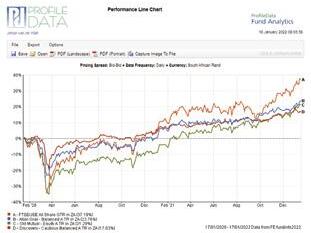

Retirement is a life event that brings about mixed emotions. Many individuals in South Africa approach it with excitement, others with anxiousness and uncertainty.
One of the challenges advisors face when preparing and managing a client’s retirement plan is to reduce the risk of the client running out of money during their retirement years. Some of the questions advisors often grapple with are:
1. What if the client lives longer than the typical life expectancy?
2. What if the client retires during a great financial crisis or a pandemic?
3. How much growth assets and offshore exposure should the portfolio hold?
4. How do you manage market risk in the portfolio?
These are just some of the questions our research has focused on over the last few years. The aim was to have an evidence-based framework to help advisors navigate the difficulty and dilemma of investing during a client’s retirement years.
Our research focused on developing strategies to address two key considerations when managing a portfolio for retirement:

While sequence risk is not as important in the accumulation phase of a client’s investment journey, it can make or break them financially, and emotionally, during the decumulation phase. Clients retiring at the start of a bull market often have a much better investment experience than those starting their retirement journey just before a major market correction or an adverse event like the Covid-19 pandemic.
But what can you, as a financial advisor, do to reduce sequence risk? Our research shows that appropriate asset allocation, based not only on long-term returns but also on incorporating different risk criteria, is critical in constructing a decumulation portfolio. Secondly, continuously applying tactical asset allocation based on the valuation of asset classes is one of the best strategies to mitigate sequence risk. However, implementing this requires a portfolio mandate specifically developed and managed for retirement
investing. That’s why we believe an outcomes-based investment strategy implemented through building blocks is appropriate for this purpose.
The second consideration is longevity. In 2022, South Africa had the largest elderly population in its history. Living longer may be wonderful, but it also means your retirement portfolio needs to last longer. Therefore, when constructing a portfolio for retirement, the ruin probability should be considered. Ruin probability refers to
6% initial withdrawal, 5% escalation, 30-year investment horizon
7% initial withdrawal, 5% escalation, 30-year investment horizon
Growth assets 40%-60% 80%-90%
Defensive assets 40%-60% 10%-20%
Local assets 70%-80% 65%-70%
Foreign assets 20%-30% 30%-35%
RUIN
PROBABILITY 12% or less 33% or less
the likelihood of a retirement portfolio being unable to provide the income required for the specified investment horizon. Our research found that ruin probability can be reduced through appropriate asset allocation. However, the optimal mix of growth assets and offshore exposure is affected by the portfolio withdrawal rate.
Our research found that at a 5% withdrawal rate, the ruin probability can be reduced to less than 5%. It is also interesting to note that at this withdrawal rate, the ideal portfolio requires fewer growth assets and less offshore exposure – the main drivers of risk in a portfolio – than expected. As indicated in the table above, the exposure to growth and offshore assets increases as the withdrawal rate increases. However, increasing these assets does not mitigate the ruin probability. At a 7% withdrawal rate, a client has a 33% probability of running out of money before the 30-year investment horizon.
Findings like these indicate that constructing a retirement portfolio entails more than selecting the right funds; it requires portfolio design based on defined financial and behavioural outcomes.
Marius van der Merwe, Chief Executive Officer, Amity Investment Solutions





A great investment experience enhances a client’s financial wellbeing by enabling their ideal life, ensuring the investment solution is behaviourally in sync, and delivering consistent investment returns.
Amity Investment Solutions is a boutique DFM which enables financial advisors to consistently deliver a great advice experience to clients through our integrated investment management tools and outcomes-based investment solutions. Our range of outcomes-based investment solutions are managed to:

Deliver a predefined return outcome over a rolling investment horison.

Actively manage the solutions risk within a predefined risk budget. An engaging investment planning process



Maximise the consistency of achieving the outcome over a rolling investment horison.



Preserve capital against inflation as a minimum outcome over the investment horison.

Contact us to find out how Amity can enhance your advice proposition to clients.



Carmel Wealth, a leading South African wealth management firm, has recently received strategic investments from two global investment companies: Correlation Holdings (Correlation) and ThirdStream Partners (ThirdStream). These investments underscore Carmel Wealth’s commitment to driving future growth and delivering superior outcomes for independent financial advisors (IFAs).
Correlation, a UK-based privately-held investment company, specialises in long-term strategic partnerships with premier financial services companies. Their backing of Carmel Wealth aligns with their mission to support highly experienced entrepreneurial businesses. ThirdStream, a US-based private investment entity, has increased its equity stake in Carmel Wealth. ThirdStream is known for investing in venture and strategic opportunities in leading financial technologies (FinTech) and financial services.
Since its inception in January 2023, Carmel Wealth has experienced solid growth. The firm focuses on providing IFAs with strategic growth opportunities and flexible retirement and succession solutions. By assisting with long-term capital, technology enablement, compliance and risk services, investment solutions
and proposition enhancements advisors can deliver superior outcomes to their clients and unlock enterprise value.
The closing of these investments is a testament to Carmel Wealth’s unique growth strategy, now significantly enhanced by Correlation’s and ThirdStream’s extensive knowledge, experience, permanent private capital and patient long-term approach. Independence remains core to Carmel Wealth’s value proposition. The resources and long-term investments from Correlation and ThirdStream will ensure that Carmel Wealth’s management team and growing complement of independent financial advisors continue to direct the business in all respects.
Nico Marais, Chair of Carmel Wealth: “We are excited by this vote of confidence in Carmel Wealth. We are committed to offering South African advisors a home where they can truly focus on their clients, access capital, and enjoy attractive retirement and succession options while providing best-in-class solutions at competitive fees.”
Hans de Nysschen, CEO of Carmel Wealth: "As a leadership team, we have invested considerable effort in planning our growth strategy and seeking patient, long-term capital that understands this strategy. Both Correlation and ThirdStream have stood out as

being like-minded partners who fully grasp the unique opportunity to provide independent financial advisors with a superior platform for growth and capital value unlocking.”
Jaco Marx, Partner at Correlation: “Carmel Wealth has developed a unique proposition to offer growth capital to IFAs, alongside flexible succession and retirement solutions for an ageing IFA community. There are few independent wealth management firms in South Africa where advisors are equity partners and actively participate in running the firm rather than being treated as asset gatherers. This model highly correlates with Correlation’s proven partnership model.”
Blake Grossman, Partner at ThirdStream: “We believe that investors should have access to the best global investment, tax,and structuring solutions, and are confident that Carmel Wealth is uniquely positioned to deliver these solutions in the South African marketplace.”
About Carmel Wealth
Carmel Wealth understands that each independent wealth management practice is unique, with varying needs in terms of growth aspirations, succession planning and unlocking enterprise value.
As a long-term investment partner with a flexible approach, Carmel Wealth is both a house of top IFA brands, where advisors retain management autonomy and brand identity, and a home for independent advisors who prefer to integrate into a wealth business with a robust support infrastructure, allowing them to focus on their clients. This infrastructure includes risk and compliance services, technological enablement, investment solutions, growth support and financial planning proposition enhancements.
Carmel Wealth is actively investing in the businesses of like-minded independent financial advisors and top wealth management entrepreneurs as part of its determined growth strategy. The first such acquisition was that of Wealth Associates in 2023. Benefits for independent advisors joining the Carmel Wealth Group:
• Structural independence, allowing advisors to prioritise client needs without being compelled to support specific product providers.
• A unique ownership model where advisors become ordinary shareholders in the Carmel Group.
• A well-capitalised group enabling growth, scalability and efficiency.
• A flexible partnership model, offering various collaboration and succession options, supported by a highly experienced board and management team.
• Extensive global networks and partnering capability underpinning innovative solution structuring opportunities.
Interested independent financial advisors can contact Hans de Nysschen or Kathryn van Dongen for more information: hans@carmelwealth.co.za kathryn@carmelwealth.co.za

Hans
is an industry stalwart and seasoned financial services professional with over 25 years of experience in strategy development and management, covering mergers and acquisitions, insurance, investments, wealth management, private equity and venture capital.

van
Kathryn van Dongen is a qualified chartered accountant with a master’s in business administration (MBA). As an accomplished managing director and COO within the financial services sector, she is responsible for formulating and driving the Group’s expansion strategies and business operations.
Three of South Africa’s top investment professionals discuss offshore investing and structuring financial plans to suit each client’s needs and objectives.
Warren Ingram [WI]: Dividends, tax and capital gains tax become a major issue when we are investing overseas. Would it not be better to get global exposure through a feeder fund (also known as an asset swap)?
Hannes Esterhuyse [HE]: When you follow the route of an asset swap, there are two aspects that you need to keep in mind. First, you are not sanitising the geopolitical risk. For example, if you are concerned about the political situation in South Africa then in an asset swap, you are not taking the risk out of the equation because your funds will need to come back into South Africa and be converted into rands. So, although you may benefit from the currency movement in this scenario, you do not escape the geopolitical risk.

The second point relates to how capital gains tax is calculated when you have an asset swap versus hard currency where there is a functional currency involved. The bottom line is that you pay more tax when you do an asset swap as opposed to when you go direct with hard currency offshore.
WI: If you go overseas, how do we decide on where the home for the money is? Which jurisdiction do we choose?
HE: Let’s say on the one hand you have America. Everybody wants to invest there but once you are in that tax net and take all their compliance issues on board, it becomes a challenge. On the other hand, you have places like Afghanistan, where no-one wants to invest. In between these two extremes, we have tax havens and international finance centres. A tax haven is a place where you can hide your money and your income will not be exposed to taxation. This is something that we do not want you to do as a client because we believe in doing things the right way.
International finance centres are places like the Channel Islands. Let’s look at some of the characteristics of these jurisdictions. They are typically tax-neutral. In other words, you will not be paying any more or any less tax in those jurisdictions than you would have paid in South Africa or your tax residency jurisdiction.
They are friendly towards offshore investment. There is a willingness to do business with international investments. Investing in hard currency is the whole purpose of the investment route. There is political stability so rating agencies would rate these jurisdictions well. International finance centres are where you want to go. However, a jurisdiction could be viewed as an international finance centre by one country and not another. So always check what the Financial Action Task Forces stated on it.
WI: We are in a complex global environment of taxes and there is much to focus on and to be aware of.
Barry O’Mahoney [BM]: I am not sure that the product providers are providing the financial planners with enough information about the consequences to a global family.A lot of South Africans are in the

South of England, America or Australia and these three jurisdictions are quite tough on receiving money from offshore endowments.
A South African endowment is an offshore endowment to a UK taxpayer, and an endowment that’s in Guernsey or on the Channel Islands is also an offshore endowment to them and when they receive that money, it can often become income taxable in those people’s hands.
Many planners think that they have their affairs organised for their client here, the parents in South Africa, but the consequence for the ultimate beneficiaries, the children, is not well-structured for them so a lot of thought needs to go into this.
In your share portfolios, if you buy shares such as Apple or any of the Magnificent Seven, the minute you get past US$60 000

(R1 083 636 at time of publishing), then on your death that money will get taxed at 40% estate duty in the US because they are US-listed stocks.
Also, for South Africans who have bought properties in the UK or who may have inherited money over there, if the amount is higher than 325 000 pounds, then you must pay a 40% UK estate or inheritance tax.

To watch the round table in full, visit www.bluechipdigital.co.za or scan the QR code.

Irecently ran a series of workshops on courage with financial planners, and it was heartening to see how the topic resonated so strongly with them. I believe courage is a core skill for financial planners to develop and is one of seven key skills for clients and financial planners that I include in my book The 7 Pillars of Financial Health.
What makes courage so important for effective financial planning? It is easy to see the benefit of courage in physical situations. I enjoy riding a mountain bike, but I’m fearful when navigating any route remotely treacherous. A little more courage
would help me enjoy those rides more, and more importantly, would help me be more skilful when navigating challenging obstacles. I can’t get my head around the mantra that “speed is your friend” on a mountain bike. To appease my lack of courage, I now ride mainly on gravel roads, for which I have enough courage to enjoy myself. It’s comforting knowing I don’t have to take too many big risks.
This brings me to the role of courage in an intra- and interpersonal sense, which are very different from physical courage. We probably all know what courage feels like inside us, but because it’s

intra-personal, it’s hidden from others. Similarly, with interpersonal courage, it’s not always easy to see whether it’s being demonstrated or not. It’s much easier to see courage being demonstrated on a mountain bike when the rider races down a hair-raising single-track trail. So in an intra- and interpersonal sense, we may know we’re being courageous but this won’t necessarily be clear to others. Teagan Philips, a South African cyclist, cartoonist and adventurer, in a TED Talk in 2017, coined physical courage as “sexy courage”; and intra and interpersonal courage as “unsexy courage”. Looked at this way, it is clear which courage is more appealing to act on.
Courage is extremely important for a financial planner, but what makes it so important if their clients are unlikely to know the difference? A risk is that financial planners may take the path of least resistance with their clients. Clients often don’t know what they want, what they need or what is good for them. It’s a bit like someone going to see a doctor and not realising that eating lots of sugar is not good for them. The doctor tells the patient directly.
Telling someone that they are eating too much sugar is arguably easy. For a doctor to tell us that we have a terminal illness may not be as easy. But the doctor is bound by their Hippocratic oath to tell us the way things are, whether this is easy or difficult.
Acting in the client’s best interests requires courage.
Financial planning, however, is more nuanced. Our poor spending habits may not be life-threatening, not in the short-term anyway.
I often hear financial planners talk of clients who earn well but spend even better. The path of least resistance is not to challenge the client about this behaviour. I’ve seen financial planners who don’t want to “rock the boat” with clients. The potential risk to the relationship of challenging the client is too much for them. They would rather keep the client who may be valuable to them in other ways. They may have a large asset base, be a good source of referrals, or be someone with whom they have a warm relationship.
But in such a scenario, courage is absent, the courage to focus on what is really in the client’s best interests despite the risk this may pose to the client, the relationship and potentially to the financial planner’s income.
Acting in the client’s best interests requires courage, particularly when their behaviour is in the spotlight. Spending too much may be a symptom of something deeper. A troubled marriage, an unsatisfying career or something even deeper that requires clinical intervention.
Simply telling someone they are spending too much is unlikely to have an impact. The challenge for the financial planner is to find a way for the spendthrift client to acknowledge their behaviour and own the need to change it. Easier said than done. How can courage help in a situation like this?
A financial planner recently asked me for some observations about a client scenario that ultimately led to losing the client. In one sense the financial planner had shown great courage. He had addressed the client’s excessive spending. I asked how he had approached it.
The client had said she wanted more “fiscal discipline”. The financial planner immediately thought of the solution, a budget. The client liked the idea. The financial planner drew up a budget
for the client. Yet nothing changed. In fact, things deteriorated to the extent that the client fired the financial planner because he had not made any difference in the client’s life. Despite showing courage by attempting to help the client rein in their poor “fiscal discipline”, the financial advisor failed both the client and himself.
“Sexy” courage is for those who are happy to risk life and limb on their bicycles.
What went wrong? The client clearly did not take ownership of the budget the planner had drawn up. The financial planner had obtained the client’s input: she had provided all the numbers. But whose budget was it? This was not a collaborative approach.
This was the client delegating a task to the financial planner which ultimately the client needed to own and live by. It was much easier for her to suggest that the financial planner hadn’t helped, had done nothing to improve her life. The client was still sitting with the original problem of a lack of “fiscal discipline”. And this is where the financial planner would have been best advised to begin.
What exactly did the client mean by “fiscal discipline”? The financial planner had failed to unpack this with her. What was the spending pattern in the client’s life? What was behind this pattern?
In my conversation with the financial planner, he acknowledged that he hadn’t explored any of this. He was curious about what was driving the client’s behaviour but didn’t have the courage to ask the question. So often a financial planner chooses not to go there because they fear what they may find out. This is the courage financial planners need if they are truly to serve their clients.

Drawing up a budget is easy. But getting to the bottom of what drives a client’s self-sabotaging behaviour requires courage and of course well-developed interpersonal skills. But without courage, the most well-honed skills will not be enough.
As Maya Angelou says, “Courage is the most important of all the virtues, because without courage you cannot practise any other virtue consistently.”
And for financial planners and their clients, it’s the “unsexy” courage that is the virtue that will serve both best, “sexy” courage is for those who are happy to risk life and limb on their bicycles.
Based on insights gleaned from coaching and consulting with hundreds of financial and investment advisors over a career spanning 25 years, Rob Macdonald, Fundhouse, has recently published a book The 7 Pillars of Financial Health.
Macdonald outlines why we need to radically rethink how we approach money in this compelling read, which is highly recommended for advisors who want to remain relevant in their professions. Similarly, it contains practical information that clients could use in the process of dealing with investment concerns. As Warren Ingram writes in the foreword, The 7 Pillars of Financial Health is not only aimed at professional planners: “Whether you’re a seasoned investor, a young professional just starting out, or simply an individual seeking financial well-being, this book will revolutionise your understanding of money and its role in shaping a fulfilling life.”
Macdonald suggests that money ranks as a leading source of relational conflict and household stress in surveys worldwide despite the abundance of information and technology to help us manage it. In the introduction, he says that we go wrong by failing to recognise how completely interconnected and interdependent our lives and our money are.
Macdonald uses the analogy of our physical health. We all know what to do to be physically healthy – eat healthily, exercise regularly, get enough sleep and limit our stress levels. But we struggle to do this because we are human. We are tempted by chocolate cake, delicious wine and the fact that Netflix is much more fun than going to the gym.
He says, “The foibles of being human are summed up by the quip that ‘we spend our health to gain our wealth then spend our wealth to regain our health.”
To overcome the challenges of being human while developing financial health, he enlarges seven skills that we need to work on throughout our lives.










Adam Bacher
Reg Thomson
Amanda John-Ncube
Warren Shute (UK)
Tim Slatter

Paul Cleworth (UK)
Andy Hart (UK)
Andrew Russell
Guy Holwill
Rob Macdonald
I’ve been a financial planner for 21 years and have always considered my advice to be independent and taken pride in this. I recently had reason to delve into the importance of independence for financial planners and me personally. Our company has been approached by a private equity company that is buying financial services companies and already owns two asset management businesses. We have been assured that should we join them we could maintain our independence and keep giving the best advice to our clients with no pressure to include any group products. Before I get into my story, I’ll give some background starting with the legal position.
Independence under the FAIS General Code of Conduct for Authorised FSPs and Representatives of 2003 (as amended) hinges on three criteria:
• Ownership (with focus on significant owner)
• Remuneration
• Types of relationships
To describe oneself as independent, we may not:
• Be a significant owner (15% or more) of any product supplier or associate whose products we render financial services for.
• Be significantly owned (15% or more) by any product supplier or associate whose products we render financial services for.
• Receive or be eligible for any financial interest from a product supplier whose products we render financial services for, unless it is reasonably commensurate with services rendered, it may not be a double payment for that service and it should not give rise to any actual or potential conflicts between client and advisor interest. If there is any actual or potential conflict of interest it must be effectively mitigated. Finally, it should not impede the delivery of fair outcomes to clients.
• Have any other relationship with a product supplier whose products we render financial services for where that relationship gives rise to a material conflict of interest.
For most planners, ownership and incentives are top of mind. There was a time not so long ago when practices were joining networks and franchises and receiving large joining bonuses.
Client policies and investments were being churned each time the advisor received a new joining bonus. Fortunately, that has now ended, but as a generalisation, tied advisors usually receive better incentives and rewards than independent advisors.
What about non-financial incentives? It’s a known fact that product providers provide significantly better client service to tied advisors than that offered to independents who only service existing clients. We receive shocking service from those providers’ call centres and have no dedicated consultant or management attention when escalating problems. This lack of service is the withholding of a reward to non-supporting advisors who are trying

Our role as advisors and planners is to provide the best advice to our clients.
to service the clients of those product providers. I hope the COFI Act will address this through the client service responsibilities it places on product providers.
The UK went through its Retail Distribution Review (RDR) process over a decade ago, and its rapidly implemented legislation saw a quick decline in the number of independent advisors. The cost of providing advice became prohibitive for smaller practices. To stay in business many became tied agents.
South African advisors are also weighing up the everincreasing compliance costs, regulatory requirements and time lost costs against the convenience of outsourcing this and becoming tied agents.
There is a spectrum of independence, with completely tied agents who are largely dictated to by the companies they work for, following rigid advice processes with scripts and approved product and fund lists on the one end of the spectrum. In the middle are the independent companies that have selected one or two providers to work with, in the interests of keeping administration and reporting simple, but still being able to offer a range of funds and investment solutions. On the other end of the spectrum are the independent advice firms that have contracts with most local and many international companies, and that are constantly evaluating new entrants and always amending their product and service offerings. These advisors can take on existing clients with a broad range of products and providers, and service those contracts wherever they may be without the client incurring penalties to move the funds or policies.

Our role as advisors and planners is to provide the best advice to our clients. Most product houses have certain areas of excellence, some products that underperform and some gaps in their suite of solutions, and tied agents are compelled to recommend from this range – their best advice is limited.
Being independent carries additional costs – both in rands and time spent. The cost of regulation increases at a fast pace, and this requires increasing management attention in smaller businesses. Accreditation across a broad range of product providers is very onerous each year. Poor service from many call centres demands more internal administration resources to follow up and fix the many mistakes that affect positive client outcomes. Succession is also more difficult in an independent practice.
To my mind, the benefits of independence outweigh those costs. In this ever-changing technology era, new product providers are bringing out self-service products at very low cost. Investment products are always being launched as new trends emerge – think ESG, crypto, infrastructure projects, new structured products, hedge funds – the list is endless, and independence enables us to consider them all – not all are worthy of investment!
And now back to my personal story. I realised that my attachment to “independence” could be an ego issue. I view independence as superior to being tied (or hybrid or multi-tied or any of the other
titles that have been put forward). I’ve had the opportunity to think long and hard about the company we are building, the interests of all our staff, and most importantly the interests of our clients who have been loyal to me and our company. Is my ego holding our company back or are there valid reasons for maintaining our independence? The sale of some or our shareholding would have given us an always welcome cash injection into our business to source more talent and fast-track growth.
In closing, the offering company went so far as to say that although we would not be “legally” independent, we could advise our clients that we were “ethically” independent. We have a duty of care to our clients and to uphold our ethics as individuals and as a company, and I realised I see things in black and white – there is no grey. The only grey is the grey hairs on my head, and these have been earned after 30 years in the financial services arena. I know from my many years of corporate, when the leadership changes the rules often change too. A corporate promise today may not be binding in future, and moving companies and our clients is a distraction best avoided.
As a company, we will continue to enter discussions with interested parties to see if we can find common ground. I believe there are many advantages through synergy, but independence is worth fighting for.


Independence is often touted as a significant advantage in financial planning because clients have some reassurance that their financial planner is providing advice untainted by commissions or sales incentives. There is also an argument that one product provider cannot be the best solution for all problems. Unfortunately, independence from a product provider does not guarantee ethical behaviour. It would be naïve to think all independent financial planners are virtuous souls, but they are arguably better than the average tied agent. As a co-founder of an independent financial planning firm, I am biased toward independent firms. However, I wonder if they are becoming extinct. Independents are slowly drowning under increased regulatory compliance costs, decreasing fees and increasing administrative ineptitude from product providers. Many industry bodies and regulators pay lip service to the merits of independent financial planning, but their actions indicate a lack of will to help them survive.
Why are non-independents problematic?
Let’s start with some plain language. While we know what independent financial planners are, there seems to be no consensus description of businesses that are the opposite. When
I asked some industry experts for the correct terminology for these businesses, I received the following replies:
1. Corporate financial planning business
2. Vertically integrated
3. Tied
4. Institutionally owned
5. Institutional
6. Corporately owned
7. Non-independent
For the sake of this article, I will refer to them as Corporates. These are businesses that are both product providers and financial planners. Some Corporates only allow their financial planners to sell the firm’s products. Other Corporates allow their financial planners to sell a range of products, but there are incentives to use the firm’s products. In both cases, I believe (I can't confirm) that these firms generally pay commissions (based on “production”) or have revenue-sharing arrangements with their financial planners. In other words, they don’t pay professional salaries like an accounting firm would pay its professionals.
Very often, these revenue-sharing or commission payments are very lucrative for financial planners because the product provider
earns fees at every level. This includes administration, fund fees, advice fees, performance fees (in some instances) and possibly other fees. It is not unusual for these fees to amount to more than 3.5% per year. If the products offer a capital guarantee or have a fixed term, the fees might be much higher and paid upfront.
Suppose you have a greater financial incentive to sell products offered by your employer rather than third-party products. There is the potential for you to compromise your advice standards in favour of becoming a product pusher. It might surprise you that even though there are great incentives for becoming a product pusher, some ethical people continue to work at Corporates while offering best advice. Very often, they end up using lower-cost third-party products to the displeasure of their managers, but they maintain their ethics and advise their clients appropriately.
Consider the massive growth of firms that have aggregated large numbers of financial planners over the years. Initially, these businesses bought lots of planning firms around the country and allowed them the freedom to continue operating as usual. However, it is clear from the growth in assets of these firms’ unit trust companies that the financial planners started to switch clients from third-party asset managers to their new bosses’ funds. One must wonder if the third-party funds were always worse for clients or if incentives played a role in this process. Are all these clients better off now in a product-owning financial planning business?
Small businesses are either drowning under the cost of compliance or not complying with every regulation.
When we review the impact of increased regulation on the financial planning industry, it seems that the regulations favour larger businesses. Small businesses are either drowning under the cost of compliance or not complying with every regulation. To comply with all the compliance regulations, companies must invest in expensive systems and compliance staff and spend a lot of time staying current with regulations often aimed at Corporates.
The risks of non-compliance for small businesses are much higher than for a Corporate. When a Corporate falls foul of the regulators, it pays a fine and carries on. A fine could end the business if regulators find non-compliance in a small business.
What of the future?
It might be better for smaller independent financial planners to give up on the dream of running a small independent financial planning practice. Continued survival in the industry might require you to:
• Join the race to get bigger as quickly as possible.
• Sell out to a Corporate.
• Join a network of independents where you can share some resources to reduce your costs.
• Find a new form of consolidation that encourages best advice without ethical compromise.
From personal experience, I know that the fund managers and DFMs who generate significant revenue from independent financial planners are worried about the future of independent financial planners. Still, they are unwilling to help sustain independents in any meaningful way. Most of them offer excellent workshops, lots of networking opportunities and exposure to global experts. But please don’t ask them to use their financial muscle to underwrite funding for financial planners who want to buy other businesses or for founders to sell their firms to their staff.
The regulators are pushing for more transformation in the financial planning industry. If regulators really want to push transformation in independent financial planning, they should create a mechanism where staff can access funding at reasonable interest rates to buy out the founders at slightly discounted prices. Banks, insurers and large fund managers have the capital to underwrite this; they are just not doing it. If the regulators added some motivation, I think we will transform the industry and maintain independent financial planners long into the future.

As wealth is accumulated, many investors find themselves with complex and unconsolidated investment portfolios, which are hard to manage, structurally inefficient and costly to change. There is much to be said for striving for relative simplicity in wealth management, which generally translates into better overall returns. Consolidated wealth management within a Family Office structure allows for focus, understanding and well-managed risk-return relationships.
What is a messy portfolio?
A messy portfolio is a group of assets with an undefined investment strategy. This includes asset purchases made without consideration of previous acquisitions, and which do not have the correct asset allocation or level of risk needed to achieve investment objectives. Investments in messy portfolios are usually haphazardly scattered across various sources, including asset management companies, banks, stockbrokers, legal firms and Linked Investment Service Provider (LISP) platforms.
Messy portfolios are risky
“A significant amount of coordination is involved, and potential capital is lost when investors rely on multiple advisors. The scenario is analogous to a symphony orchestrated by several conductors – the finished product is most certainly affected by inefficiencies. Advisors usually have a sliding fee scale based on the total assets under management or advice. The more capital invested or entrusted, the lower the fee as a percentage of assets under management or advice. If an investor is overpaying on fees, the long-term effect can be severe. Just as compound growth works
in an investor’s favour regarding capital growth, it works against them when it comes to fees and lost opportunities – and these costs and losses compound over time,” says Mark MacSymon, a wealth manager at Private Client Holdings which offers a Family Office approach to wealth management.
“There are also real estate planning benefits with a Family Office wealth management structure. Consolidation means that information is shared between wealth management pillars. The value of assets can be determined, and information shared, making decisions regarding the distribution of wealth to heirs a simpler process than with messy portfolios. With a messy portfolio, some assets may be overlooked and this significantly extends the winding-up of an estate, which may pressurise heirs if they are dependent on their inheritance,” says Elmien Pols, CFP®, FPSA®, TEP, a fiduciary practitioner at Private Client Trust, the fiduciary pillar of Private Client Holdings.
Are there costs to portfolio consolidation?
The barrier to consolidation is usually the cost of embracing change; however, attrition events such as capital gains tax (CGT) must always be considered. In appropriate circumstances, asset restructuring can result in rollover relief where no CGT is incurred. Furthermore, assets that have gained in value but are no longer appropriate to hold may need to be liquidated to broaden exposure to more quality assets.
In practice, “it’s not always easy to avoid the tax tail from wagging the investment dog”. Alternatively, delaying the sale of an asset or utilising transactions that defer the triggering of capital gains to benefit from compounding off a higher base, has merit. If


structured sensibly, these transactions have the added benefit of introducing diversification benefits and better aligning investors' intended outcomes with expectations. This is a key component of wealth management success.
Another consolidation cost is the emotional pressure of changing familiar structures or inheritance. The fear factor.
Investors find it hard to sell assets they are attached to, such as a holiday home, family business or inherited assets. It is hard to sell an asset that has historically performed well but is too risky to hold over the long term.
Investors may be put off by the cost of thorough analysis of their messy portfolio and the development of a comprehensive wealth management plan. The positives are often not shared openly, for example that there are no costs when unit trusts are transferred from one LISP platform to another, and the benefits of scale typically result in an overall lower fee experience. There are also no upfront fees on retirement fund transfers.
The benefits of portfolio consolidation
“A significant benefit of a Family Office approach to wealth management is the ability to manage capital actively and effectively as variables change, such as life circumstances, market opportunities and the emergence of new investment vehicles.
The characteristics of each investment and the potential impact on the overall portfolio can be considered over time. This almost always enhances investors’ overall return and results in a far greater probability of meeting investment objectives,” says MacSymon.

The greatest gift is peace of mind and the conviction that hardearned money is invested optimally and is actively managed and reviewed by a wealth management specialist who will ensure that each investment has a place and purpose in your portfolio and adjusts this as investor needs change.
Consolidated tax information from various institutions and accounts are streamlined within a Family Office approach, reducing administration. With a consolidated portfolio, there is less paperwork and time is saved. Tax advice is central to the Family Office service ensuring that the most tax-efficient investment strategy is pursued, which could result in significant savings.
South Africa’s financial regulatory landscape has been seriously impacted by the country’s greylisting, which has resulted in increased compliance and regulatory requirements.
If you hold multiple accounts, you must complete the Customer Due Diligence (CDD) process with all your service providers. With a consolidated portfolio, you only need to do this with one provider, saving time and significantly reducing your administrative burden.
“The benefits of wealth portfolio consolidation within a Family Office structure for investible assets of $2-million plus far outweigh the risks. This service is the ideal vehicle for effectively and efficiently managing investments. An accessible multidisciplinary team of financial experts, be they asset managers, fiduciaries or tax professionals, saves you time and fees. Don’t be held hostage by money and complexity. There is much truth in Martin Fisher’s quote, ‘Knowledge is a process of piling up facts; wisdom lies in their simplification,’” concludes MacSymon.

The Oxford Dictionary defines communication as “the imparting or exchanging of information by speaking, writing or using some other medium”. It seems simple but the process itself prompts, among others, the following questions: Does it apply to individual or mass interaction? Is it face-to-face or digitalised? Does it aim to inform, require action or simply put minds at ease?
As part of its communication strategy, Medihelp continually aims to differentiate and institute various methods, such as segmentation and hyper-personalisation as well as channels to address and contextualise variables. The challenge is not only to diversify the communication platform but to ensure that the message is heard and taken to heart – not an easy task in a world where information overload is a real concern.
Rising above the clutter
Medihelp’s head of marketing, Lien Potgieter, believes that communication should not only be about what your message should say and how to get it across but also about why; in other words, the reasoning behind it. She lists the importance of empathy, a crucial element of design thinking when communicating with members is a top priority. “If you don’t connect with your target audience on an emotional level, you’ll completely miss the mark. People increasingly choose brands they perceive to share their values and beliefs and carry their best interests at heart. They need to see that a company has done its homework when it comes to addressing and resolving concerns.
Medihelp emphasises research thereby not just assuming what members want to hear, see or read but basing communication on actual feedback, surveys and focus groups. The aim is to reach members in a way that expresses real understanding and trust.”
Regular communication
There is a fine line between frequent messaging and spamming. Potgieter believes that information should always be relevant. Still, due to differences in attention span, media usage and available time to access information, various platforms need to be utilised: “We use different formats on a regular basis. In the first month, the focus could be a newsletter featuring articles on health. The next month may use how-to clips, followed by a webinar during month three.”
How much is too much?
Although statistics show that people prefer short messages, consumer education remains a critical part of the overall
communications strategy as the medical aid industry uses a lot of jargon.
It is also important to remember that people tend to pay more attention to in-depth information regarding vital issues such as health as they realise that being informed (for example, to recognise symptoms and go for regular check-ups) could make the difference between life and death.
Organisational psychologist, Adam Gran, writes in his book, Think Again, that during 2011, the average American consumed about five times as much information per day than just over two decades earlier.
Today, more than another two decades later, people are bombarded with information through various platforms. In addition, we still operate within the era of instant gratification –it is almost expected that we are available to receive and respond to messages 24/7. That is why Potgieter firmly believes that your message determines the communication channel. “If you want, for example, to share four tips on keeping blood pressure under control, post an infographic on Instagram. If you need to convey in-depth information, opt for blogs or emailers. A news flash or a quick notice: WhatsApp. Social media is great for consumer education and informal feedback.” She lists media releases as one of the best ways to boost your organisation’s image with emails as the most popular format despite a choice of more communication channels than ever before.
There is no straightforward answer when determining what effective communication entails. There is, in fact, more than one answer as topic and intent determine decisions such as choice of channel and the amount of information given.
To reach your target audience you must be able to put yourself in their shoes by not only hitting the heart of the matter but also their hearts; those emotions that speak to their values, views, needs, dreams and fears. Simply put: it’s not about thinking that you know what they want to hear and see; it’s about knowing. Make sure that your communication strategy is founded on knowing your audience to ensure an invested and engaged interest.

Lien Potgieter, Acting Head of Marketing, Medihelp





When you’re a financial advisor, you don’t just deal with money; you also must connect with your clients and earn their trust. I want to share with you how to make your client relationships better by being deliberate in how you talk to them, using technology smartly and following some simple tips.
Being intentional in client interactions
Being intentional means engaging with clients purposefully. This approach sets the tone for trust and long-term relationships. Purposeful engagement involves understanding client needs, addressing their concerns and providing tailored advice. It requires active listening and responding thoughtfully to client queries.
Mapping out the client journey helps financial advisors visualise the entire client experience. This journey typically includes: First interaction or initial contact. This is how the client forms an impression. Responses that are clear and compassionate can foster trust.

Purposeful engagement involves understanding client needs, addressing their concerns and providing tailored advice.
Onboarding process. An efficient and comprehensive onboarding process helps clients feel valued and informed.
Goal-setting sessions. By setting financial goals together, we make sure that our service is aligned and tailored to the client’s needs.
Assessing finances at first. A detailed and understandable evaluation shows skill and credibility.
Review meetings. They keep the relationship strong and change strategies if needed.
Checking-in proactively. This demonstrates care and dedication to the client’s welfare.
Steps to add maximum value in the advice process
Discovery stage
Detailed client input. Collect in-depth data on client objectives, worries and dreams with thorough intake forms.
Active listening. Pay attention to the client’s situation and needs and try to comprehend them during the first meetings.
Planning stage
Personalised financial plans. Create tailored financial plans based on the information gathered.
Transparent communication. Provide the reasoning for each suggested strategy to help clients see how it contributes to their objectives.
Implementation stage
Smooth implementation. Make the financial plans happen easily for the client.
Learning and enabling. Teach clients about the products and strategies used.
Monitoring stage
Review meetings. Have frequent meetings to check on progress and change plans if needed.
Stay ahead of changes. Track external shifts and propose changes to the client’s plan before they ask.
Leveraging technology to enhance the client experience
Using technology well can save time for more personal service and stronger relationships. Key tools are: CRM systems. These track client interactions and prevent things from being missed.
Financial planning software. These tools make detailed, personalised financial plans quickly.
Client portals. These offer a safe platform for clients to see their financial data and talk to their advisors.
Communication tools. Video conferencing tools like Zoom and Microsoft Teams allow face-to-face talks anywhere. Document management systems. These systems organise and store financial documents safely.
Mobile apps. These give clients easy access to their financial data and advisor updates.

Avoiding common pitfalls in client interactions
Excessive dependence on technology. Technology improves the client experience, but it should not substitute the human aspects of compassion and individual care.
Lacking personal touch. Do not make client interactions only superficial. Clients appreciate being listened to and understood. Not paying attention to client needs. Listening poorly can result in giving unsuitable guidance and overlooking subtle hints about client worries or goals.
Practical implementation steps
Step 1: Review current processes. Perform an analysis of existing client interaction and management processes. Find areas that need improvement, with a focus on discovery, planning, implementation and monitoring stages.
Step 2: Educate your team. Make sure all team members know the value of a client-centric approach. Provide training on attentive listening, personalised service as well as the tools and technologies used to improve client interactions.
Step 3: Adopt technology. Evaluate current technology tools and look for new options that can automate and improve client interactions. Choose technologies that work well with each other to simplify workflows.
Step 4: Adapt communication. Adjust communication strategies to suit client preferences, whether they favour digital communication, in-person meetings or a mixed approach.
Step 5: Check and change. Set up a schedule for regular updates of clients’ financial plans and overall satisfaction. Use these updates to change plans and strategies as needed.
Step 6: Ongoing improvement. Actively use client feedback to make ongoing improvements. Frequently inform your team about feedback patterns and new strategies being applied.
Step 7: Assess success. Define clear KPIs to assess the success of applied strategies, such as client retention rates and satisfaction scores. Frequently check these KPIs to track progress and make data-driven decisions.
To adopt a client-centric approach, financial advisors need to be deliberate, use suitable technology and concentrate on valuable interactions. These steps can help them improve client relationships, establish trust and deliver excellent service.

As the world continues to advance at a breakneck pace, the integration of artificial intelligence (AI) across industries is inevitable. For financial advisors, AI represents both a challenge and an unprecedented opportunity. This article, from the perspective of a neurosciencebased executive coach, explores the significant impacts of AI on the profession, the unique advantages it offers as well as the critical and urgent necessity to embrace this technology. But read to the end, for there is a giant and poorly recognised risk with AI that exposes us to substantial collective peril. Fortunately, there is a meaningful way to mitigate this risk.
Will AI take your job?
As I started to draft this paper, I asked ChatGPT 4.0 a question: “I have a client nearing retirement who hasn’t saved enough. How can I support him to change his investing behaviour in his final earning years?”
After 40 years of working with human beings and their brains, I was hard-pressed to improve on the advice offered by Dr Adrian Cole, the world’s first AI-powered, virtual neurocentric coach. In less than 10 seconds, he gave me a comprehensive
page of suggestions sanctioning me to understand my client’s beliefs and fears about money, empowering me to change his behaviour. Dr Cole provided detailed recommendations for how I could help my client explore, expose and address his dangerous underlying neuropsychology. He concluded by proposing three specific actions and suggested I return for more guidance once these were achieved.
So, if you’re a financial advisor asking the question, “Will AI take my job?” the short answer is, “Yes.”
The full answer is a bit more complicated. AI-based trading has demonstrated superiority over human-based trading, thanks to its ability to process vast amounts of data, identify trends and execute trades with precision and speed. However, the role of financial advisors extends beyond data analysis and trade execution.
Advisors serve as the crucial interface between the objective world of financial markets and the subjective experiences of clients, providing personalised services that include deep psychological evaluations and tailored advice.
Much like financial advisors, I initially believed AI could never replicate the trust, careful inquiry and deep understanding of human psychology required in my own profession. Proving

myself wrong, I have now developed three custom AI-based virtual coaches (including Custom GPT, Dr Adrian Cole, who is trained in my own unique neuroscience-based methodologies and more) that deliver personalised, insightful guidance 24/7, demonstrating that AI can fulfill roles traditionally thought to require a human touch.
You can similarly embrace AI to enhance your services and stay relevant. Those who fail to integrate AI risk falling behind as clients seek the enhanced precision, speed and availability offered by AI-driven services.
How can AI save your job?
AI can revolutionise financial advising by providing deeper insights into clients’ beliefs, fears and behaviours. Consider these future scenarios:
• Behavioural analysis and insights. AI analyses vast amounts of client data, including transaction histories and communication patterns, identifying spending habits, risk tolerance and investment behavior. Sentiment analysis detects emotional cues from client emails, revealing underlying beliefs and fears.
• Personalised client profiles. AI develops detailed psychographic profiles by integrating demographic data with behavioural insights, helping you tailor communication and advice to match your clients’ personalities and financial goals. Predictive analytics forecast client behaviours, allowing for proactive addressing of concerns and prevention of impulsive financial decisions.
• Enhanced communication and engagement. Natural Language Processing enables AI to respond to client queries in a humanlike manner. Chatbots and virtual assistants handle routine inquiries, allowing you to focus on complex needs. Emotional AI recognises and responds to clients’ emotional states, building stronger relationships and addressing concerns empathetically.
• Behavioural nudging and recommendations. AI sends personalised nudges to clients, encouraging positive financial behaviour such as regular saving and timely portfolio reviews. AI-powered tools create customised financial scenarios to help clients understand potential outcomes of different investment strategies, fostering informed decision-making.
• Continuous learning and adaptation. AI systems continuously learn from new data, refining their understanding of clients over time. Further, AI collects and analyses feedback from client interactions to enhance advisory services. This ongoing adaptation ensures advice remains relevant and effective.
Most advisors will wait for large-platform technology to be developed before enjoying these benefits, but I hope a few courageous entrepreneurs will pioneer financial AI technology before then. Regardless, those who keep themselves informed will adopt, adapt, compete and survive best. Current tools are remarkably easy to master and as an applied neuroscientist, I assure you that old dogs can indeed learn new tricks!
Dr Roddy Carter, MD, has guided and built international leaders and Olympic champions across his 40 years of professional contribution. At the height of his career, and facing deep personal tragedy, Dr Carter experienced a profound personal awakening. Applying his expertise in performance neuroscience, he identified that stressinduced psycho-protective brain adaptations, while ensuring short-term survival, often limit potential and cause hidden distress. Now, as an executive coach and author, he dedicates his unique approach to helping others unlock their full potential through compassionate neuroscience and personal mastery. To learn more about his work and publications visit www.roddycarter.com.
Dr Carter will be speaking at the Humans Under Management SA Conference on 17 September 2024 in Cape Town. Information and tickets are available at: www.humansundermanagement.com/southafrica2024
Despite these massive steps forward, AI’s capacity to outperform human intelligence poses a substantial threat… if we do not master our natural intelligence first.
Simple AI, like social media algorithms, already exploits our neurobiological vulnerabilities, leading to impaired decisionmaking, reduced impulse control and poor emotional regulation. If these simple algorithms can have such a profound impact, imagine the risks posed by more powerful AI systems. Even AI pioneers like Geoffrey Hinton offer strident warnings about our inability to control superintelligent AI.
We must all urgently learn to master our own brains, cultivating self-awareness, emotional regulation and cognitive control, before we risk being collectively hijacked by an intelligence whose ultimate power will be greater than anything we have ever imagined.
The time to act is now. AI is here. Advisors who delay integrating AI into their practice will be left behind in an increasingly automated world. By mastering your natural intelligence and embracing AI, you will secure your personal and professional future.

Dr
Roddy Carter,
Physician, Performance Scientist, Master Coach, Corporate Leader and Author
Zeldeen Müller, CEO of inSite Connect and creator of AgendaWorx, takes us through various case studies,
where we can see how employee benefit firms are leveraging AI to streamline processes, improve efficiency and deliver exceptional service to their clients.
How can AI transform member support?
With the introduction of the new two-pot system for retirement funds, member queries have increased significantly. To handle this influx, AI-powered support systems have become a game-changer. These systems offer smart responses, guide members to helpful resources and make query resolution smoother.
How does this differ from standard bots or live agents assisting members?
Standard bots offer limited responses via a highly restricted selection of options. Live agents are overwhelmed by the number of queries about savings pot withdrawals, leading to longer wait times.
AI bots understand and respond accurately to questions raised by members, providing 24/7 support. For instance, a fund with 53 000 members can support all their members simultaneously because AI:
• Uses Natural Language Processing (NLP). This helps AI comprehend complex questions, even with typos, incorrect tenses or different languages. If a member requests a human agent, the AI can direct them appropriately.
• Utilises sentiment analysis. This allows AI to respond empathetically to member concerns.
• Can be trained. Firms can train AI on specific data to retrieve accurate information quickly. For example, AI can guide members through understanding the two-pot system with videos and flyers.
One of our clients requested that our AI-bot-in-a-box product be trained on fund information and specific withdrawal processes of the administrator. The AI would suggest important videos and flyers, answer any questions and even motivate members to preserve their savings while answering queries. Members could engage it in any language.

How can AI assist employee benefits firms in reengineering processes to be more competitive?
Previously, when consultants had to dictate for secretaries, they had to ensure the sentence construction was correct and verbalise punctuation. With the AI in the new board pack tools,
we find that our clients record their thoughts very haphazardly on AgendaWorx for their own use and the AI corrects grammar, removes “ums” and “ahs” and essentially writes the report, article or minutes item in a flash.
Our clients use our AI to transcribe meeting recordings and generate professionally grammar-edited minutes in under 10 minutes, properly formatted using their agenda items as structure.
The AI highlights key points, decisions and action items. The result? High-quality minutes are ready for review and distribution in less time than it takes to have a coffee break. This also enhances productivity, allowing firms to focus on what truly matters – driving their business forward.
How can AI address the cumbersome process of back-and-forth tracked changes with junior consultants?
Instead of the onerous process of changes with senior consultants, junior consultants can upload meeting recordings and the AI can quickly transcribe and organise the content into polished minutes. This ensures key points, decisions and action items are accurately captured and formatted, reducing the need for extensive revisions. By using AI to handle the initial drafting, junior consultants produce high-quality minutes that require minimal oversight from senior consultants. This saves time and reduces frustration for both parties, allowing them to focus on more strategic tasks. Consultants can even ask the AI to fix grammar issues or make other general changes, such as converting chairman to chairperson or summarising trustee biographies.
There seems to be a myriad of ways that AI can be used to make employee benefit firms more competitive.
Yes, these use cases illustrate the transformative impact of AI on employee benefit firms. Embracing AI is not just a trend but a strategic move that can lead to significant improvements in efficiency and member satisfaction. As these real-life examples show, AI has the potential to transform the landscape of employee benefit firms, helping them to beat the competition and thrive in a rapidly evolving industry.
The great thing is that there are off-the-shelf AI tools available to firms of any size. Our clients using our AI-in-a-box products range from small firms with 11 people to large retirement funds with over one-billion in assets. Technology has become so cost-effective that it is no longer the exclusive domain of large corporations.
Zeldeen Müller, CEO of inSite Connect and Creator, AgendaWorx




Have you ever been sitting with your spouse, partner, sibling, parent, child, best friend or colleague, and had a wedge salad moment? Oh, what’s a wedge salad moment?
Let me catch you up. In the series, Modern Family, Phil comes home one day and tells his wife, Claire, that she must try this amazing thing that his friend (the legendary Skip Woosnum) just introduced him to: the wedge salad. Claire had been trying for years to get Phil to try a wedge salad and was hurt because she believed that Phil didn’t listen to her and didn’t appreciate her opinions. His friend mentioned it once, and now Phil can’t keep quiet about it.
This “wedge salad moment” isn’t just a staple of sitcom gold; it mirrors a common scenario many financial planners face. How often have you suggested a course of action to a client, only to be ignored (or think they’re ignoring you), then later find they've embraced the same advice when it comes from a different source? It’s frustrating, right?
But more importantly, it underscores the profound importance of communication – not just what we say, but how and when we say it.
Just because your advice is good, doesn’t mean it’s timely. (Or… just because it’s sound, doesn’t mean it’s heard.)
In the fluid and ever-changing vicissitudes of life, maintaining strong client relationships hinges on the ability to communicate effectively. However, consistently achieving mutual understanding with your clients over time is challenging. As financial advisors, the need to understand and adapt to each client’s unique life goals, financial fears and aspirations is paramount.
As you will know, this involves more than just the sporadic exchange of information; it requires an intentionally forged foundation of empathy, patience and the ability to connect and engage in effective conversations.
The power of preparedness
It's a rarity to always be on the same page with all clients. Especially if you find that many client meetings happen when an annual review is due. Just because their portfolio is ready for

review, doesn’t necessarily mean that your client is ready to have that conversation.
True alignment in communication is dependent on readiness – a dual readiness where both the advisor and the client are fully engaged. This readiness is not just about being prepared to talk; it’s about active listening and adaptively responding to needs and expectations so that messages can land “on fertile soil”.
For professional advisors, facilitating these types of conversations means delving deeper than surface-level financial advice. It involves a comprehensive understanding of a client’s entire life journey and crafting a conversational communication strategy that can be perceived as authentic, relevant and relatable so that it resonates with client journeys at regular touchpoints.
In our modern social media culture, we can explore and exploit digital platforms to intentionally forge these strategies that empower us to connect and engage effectively.
Leveraging digital strategies
We should never abandon traditional communication methods as these are still valuable and have a place, but maintaining an evolved level of connection and engagement requires more than traditional communication tools and methodologies.
Digital strategies, particularly through personal websites, regular lifestyle blogs, monthly email campaigns and active social media engagement are crucial.
Personal websites and social media profiles. These platforms are the primary interface between you and your digital audience. They should reflect your professional ethos and value proposition and be regularly updated to represent active engagement with life, current financial trends and client success stories.
Regular blogs and articles. Integrating four to six blogs a month that cater to a variety of client interests and life stages is essential. Research indicates that businesses that prioritise blogging are 13 times more likely to achieve a positive return of investment on their efforts. Blogs not only keep clients engaged but also significantly enhance search engine visibility (SEO), driving more prospective clients to your digital doorstep.
Each blog post is an opportunity to share insights, offer guidance and reinforce your role as a trusted partner in their financial journey while creating the space to direct and discern readiness for positive change.
Monthly email campaigns. I still believe that correctly constructed email strategies are the most valuable tools in a financial advisor’s digital domain. These campaigns keep you in touch with your clients and give you invaluable insights into their readiness to engage while keeping the communication lines open, even when direct contact is not viable.
It’s an effective way to help clients feel like their financial wellbeing is continually being considered.
Daily social media engagement. This should include sharing relevant content (your blogs will help with this), engaging with clients’ posts and comments and inviting targeted potential clients. Social media is not just a platform for outreach; it's a powerful
tool for building community and listening to what your network is concerned about.
The impact of strategic online communication
Strategic online communication allows financial advisors to create personalised client experiences that resonate on a deeper level. Each digital interaction is crafted to create and maintain trust and understanding, thereby enhancing client retention and satisfaction.
So, while it is rare to always be on the same page as every client, much like Phil and Claire in their wedge salad moment, the goal extends beyond achieving momentary consensus. We aim to cultivate enduring partnerships founded on mutual respect and understanding. Just as Phil eventually recognised the value of Claire’s insights through a scrapbook of implemented advice (revealed at the end of the episode), the thoughtful integration of digital communication tools – blogs, websites, emails and social media – allows you to bridge communication gaps.
This, in turn, helps guide your clients along their financial journeys at times when they realise just how much they need your expertise.

With cold hard cash still accounting for much of the total value of transactions, South Africa remains a predominantly cash-based economy. However, the proportion of cash versus digital currency is shrinking – slowly, but surely.
And, with more territories around the world edging closer to the establishment of Central Bank Digital Currencies (CBDCs), it appears that the mainstream adoption of digital currency may not be too far away. South Africa is no exception. There are, however, a few unique obstacles to overcome.
It all began with Bitcoin
The advent of Bitcoin in 2009 was assumed by many to be more of a fleeting fad than an enduring trend. The hype around this
novel notion of cryptocurrency, however, spread like wildfire and before long, reached South African shores. Early adopters and tech-savvy individuals led the charge and soon after the launch of Bitcoin, South Africans had joined the global fray of people who were eager to line their e-wallets with this promising new currency.
The market for digital currency has since come a long way. Today, according to the Financial Sector Conduct Authority (FSCA), at least six-million South Africans own a crypto asset. Online trading platforms have made the trade of crypto accessible to a wider audience – now anyone, regardless of their background or

The broader appeal of digital currency lies in its ability to promote greater levels of financial inclusion.
economic standing, can enter the online trading arena. With everincreasing levels of mobile penetration, this rate is set to increase exponentially over the next few years.
Most online trading platforms now market their cryptocurrency trading services and options right alongside more traditional market instruments like shares, indices or forex. For South Africa, this is no small development. It is an indicator that digital currency has become more mainstream than many may be aware. It is a sign of things to come.
A South African CBDC – to be or not to be?
Most recently, the South African Reserve Bank announced that it is looking into the feasibility of a CBDC that can be used domestically by consumers for general retail purposes. Put simply, a CBDC is a digital form of a country’s fiat currency issued and regulated by the central bank.
Unlike cryptocurrencies such as Bitcoin, which operate on decentralised networks, CBDCs are centrally controlled and backed by the full faith and credit of the government. CBDCs aim to digitise traditional forms of currency, providing a secure and efficient means of payment and financial transactions in the digital age.
South Africa’s investigation into a CBDC echoes developments in other countries around the world. Some countries have pioneered the use of CBDCs, including the Bahamas, with its SandDollar, Jamaica with its JAM-DEX and Nigeria with the eNaira.
According to the International Monetary Fund, more than 100 other countries, including South Africa, are in the exploration stage with territories such as Brazil, India and the UK leading the pack.
Regardless of the outcome of the SARB’s feasibility study, the Reserve Bank’s interest in digital currency is illustrative of just how ubiquitous it has become, and of the very real possibility that cash may finally have a worthy contender.
A game-changer in the making
The benefits of wider digital currency adoption in South Africa are myriad. The transition could streamline financial transactions, reduce the costs associated with cash handling and enhance overall economic efficiency. Digital currencies can also facilitate easier cross-border transactions and boost international trade.
Furthermore, the broader appeal of digital currency lies in its ability to promote greater levels of financial inclusion. In South Africa, where almost a third of the population is unbanked, digital currency has the potential to break through the barriers that prevent many from accessing traditional financial services.
Regarding a CBDC, a currency of this nature would be regulated by the SARB and backed by the government, providing a stable and secure alternative to physical cash. At least in terms of what digital currency means for personal safety and the reduction of petty theft and armed robbery, the move could be revolutionary.
Like any other form of digital innovation, however, there are a few clear hurdles. South Africa recently became the continent’s cybercrime hotspot. The past few years have seen a dramatic spike in phishing attempts, cases of identity theft, digital fraud, malware and ransomware.
Cybersecurity experts have been fast to react to this upsurge, but not before cybercrime put a damper on consumer trust and confidence. The digital currency innovators of the future will need to work hard to win the trust of the mainstream public and employ robust security measures to prevent that trust from being eroded by opportunistic criminals.
There’s also the issue of accessibility to consider. On the one hand, digital currency could bring more people into the fold of economically active citizens; in another sense it could also widen the digital divide.
Digital currencies require robust technological infrastructure, including reliable Internet access and digital literacy. In South Africa, where there are significant disparities in access to technology, with rural areas often lacking the necessary infrastructure, this digital divide could hinder widespread adoption and usage.
Leaders and decision-makers will need to make a concerted effort to tackle the country’s challenges head-on and provide for the regulatory clarity, infrastructural development and enhanced security measures that will earn South Africa its place in the digital sun. With the country’s thriving generation of innovators and digital pioneers, the results may just surprise the world.

Roger Eskinazi, Managing Partner, Tickmill

This is the second part in a series of articles to provide readers with a more holistic understanding of crypto assets and the current South African regulatory framework. Part one is a brief overview of the most popular types of crypto assets. (The article is linked to QR code 1.)
New technological advances in the financial sector, referred to as fintech, leverage big data, machine learning and artificial intelligence, distributed computing, cryptography and the reach of the Internet. While fintech may create new opportunities and business models, greater efficiency, better and more targeted products and services, better client experience, higher levels of financial inclusion and cost reduction, it is not without its
It seems the consensus is that regulation should be flexible to remain effective.
challenges for customers, services providers and regulators. Most financial sector legislation predates these fintech advances, resulting in the possibility that some of the services rendered and products provided by fintech firms may fall outside of the existing regulatory framework, leaving customers vulnerable and without any regulatory protection or recourse against unscrupulous firms.
Many of these technologies also operate seamlessly across borders creating legal uncertainty (for example, where was a
contract concluded) and the opportunity for regulatory arbitrage as regulatory approaches differ across jurisdictions (for example, different data privacy laws in different jurisdictions). Therefore, regulators must actively and continuously assess technological changes and the impact thereof on existing regulatory frameworks.
The objective of financial sector regulation is to identify vulnerabilities and imperfections that weaken financial stability, undermine market efficiency and competition and expose customers to risks. In pursuing these objectives concerning fintech regulation, the consensus is that regulation should be flexible to remain effective, it should be technology-neutral, activity-based instead of entity-based and greater harmonisation between national regulatory frameworks is required.
How are local regulators responding to fintech innovations?
In 2016, the Intergovernmental Fintech Working Group (IFWG) was established. The current IFWG members are the Financial Intelligence Centre (FIC), Financial Sector Conduct Authority (FSCA), National Credit Regulator (NCR), Competition Commission, National Treasury, South African Revenue Service (SARS), Prudential Authority and South African Reserve Bank (SARB). The IFWG is a forum for these South African regulators to gain deeper insights into fintech innovation as well as to regulate and foster responsible innovation, ensuring the continued efficient functioning of financial markets, financial stability and the safeguarding of customers’ interests.
The IFWG has published the following papers, worth a read to understand fintech developments, its challenges, and proposed regulatory treatment:
Year
Title
2018 IFWG Fintech Workshop
2018 IFWG Consultation Paper on Policy Proposals for Crypto Assets
2018 Project Khokha – Exploring the use of distributed ledger technology for interbank payments settlement in South Africa
2019 IFWG Fintech Workshop
2019 Fintech Scoping in South Africa
Description
The inaugural IFWG workshops, held during April 2018, focused on private crypto assets; financial inclusion, innovation facilitation and appropriate policy and regulatory responses to these topics.
This paper highlights the benefits and risks of crypto asset-related activities, reviews the approaches by other jurisdictions and presents initial draft recommendations for dealing with crypto assets from a South African perspective.
Project Khokha was a 2018 proof of concept designed to simulate a “real-world” trial of a distributed ledger technology-based wholesale payment system.
The September 2019 IFWG workshops covered the following topics: artificial intelligence; central bank issued digital currencies; cybersecurity; digital identity; innovation for economic growth as well as open banking.
The aim of this research was to have a clearer understanding of the South African fintech market and is based on 2019 data covering active fintechs founded during the previous 11 years that have a physical presence serving South African consumers.
2020 IFWG CAR Working Group Position Paper on Crypto Assets
2020 Vision for South Africa’s Fintech Sector
2020 Non-traditional data research report
This paper provides specific recommendations for the development of a regulatory framework for crypto assets in South Africa, including suggestions on the required regulatory changes to be implemented.
This document provides a forward looking, high-level vision for South Africa’s Fintech sector. The vision is for South Africa to be a leading Fintech hub for Africa, promoting financial inclusion while spurring competition, digital skills and economic growth through innovation.
The aim of the report is to unpack the increasing use of alternative sources of data in shaping customer value propositions offered by fintechs as well as key benefits and risks this introduces. The report covers global trends, key applications of alternative data, local insights, key benefits and risks, and key actions to be considered by regulators and fintechs alike.
2021 IFWG CAR Working Group Position Paper on Crypto Assets
2021 Fintech Digital Platforms – An investigation into Fintech Digital Platform activity in South Africa and their regulatory implications
2021 IFWG Paper on articulating the policy rationale and policy imperatives for Open Finance in South Africa
2022 Project Khokha 2 – Exploring the implications of tokenisation in financial markets
2022 Feedback on the IFWG’s first Regulatory Sandbox initiative
The paper confirms that crypto assets will be brought into the South African regulatory purview in a phased and structured manner.
A research document investigating fintech digital platform activities in South Africa and their regulatory implication.
The purpose of this paper is to present an initial collective view of the IFWG on various open finance considerations, including but not limited to issues such as the appropriate regulatory regime for open finance and the potential benefits and risks of open finance.
The report explores the policy and regulatory implications of tokenisation in financial markets. As a practical proof-of-concept, the project trialled the trading, clearance, and settlement of debentures on distributed ledger technology.
The report documents the IFWG’s experience in following a cohort-based approach in its multi-regulator sandbox. The RSB also seeks to provide regulatory clarity to participants and industry more broadly, while providing insight into innovation for regulators and the policymaker to inform appropriate policy and regulatory responses.
The IFWG also introduced the IFWG Innovation Hub to assist all financial sector innovators, including new start-ups, established fintech firms, incumbent financial service providers and adjacent industries entering the financial services market (for example, retail and telecommunications).
Innovation Hub users have access to three avenues for assistance:
• The Regulatory Guidance Unit assists market innovators in resolving specific questions regarding the policy landscape and regulatory requirements. It provides a central point of entry for market innovators to submit enquiries related to fintech and innovation-oriented policies and regulations.
Responses from the Regulatory Guidance Unit integrate perspectives from relevant financial sector regulators, eliminating the need to contact multiple regulators. However, it must be noted that guidance provided is non-binding and innovators should seek formal legal advice on complex enquiries.
• The Regulatory Sandbox (RSB) provides opportunities for financial sector innovators to test new products and services that push the boundaries of existing regulation, all under the responsible supervision of relevant regulators.
The RSB first opened for applications in April 2020.
The RSB works with participating regulators to extend possible regulatory relief, where required, to regulated and unregulated innovators to test products and services which do not fit within or challenge the existing regulatory framework. The applicant and relevant regulator(s) agree on what will be involved in a particular sandbox test, including a test plan, testing parameters (restrictions placed on testing to manage risks, including to customers), and the duration of testing. Participants must remain compliant with all existing regulatory requirements and entrance into the sandbox does not change a firm’s licensing status nor does it signal tacit or implicit approval.
Participants are expected to report on testing progress at regular intervals. RSB testing offers the opportunity for regulators and innovators to consider the legislative and regulatory fit of emerging innovation. After testing, the insights gained should clarify how such innovation could be treated from a regulatory perspective in future thereby promoting regulatory certainty. Details of an applicant’s solution are not made public. However, where insights have


broader market, policy or regulatory implications, they are shared with the industry.
• The Innovation Accelerator provides a collaborative, exploratory environment for financial sector regulators to learn from and work with each other – and the broader financial sector ecosystem – on emerging innovations in the industry.
More information on the above points is available at the IFWG Innovation Hub.
In the next part of this series of articles, we will explore the provisions dealing with crypto assets that have been incorporated into the South African regulatory framework.
Source: www.ifwg.co.za

Lombard, Governance, Legal, Risk and Compliance Management Consultant and Founder, Luculent Consulting
Kobus Kleyn, CFP®, a distinguished leader in the financial services profession, has launched his latest book, Mirror Success for Advisors, an invaluable resource for financial advisors, offering knowledge and practical advice from Kleyn’s extensive professional experience.
Mirror Success for Advisors is more than a compilation of strategies; it is a journey into what it takes to be a successful financial advisor. Kleyn’s book explores every key aspect of the profession, from building client relationships and ethical considerations to financial planning and client acquisition. Each chapter serves as a beacon, guiding advisors through the complexities of the profession while highlighting pathways to professional growth and client satisfaction.
Kleyn pens the following words on education in Mirror Success for Advisors:
“Setting clear and precise goals for your educational endeavours helps with your continuous professional development journey and your mastery of the discipline of financial advisory services. Continuous professional development is essential for staying ahead in our profession.
Instead of vague aspirations to enhance your knowledge, specifying concrete objectives ensures a focused pursuit of educational milestones that contribute to your expertise and credibility as a financial advisor.
Lifelong learning is a cornerstone of success in financial planning. Setting specific educational goals demonstrates your dedication to staying abreast of advancements, regulatory

changes and best practices. This commitment reinforces your value proposition to clients and prospects, positioning you as a trusted advisor who continuously invests in professional development.
Specific educational goals allow you to strategically enhance your skill set in alignment with your professional objectives. Whether you are aiming to acquire specialised certifications, master niche areas like retirement planning or pursue advanced designations such as the CERTIFIED FINANCIAL PLANNER® (CFP®) designation, each educational goal serves as a strategic investment in your career progression and client service capabilities.
Setting realistic timelines for educational goals while ensuring they remain challenging is essential. Breaking down long-term educational objectives, such as obtaining the CFP® designation, into manageable milestones fosters a sense of progress and momentum. This approach enables you to balance academic pursuits demands of effectively building and managing a successful practice.
Your educational endeavours and practice development efforts should go hand in hand. Acquiring specialist knowledge and credentials enhances your expertise and credibility, positioning you as a trusted advisor capable of addressing complex client needs. Moreover, educational achievements are powerful differentiators in a competitive market, attracting highvalue clients and fostering long-term relationships.

Kobus Kleyn, CFP®, Tax and Fiduciary Practitioner, Kainos Wealth
Regularly evaluating and adapting your educational goals is crucial in response to evolving trends and client preferences. Remaining flexible and open to adjusting your educational pathways based on feedback and emerging opportunities ensures ongoing relevance and competitiveness in the profession. Setting specific educational goals is not just about acquiring knowledge but about investing in your future as a financial advisor. By defining clear objectives, you pave the way for continuous growth, differentiation, and success in the dynamic world of financial planning.”

In celebration of the launch, Kleyn offers a complimentary Mirror Success for Advisors Blue Chip readers.
Available at
www.bluechipdigital.co.za and via QR link.
As you will see in this article, practice management and COFI can be compared to a jigsaw puzzle – pieces of a picture that fit together to form a complete image. Building a successful practice under the muchanticipated COFI legislation and putting a jigsaw puzzle together successfully are remarkably similar.

There are many moving parts in every advisory practice, and in most cases, similar to a puzzle, the underlying parts of the business and the regulatory requirements do not all form a complete picture yet. In most cases, like with a jigsaw puzzle, effective practice management is a work in progress. However, the difference between building a jigsaw puzzle, which is mainly for fun and building a successful practice in an extremely competitive and onerous environment, lies in the consequences if you get it wrong.
Many people, if not most of us, have built at least one jigsaw puzzle in our lifetime, and if so, you will be able to relate to the power of using the analogy to establish and grow your practice in a COFI environment successfully. Out of curiosity, I asked ChatGPT the following question:
“How does one build a puzzle most effectively?”
The answer I received was, “Building a puzzle effectively involves a combination of strategy, patience and attention to detail.”
I immediately thought that the same can most certainly be said of practice management and legislation.
Then, when ChatGPT presented me with the first very logical tip of how to build a puzzle most effectively, I knew that there was a powerful message for all of us, so here goes…
GPT: sort the pieces
“Start by sorting the puzzle pieces by colour, pattern and edge
dull side of the puzzle, usually takes all the energy out of the room. What is the point of this analogy?
Like with building a puzzle, sorting the puzzle pieces by colour, pattern and edge pieces, it is helpful to start by sorting the operational pieces of your practice to create order and establish a sound framework for your practice. Think about COFI later. From an operational point of view, practice management consists of the following parts (puzzle pieces if you like):

pieces. Edge pieces are usually easier to identify because they have straight edges, so assembling them first can provide a framework for the rest of the puzzle.”
It is important to note that a puzzle has two sides, namely the front or top side, which is usually very colourful, and the back or bottom side, which is usually an unimpressive, dull grey colour. Likewise, effective practice management and legislation are different sides to the same puzzle. They are inseparable.
Financial advisors typically get excited when you talk about practice management. Their eyes light up and they are engaged, and quite rightly so. However, when you talk about legislation, risk management or compliance, it is as if darkness sets in and most people want to disengage. Ask any compliance officer and they will tell you the same thing. Back to the colourful and dull sides of the puzzle. Practice management creates excitement and gets the creative juices flowing and great ideas follow. This can be compared to the colourful side of the puzzle, but compliance, the
If you want to build a successful practice, these are the pieces of your practice management puzzle. If you want to establish and grow your business effectively, naturally you will be driven to find the best way to plan and execute each activity. However, each piece of your practice management puzzle also has a regulatory component. The pieces in the illustration represent the colourful, top side of the puzzle, and legislation is the back side or “dull side” of each of these puzzle pieces. Now, when the most admired companies in the world started their journeys, they were always driven by the colourful, business side of things and they did it so well that they far exceeded their compliance requirements.
In the book, The Bezos Blueprint, by author Carmine Gallo, we read about Jeff Bezos, the founder of Amazon, and his business philosophy: “Amazon’s first and most important guiding principle is customer obsession. For them, it means that leaders start with the customer and work backwards. They work vigorously to earn and keep customers’ trust.”
Notably, Bezos did not start by communicating to his staff that Amazon must put customers first and treat them fairly. He communicated over and over again that he wanted Amazon to blow their customers’ socks off! For Bezos, merely treating customers fairly was, and still is, uninspiring.
To them, treating customers fairly (TCF) is a minimum standard and dull, and it does not get you to the top three of the Forbes 2024 most admired companies list.
However, being customer-obsessed and working vigorously to earn and keep customers’ trust is what gives you a competitive advantage. It also gets your peers to recognise you as one of the most admired companies in the world alongside Apple and Microsoft. So, if your main focus is on being obsessed with your clients and you work vigorously to earn and keep customers’ trust, it will set a standard that will give you a sustainable competitive advantage and it goes way beyond TCF. Make sure that COFI does not steal your joy. When that happens, chances are that your focus is on the dull side of the puzzle.


I have only seen one person in my lifetime who could build a jigsaw puzzle of Muhammad Ali, not looking at the colourful pieces of the
puzzle, but using the dull backside pieces. He was a young Christian Wolff, the lead character in the movie, The Accountant, featuring Ben Affleck. However, it must be said that he suffered from highfunctioning autism. I do not know of any other person who would naturally start to build a puzzle with all the puzzle pieces the wrong way around, with the unimpressive dull grey colour pieces facing up. Logically, if all the colourful pieces of the puzzle are facing up, it makes the puzzle so much easier to build. If your focus is on the colourful “practice management” side of the puzzle you will be much more effective in building your practice successfully, and it will be more fun too. Focus on practice management and best practice principles first, and you will be surprised how often it will far exceed the standards set by the COFI legislation.
There are more “puzzle” analogies, but unfortunately, this is all we have space for in this article. Perhaps in the next article, we can continue with useful tips on how to build your practice management and COFI puzzle effectively.

Succession planning for independent financial advisor (IFA) firms is a hot topic of debate within the industry. Besides issues such as which succession model is the best and how to value an IFA firm, when and how advisors practically retire is another key piece of the succession puzzle. Many wellintentioned succession plans experience strain because the selling advisor wants to continue working after their planned retirement date, whereas the buyer would like to see them retire.
Data from the Ninety One Investment Platform reveals that most advisors are active in a practice up to at least age 65, maintaining a sizeable client load. Furthermore, a significant proportion of advisors continue working beyond age 65. It is only at age 75 that most advisors appear to give up practicing.

Age distribution of independent advisors using the Ninety One Investment Platform.
Source: Ninety One Investment Platform
Having a shared understanding between a buyer and a seller on when an advisor will retire (as opposed to when they think they will retire) is a key input into a succession plan. Most succession plans should allow for the selling advisor to work until age 65. If we follow the data, there is a strong chance that a selling advisor will continue working beyond age 65, albeit with a reduced client load.
Succession plans often fail because the founding advisor did not provide for their retirement
It might seem strange that a financial planner neglects their retirement plan, but it happens frequently. Quite often, a founder advisor ends up at age 60 with limited financial provision outside of their advice practice.
These succession plans are notoriously tricky to pull off as the selling advisor needs a very high valuation on the deal to
fund their retirement. This has been the experience of several advisors looking to sell their firms to fund their retirement. We estimate that an advisor can only replace 50% of the earnings from running their advice practice if they sell the practice for cash and live off the proceeds.[1] Normally, this is not enough, and advisors in this position are often forced to continue working for the buying firm after the acquisition. This has big implications for the buyer.
Don’t neglect the “softer” issues
Focusing too much on valuation distracts firms from negotiating other important issues that can have far-reaching implications after implementing a succession plan. In our experience, an advisor considering selling their practice for succession purposes should:
1. Spend time during the initial negotiation to agree on how a potential “divorce” will happen, should the deal fail for any reason. Ensure that this is documented in the sale agreement.
2. Investigate the operational/technology infrastructure implications of the sale and the disruption it will cause to your clients and staff.
3. Be clear about the employment future of your existing staff and what happens to them after the sale.
4. If you have never worked for a large corporation before and are considering selling to one, obtain as much information as possible about the cultural differences and how they might affect your staff and clients. Speak to other advisors who moved from running their own business to working for a larger corporation.
5. Be clear about the investment philosophy/ process and the client fee strategy of the buyer and how this will impact your clients.
6. Make sure you have a full understanding of the strategic focus of the buyer post the transaction – what is the balance between growing new business and assets under management on the one side, and client service and relationships on the other?
A successful succession requires structured planning and negotiation –and most importantly, an advisor needs to devote sufficient time to navigate this multi-layered process prudently.
Jaco van Tonder, Advisor Services Director, Ninety One
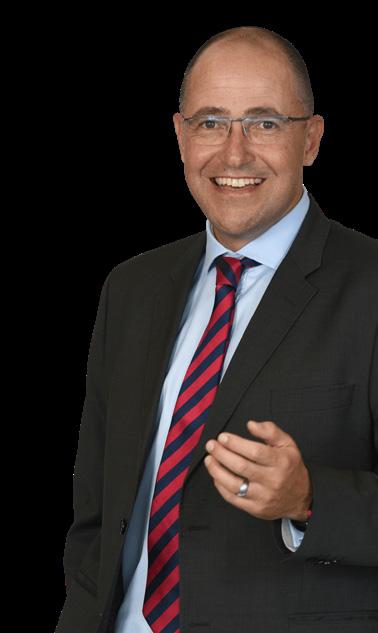
For the last edition of Blue Chip, I wrote an article on the various money issues that typically arise in divorce. That article addressed the division of assets in divorce. A related topic which I address in this article is the treatment of pension interests in divorce.
Pension interests aren’t “assets” in the ordinary sense Pension interests fall in a quirky investment category because they don’t typically qualify as “assets” in the investor’s estate. As we all know:
• They aren’t freely accessible to the investor
• They’re not capable of being transferred
• Creditors can’t attach them
• They bypass the deceased estate on death
Under the circumstances, there’s understandable confusion about how they are treated on divorce. Do divorcing couples have a claim on their soon-to-be ex-spouses’ pension, or not?
Before 1989 (when parliament eventually amended the Divorce Act1) the situation was nothing if not simple: pension interests didn’t come into the equation on divorce. Divorcing couples couldn’t even share their pension interests if they wanted to.
Divorce litigation on the issue ensued between lots of disgruntled, disillusioned divorcing spouses.
The situation since 1989: Section 7(7) and Section 7(8) of the Divorce Act
Eventually, in 1989, parliament intervened and amended the Divorce Act2 to include two new sections. Section 7(7)3 and Section 7(8)4 of the Divorce Act now make it clear that pension interests do have to be considered in divorce. The section contains a deeming provision, unequivocally that the pension interests of a person getting divorced are “deemed” part of their assets to calculate who gets what on divorce. In practical terms: the couple's pension interests must be added to their other assets to calculate the total value of what must be shared on divorce5
It’s important to note, however, that the section creates a legal fiction strictly to do the divorce calculations. It does not give one spouse an automatic right to claim (or share in) the other’s pension interest directly.
At this point, an example might come in handy to better illustrate the practical application and effect of section 7(7) and section 7(8) of the Divorce Act:
Cedric and Cynthia are married in community of property. The assets and liabilities falling into their joint estate (co-owned and jointly managed), include (i) their house; (ii) their mortgage bond;
Section 7(7) of the Divorce Act now makes it clear that pension interests do have to account on divorce. The section contains a deeming provision, which stipulates unequivocally pension interests of a person getting divorced are “deemed” to be part of their assets for of calculating who gets what on divorce. In practical terms: the couples’ pension interests added to their other assets for the purposes of calculating the total value of what must divorce5. It’s important to note, however, that the section creates a legal fiction strictly for of doing the divorce calculations. It does not give one spouse an automatic right to claim the other’s pension interest directly.
At this point, an example might come in handy to better illustrate the practical application section 7(7) and section 7(8) of the Divorce Act:

(iii) all other debt; (iv) their respective cars; (v) their discretionary investments and (v) cash. Their pension interests do not fall into the joint estate.
Cedric and Cynthia are married in community of property. The assets and liabilities falling estate (co-owned and jointly managed), include: (i) their house; (ii) their mortgage bond; debt; (iv) their respective cars; (v) th eir discretionary investments and (v) cash. Their pension do not fall into the joint estate.
Cedric and Cynthia decide to get divorced.
Cedric and Cynthia decide to get divorced.
Before the amendment of the Divorce Act in 1989, their divorce (assuming it didn’t get nasty and involve forfeiture claims and the like), would simply have been a matter of dividing up the joint estate (with a total net asset value of R4 200 000, in this example).
Before the amendment of the Divorce Act in 1989, their divorce (assuming it didn’t get nasty forfeiture claims and the like), would simply have been a matter of dividing up the joint total net asset value of R4 200 000, in this example).
Post 1989, the effect of section 7(7) of the Divorce Act is that Cedric and Cynthia must bring their respective pension interests, for the purposes of determining the total value of what to share in.
Post 1989, the effect of section 7(7) of the Divorce Act is that Cedric and Cynthia must bring into account their respective pension interests, to determine the total value of what they are entitled to share in.
A word of caution here regarding the valuation of pension interests for this purpose: it is note that pension interests must be valued on the basis contemplated by the Divorce Act.

Applying section 7(7) of the Divorce Act to Cedric and Cynthia’s situation, we see that entitled to expect to walk away from the marriage with R5 850 000 in value. At least in and Cynthia now have to agree (or a court will decide for them) how to divide up their investments, such that they each end up with R5 850 000 in value.
Applying section 7(7) of the Divorce Act to Cedric and Cynthia’s situation, we see that they are each entitled to expect to walk away from the marriage with R5 850 000 in value. At least in theory.
Cedric and Cynthia now must agree (or a court will decide for them) how to divide up their assets and investments, such that they each end up with R5 850 000 in value.
Cedric and Cythia are free to agree whatever they like with regard to how they want to assets. One option available to them is for Cedric to transfer a portion of his pension interests as part of their final divorce settlement. But here's the thing with transferring pension divorce: if pension interests are going to need to be transferred, they must be dealt with settlement agreement and divorce order.

Cedric and Cynthia are free to agree on whatever they like regarding how they want to divide up their assets. One option available to them is for Cedric to transfer a portion of his pension interests to Cynthia as part of their final divorce settlement. But here’s the thing with transferring pension interests in divorce: if pension interests are going to need to be transferred, they must be dealt with in the divorce settlement agreement and divorce order.
If pension interests are to be transferred upon divorce, the wording of the settlement agreement and the court order are critical.
Pension funds are authorised6 to transfer a pension interest (or a portion thereof) on divorce, provided that the court order in question meets all the legal requirements. My practical advice
to divorcing clients (who want to transfer pension interests) is that they should get the pension fund in question to approve the proposed wording of their divorce settlement agreement and divorce order, in advance of their actual divorce date. It’s much easier than having to go back to court after the divorce to get the order fixed.
For those of our clients who have emigrated, the court order in question also needs to be made by a South African court. A pension fund member who has emigrated – and subsequently divorces in a foreign country – will have to apply to a South African court to have the divorce order recognised here if he or she wants it to be acted upon by a pension fund here.
The treatment of pension interests in divorce is a rather technical area of law. In this article, I have merely scratched the surface of the topic, but I hope that I have given you some idea of what is involved.
References
1. Divorce Act No. 70 of 1970.
2. The amending Act was the Divorce Amendment Act, No. 7 of 1989.
3. Section 7(7) of the Divorce Act 70 of 1970.
4. Section 7(8) of the Divorce Act 70 of 1970.
5. A word of caution here regarding the valuation of pension interests for this purpose: it is important to note that pension interests must be valued on the basis contemplated by the Divorce Act.
6. In terms of section 7(7) read with section 7(8) of the Divorce Act and section 37D of the Pension Funds Act 24 of 1956.

Hannah Wilson, Director, Simplifi Law
As an analogy to what the fund management sector looks like, one can compare it to the golden shiner, a small, unremarkable fish that moves in shoals and prefers spending time in shady, dark waters. Individual golden shiners are oddly bad at finding shadows. This was demonstrated by Iain Couzin, a Princeton University researcher who placed an individual shiner in a pool with a regular pattern of shadows. It could not navigate its way to the darkness. It was so poor that it seemed to find shadows only by chance.
However, shiners tend to do two things while wandering around aimlessly; they swim together and stop when they find a shadow. If a fish found a shadow it would stop moving and its neighbours would do the same. This is how the rest of the shoal found the shadow. Even though each fish is remarkably bad at discovery, a large group was very good at it. It’s an efficient system and an example of the wisdom of crowds in nature.
This system is not only found in nature but in the modern world too. For instance, the wisdom of crowds is a well-covered behavioural finance topic. Whatever your investment approach or philosophy, we should be able to agree that a wide range of views, research and perspectives add value to the industry. More
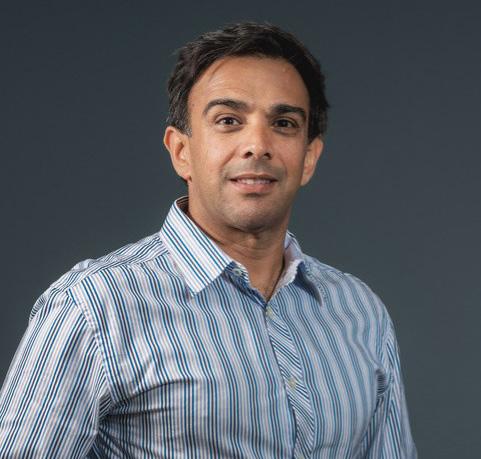
Reza Khan, CEO, Lodestar Fund Managers
independent voices inject fresh insight and opinions to the discussion which leads to better price discovery and more efficient markets. This has been a particular strength of the South African industry; over many decades new firms with unique identities have added their perspectives and views. Certainly, the industry as whole would be in a worse off state without new firms entering the industry. Up to about 10 years ago there has been a constant flow of new firms. Many of whom were considered upstarts and underdogs, and now form “the establishment”.
Back then the industry created opportunities and incentives for the entrepreneurial spirit to flourish for founders of these firms and ultimately it was investors that benefited.
“Show me the incentive and I’ll show you the outcome.” – Charlie Munger
Unfortunately, things have since changed. While lots of attention has been focused on narrowing opportunities in South African markets, what has slipped by unnoticed is how the flow of new firms into the industry has declined significantly. We believe there are many reasons why almost no new entrants have entered the sector recently. These include high startup costs, large corporate remuneration packages and increased specialisation.
Full disclosure, I am the founder of a small asset management firm, so my bias is to say that clients are unwilling to use small firms.
This, in my opinion, misses the larger point that it is easier to ignore small firms if there are so few of us. Rather, the problem is deeper and more structural than a current preference.
We are amidst the consolidation of the industry as the stream of new firms dwindles and the average age of owner-run firms spans multiple decades. This is a fundamental change to the ecosystem that has developed, flourished and allowed clients to meet their investment goals, over time. Investors and advisors should be concerned; the path we are on could resemble the old days where the only options were products from a small number of market behemoths with pricing power and misaligned incentives.
An unlikely group has emerged in the face of increased market concentration. Small black-owned firms that were launched about

10 years ago. These firms began with the early support from institutional investors looking to expand representivity within the industry. The founders were typically young(er) fund managers with a good track record although the current age of these firms means that their leaders are now veterans of several market and business cycles. These are not startup firms anymore but established small businesses. Their longevity also means that their track records bear scrutiny and many have award-winning funds. Irrespective of their success, this group has added an independent voice to an industry that is unfortunately moving in the opposite direction. If this group fails, who could blame new rising stars for climbing the corporate ladder instead of building something new?
Despite many of these firms having long and successful track records with institutional clients, they have not gained traction in the retail market. Small firms have always struggled in this area. I believe that this change in the landscape means that the interests of small fund managers, investors, IFAs and DFMs have now converged. Investors need a well-functioning financial ecosystem, from minnows to apex predators, yet currently, we are seeing virtually no new entrants. Fund manager consolidation means that DFMs and IFAs will struggle to differentiate their investment
strategies and will have few options if or when they need to make changes. Consolidation is great for the profitability of large firms but is unlikely to serve the rest of us well.
The call to action is very simple: look at your portfolio mix and ask if your fund managers represent your long-term best interests or if the selection is contributing to the erosion of the fund manager ecosystem? I appreciate why it feels safe to pick a familiar name, but it is far more prudent to thoroughly evaluate all managers with the right skills across the sector and not just the ones with billboards on the highway and banners at the airport.
Manager research must be fit-for-purpose and not tinged with old biases. It should no longer be acceptable to simply hide behind the weak platitude that an experienced fund manager is “not ready yet”. Nor should a firm’s credibility be dismissed because it requires extra work to explain who they are and why they may be the right option for a client.
Charlie Munger said, “Show me the incentive and I’ll show you the outcome”. The current approach perpetuates an environment without an incentive for anyone to start a new firm. The result will be a scenario where we all rely on the good nature of the very large.
Ever wondered how others in the profession think, what their perspectives are or how they charge clients?
Blue Chip speaks to CERTIFIED FINANCIAL PLANNERS® and gives you the inside scoop.
Kim Lewis, CFP®, Naviganti Financial Planning cc
What are the biggest mistakes that you see clients make?
The biggest mistakes we see clients make are usually related to emotion. People habitually give money away, often money that they cannot afford to family members without understanding – or ignoring – the implications of doing so. In the same vein, clients who do not action the hard, uncomfortable advice or ignore the warnings that we have given them regarding the actions that they are taking do, unfortunately, must face the consequences of these decisions.
What do you enjoy most about being a financial planner?
There are a few things that I enjoy about being a financial planner but mostly it is the personal element of becoming better acquainted with many of our clients. I love getting to know people and watching their stories emerge – it is incredibly rewarding to be part of someone’s journey and struggles when they finally come out on top.

What are the biggest challenges you face as a financial planner?
Globalisation, especially for young people, is a massive problem in the industry and something that I face as a financial planner constantly. The “old way” of advising clients is becoming irrelevant amid a changing landscape where young people are constantly on the move, often do not know what their goals are and have no idea where they will end up. This, combined with an increasingly redundant “retirement” plan because people will need to work longer and are going to live longer, means that advising and planning for young people in different jurisdictions is incredibly challenging. This is something that we are extremely aware of, and we are working on, and have made strides towards, implementing a plan better suited to the needs of these individuals.
Gareth Collier, CFP®, Director, Crue Invest
What are the biggest mistakes that you see clients make?
Where clients have had bad or unsuitable experiences with advisors, products and/or investment vehicles used, there is a common thread that they did not question the advisor to ensure they fully understood and agreed with the implemented recommendations. This can often be a case of not wanting to appear ignorant or dismissive of the advice. While a certain level of trust is ultimately needed, clients should be comfortable and encouraged to ask whatever questions they may have and as often as needed to be comfortable with their portfolio.
What do you enjoy most about being a financial planner?
Being able to make a positive impact on individuals, their families and businesses is such a joy. We try never to lose sight of the fact that we are invited into deeply personal spaces of people’s lives and have a duty and responsibility not to allow our own biases or personal opinions to affect the appropriateness of our advice. Some conversations require us to be encouraging and supportive, while others require us to be firm and help redirect certain behaviours or thought patterns. Knowing that the work you do truly makes a difference in not only the lives of your clients but also has a secondary impact on those who go on to participate within other areas of their lives is a very fulfilling thought.
What are the biggest challenges you face as a financial planner?
Most directly it is how the term financial planner is so loosely defined and liberally applied. Since anyone, from those with two weeks of product training up to those with commerce degrees, postgraduate qualifications and board certifications, uses the
term financial planner, it does create inconsistent experiences and expectations for clients and consumers.
There is an ever-growing number of people entering and improving within the general industry to turn it into the profession it deserves to be however; there are still too many large institutional influences that treat our young profession as a glorified sales industry. When your focus and incentives are built around production figures and no attention or recognition is given to the relationships created with clients, the bulk of the interactions will remain centred around what can be earned from a prospective client rather than what can be built with them over time.

Terence Tobin, CFP®, Director and Founder, Rich Ideas Group
What are the biggest mistakes that you see clients make?
Thinking they know it all. I love it when clients have done research and due diligence, but sadly their data sample size is often limited to their own lived experiences or the lived experiences of those around them. Using a Certified Financial Planner® professional who will help them see what they can’t see and help them zoom out to understand the bigger picture has incredible value. It often takes years for them to discover the true value of a financial professional.
What do you enjoy most about being a financial planner?
Stories. Everyone has a story and I love to hear your story. Your story has led you to where I find you today and I want to be your
This profession is simultaneously the cruellest out there and yet incredibly rewarding.
co-author and help you write the story of your future. People are amazing and complex; they keep me intrigued, curious and on my toes daily.
This profession is simultaneously the cruellest out there and yet incredibly rewarding. The rewards should not be measured on the financial success of your FSP but on the positive outcomes you help your clients reach. That is my reward.
What are the biggest challenges you face as a financial planner?
Regulation. Financial services is one of the most regulated industries in South Africa, and ensuring one is always up to date with the requirements of the regulatory bodies is exceptionally time-consuming. Previously, the challenges included recruiting the right staff, but that has been taken care of now.


In the rapidly evolving landscape of the digital era, the application of big data has become a cornerstone for transformative strategies across various sectors, particularly within the insurance industry.
Big data presents unparalleled opportunities for deriving insightful patterns, trends and associations, especially concerning human behaviour and interactions. This article explores how South African insurance companies leverage big data to enhance strategic decision-making and overcome challenges unique to the region.
Big data, marked by its vast volume, velocity, variety, veracity and value, allows for the generation of insights that can significantly influence business strategies and operational efficiencies. This multifaceted nature of big data supports a nuanced understanding of risk factors, customer segmentation and market trends, which enhances insurers’ decision-making capabilities.
How is big data shaping governance, risk and regulatory compliance (GRC) practices in this industry?
Enhanced risk management. Big data enables insurers to perform sophisticated risk assessments by integrating and analysing vast amounts of data from various sources. This includes traditional data like claims histories and policyholder information, as well as unstructured data from social media, IoT devices and other
digital interactions. By leveraging predictive analytics, insurers can identify potential risks before they materialise, allowing for proactive risk management. For example, data from telematics devices can be used to assess driving behaviours and adjust premiums accordingly, thereby reducing risk exposure.
Improved compliance monitoring. Compliance with regulatory requirements is a major concern for South African insurers, especially given the evolving nature of financial regulations. Big data tools enable continuous monitoring of compliance data, helping insurers stay ahead of regulatory changes and avoid penalties. Advanced analytics can automate the tracking of compliance across different functions, highlighting anomalies or discrepancies that could indicate breaches or noncompliance. This real-time monitoring is crucial in environments like South Africa, where regulations such as the Protection of Personal Information Act (POPIA) impose strict guidelines on data privacy.
Streamlined reporting processes. Regulatory reporting is a time-consuming process that requires accuracy and timeliness. Big data technologies facilitate streamlined reporting by automating data collection and report generation. This reduces the likelihood of errors and ensures that reports are completed on schedule, which is particularly important in meeting the requirements set

by regulatory bodies like the Financial Sector Conduct Authority (FSCA) in South Africa. Automated reporting also frees up resources, allowing staff to focus on more strategic tasks.
Advanced fraud detection. Fraud detection is a critical component of GRC. Big data analytics improve the ability to detect and prevent fraud by analysing patterns and trends across large datasets. For instance, machine learning models can identify unusual claims or policy applications that deviate from normal patterns, triggering alerts for further investigation. This capability not only helps in mitigating financial losses but also plays a vital role in maintaining the integrity of the insurance sector.
Decision support for governance. Governance in the insurance industry encompasses the frameworks and processes that ensure the organisation is managed in a way that is ethical, responsible and aligned with business objectives. Big data aids governance by providing executives with comprehensive insights into operations, market conditions and customer needs, facilitating better decisionmaking. Data-driven governance supports strategic planning and helps insurers adapt to changing market dynamics while maintaining robust internal controls and oversight.
Enhanced transparency and accountability. The integration of big data tools increases transparency within insurance organisations by providing clear, traceable audit trails of data
handling and decision-making processes. This transparency is crucial for both internal accountability and external audits. It also builds trust among policyholders and regulatory bodies, as insurers can easily demonstrate their compliance and ethical handling of both business operations and customer data.
In the insurance sector, governance, risk and compliance present a set of complex challenges that can impact the effectiveness of these functions. Here are some of the main challenges experienced in the sector:
Regulatory compliance and changes. One of the most significant challenges is keeping up with frequent changes in regulations. Insurance companies operate in a highly regulated environment where laws and standards can vary significantly between jurisdictions and are often subject to change. For instance, changes in data protection laws such as the Protection of Personal Information Act (POPIA) in South Africa require insurers to continuously update their policies and systems. Compliance requires not only understanding these laws but also implementing processes that can swiftly adapt to new requirements.
Data management and security. With the increasing reliance on big data for risk assessment and customer management, insurers face the challenge of managing vast amounts of data while ensuring privacy and security. The risk of data breaches and cyber-attacks is a constant threat, with potentially severe financial and reputational consequences. Ensuring robust cybersecurity measures and data governance policies that comply with legal standards is a continuous challenge.
Integration of technology. While technology can streamline compliance and risk management processes, it also poses challenges in terms of system compatibility, employee training and the initial financial outlay. Moreover, there is the ongoing task of maintaining and updating technological solutions to keep up with both new regulatory requirements and advancing cyber threats.
Fraud detection and prevention. Fraud remains a pervasive issue in the insurance industry, encompassing everything from claims fraud to internal financial fraud. Developing effective systems to detect and prevent fraud, particularly in an age where fraudulent schemes are becoming more sophisticated, is a major challenge. This requires continuous investment in advanced analytics and fraud detection technologies.
Resource constraints. Many insurance companies, especially smaller ones, face resource constraints that can affect their GRC functions. Allocating adequate budget and manpower to ensure compliance, manage risks and maintain governance standards without compromising other business operations is a balancing act. This can limit their ability to invest in the best technologies or hire the necessary expertise.
Cultural and organisational challenges. Establishing a culture of compliance and risk awareness across all levels of an organisation is challenging. Employees at every level must understand the importance of GRC and how they contribute to
these areas. This involves ongoing training and communication, as well as a clear demonstration from leadership that GRC is a priority.
Quantifying and managing risks. Insurance companies must predict future risks based on available data, which can sometimes be incomplete or inaccurate. This uncertainty can complicate risk management strategies and insurance product pricing.
Ethical and reputation risks. The insurance sector is highly susceptible to reputational damage arising from non-compliance, ethical breaches or poor handling of governance. Companies must navigate these challenges while maintaining trust with clients and regulators. Any failure can lead to significant reputational damage that can affect the company long-term.
Identifying, quantifying and managing risks proactively can be challenging due to the uncertain nature of risk itself.
Looking forward, the integration of AI and IoT with big data analytics is set to transform the South African insurance sector further. These technologies will enable more sophisticated risk management solutions and more personalised customer service, propelling the industry towards a more data-driven future.
In the South African insurance sector, big data is transforming GRC by enhancing risk management capabilities, improving compliance and reporting efficiency, advancing fraud detection methods, supporting effective governance and increasing transparency and accountability. As the volume and variety of data continue to grow, the strategic implementation of big data technologies will be vital for insurers to navigate the complex landscape of regulations and risks effectively.
References
1. Afrank, A., Bell, M., Kennedy, O., Upton, J. & Yang, M. 2023. How the Internet of Things (IoT) is Adding Proactivity to Insurance.
2. Alalawneh, A.A. and Alkhatib, S.F., 2021. The barriers to big data adoption in developing economies. The Electronic Journal of Information Systems in Developing Countries, 87(1), p.e12151.
3. Al-Qirim, N., Rouibah, K., Serhani, M.A., Tarhini, A., Khalil, A., Maqableh, M. & Gergely, M. 2019. The strategic adoption of big data in organizations. In Managerial perspectives on intelligent big data analytics (pp. 43-54). IGI Global.
4. Arumugam, S. & Bhargavi, R. 2019. A survey on driving behavior analysis in usage based insurance using big data. Journal of Big Data, 6, pp.1-21.
5. Belhadi, A., Abdellah, N., & Nezai, A. 2023. The effect of big data on the development of the insurance industry. Business Ethics and Leadership, 7(1), 1-11.
6. Bhardwaj, M. and Agarwal, S., 2022. Decision-making optimisation in insurance market using big data analytics survey. In Big Data Analytics in the Insurance Market (pp. 57-80). Emerald Publishing Limited.
7. Bischof, C. and Wilfinger, D., 2019. Big data-enhanced risk management. Transactions of FAMENA, 43(2), pp.73-84.
8. Bohnert, A., Fritzsche, A. & Gregor, S. 2019. Digital agendas in the insurance industry: the importance of comprehensive approaches. The Geneva Papers on Risk and Insurance. Issues and Practice, 44, 1–19.
9. Cappiello, A. 2020. The technological disruption of insurance industry: A review. International Journal of Business and Social Science, 11(1), pp.1-11.
10. Chen, H., Chiang, R.H., & Storey, V.C. (2012). Business intelligence and analytics: From big data to big impact. MIS Quarterly, pp.1165-1188.
11. Gandomi, A., & Haider, M. (2015). Beyond the hype: Big data concepts, methods, and analytics. International Journal of Information Management, 35(2), pp.137-144.
12. Laney, D. (2001). 3D data management: Controlling data volume, velocity, and variety. META Group Research Note.
13. Manyika, J., Chui, M., Brown, B., Bughin, J., Dobbs, R., Roxburgh, C., & Hung Byers, A. (2011). Big data: The next frontier for innovation, competition, and productivity. McKinsey Global Institute.

Vuledzani Dangale, CFP®, MBA Head: Regulatory Implementation and Monitoring, SARLSA, Liberty Group South Africa








As a Financial Adviser, you can help your clients bounce back by giving them and their families peace of mind that, with our Disability Cover, their income will be secured should they become temporarily or permanently disabled. Last year alone, as part of R6.72 billion paid out in Personal Life Insurance Cover claims, we supported over 7 500 claimants who insured their income.
A life covered is a life lived. Liberty Disability Cover


